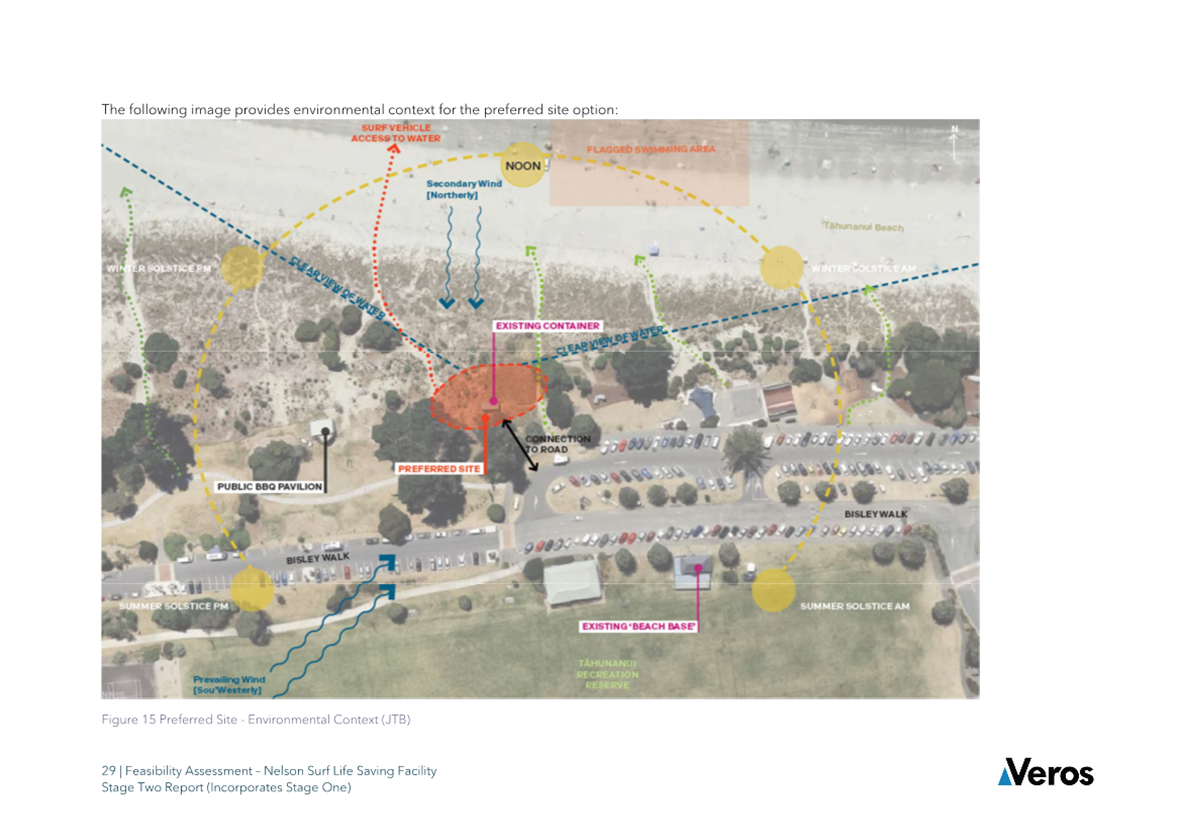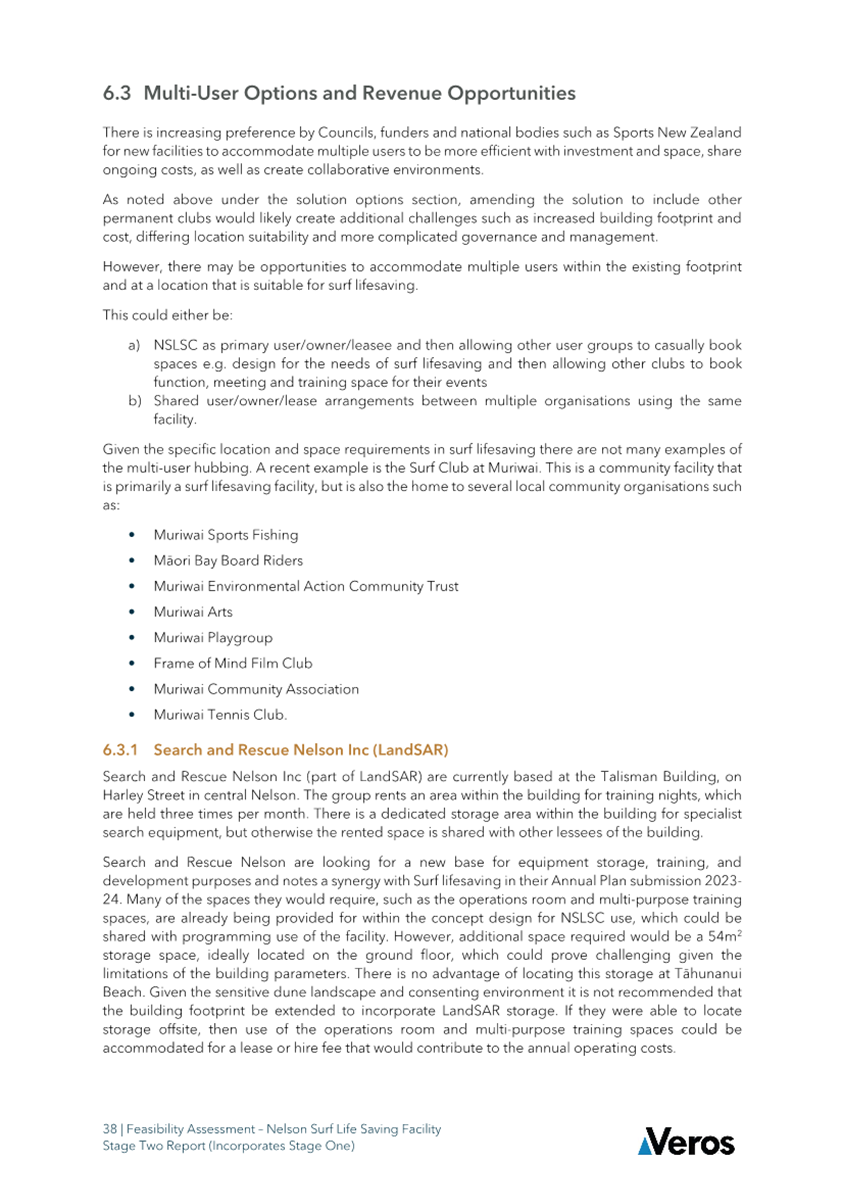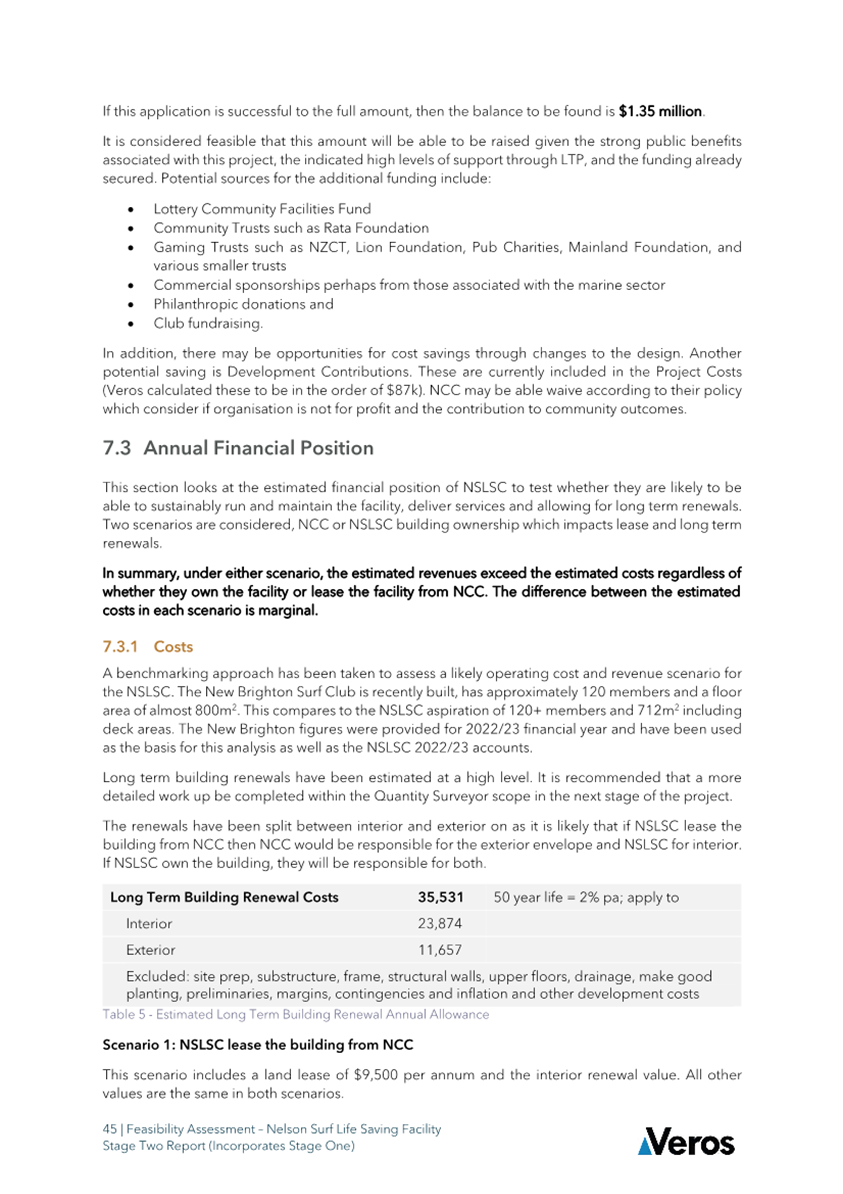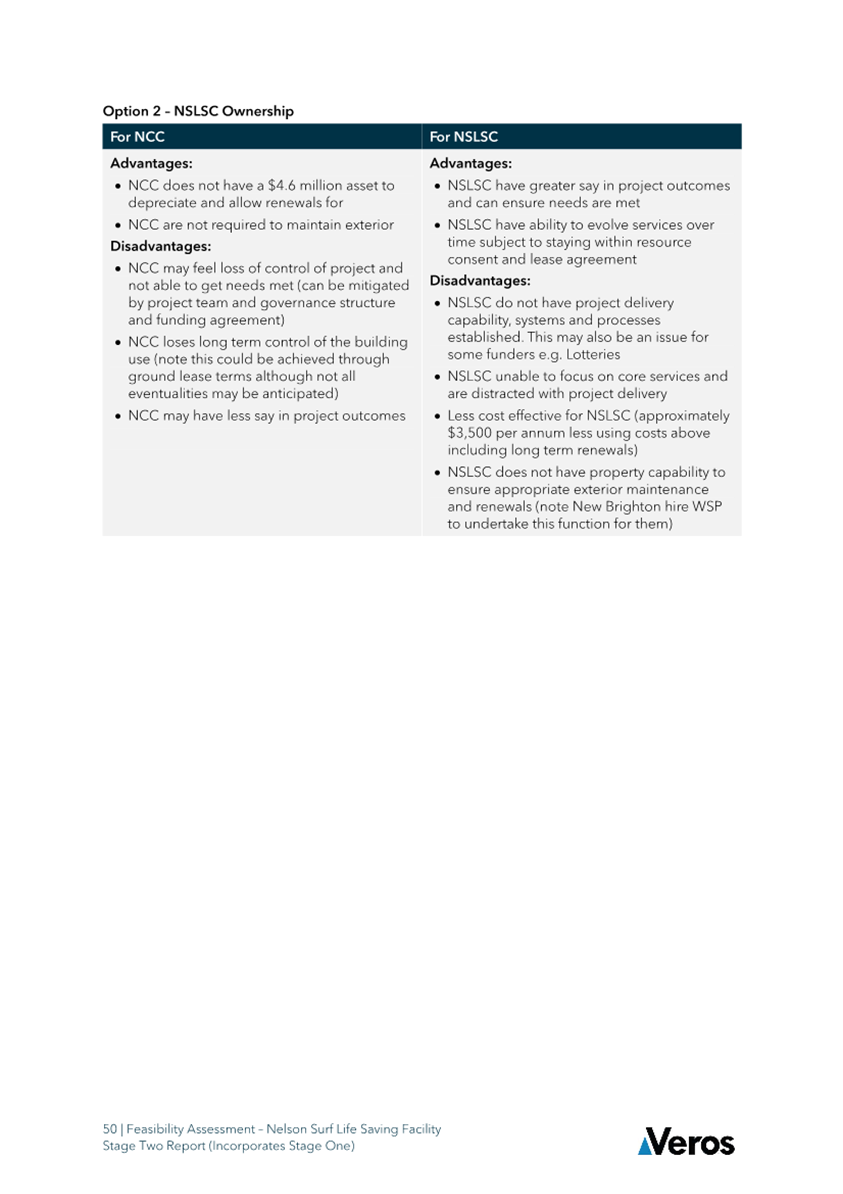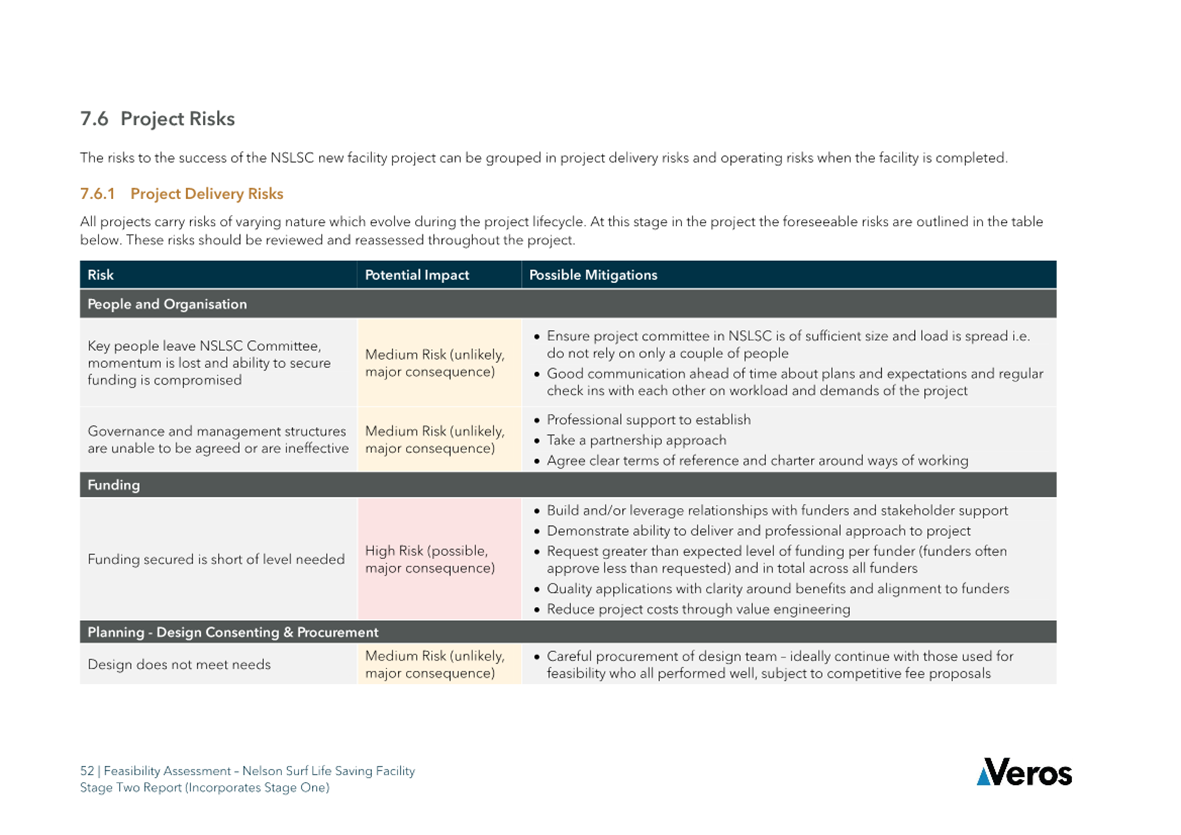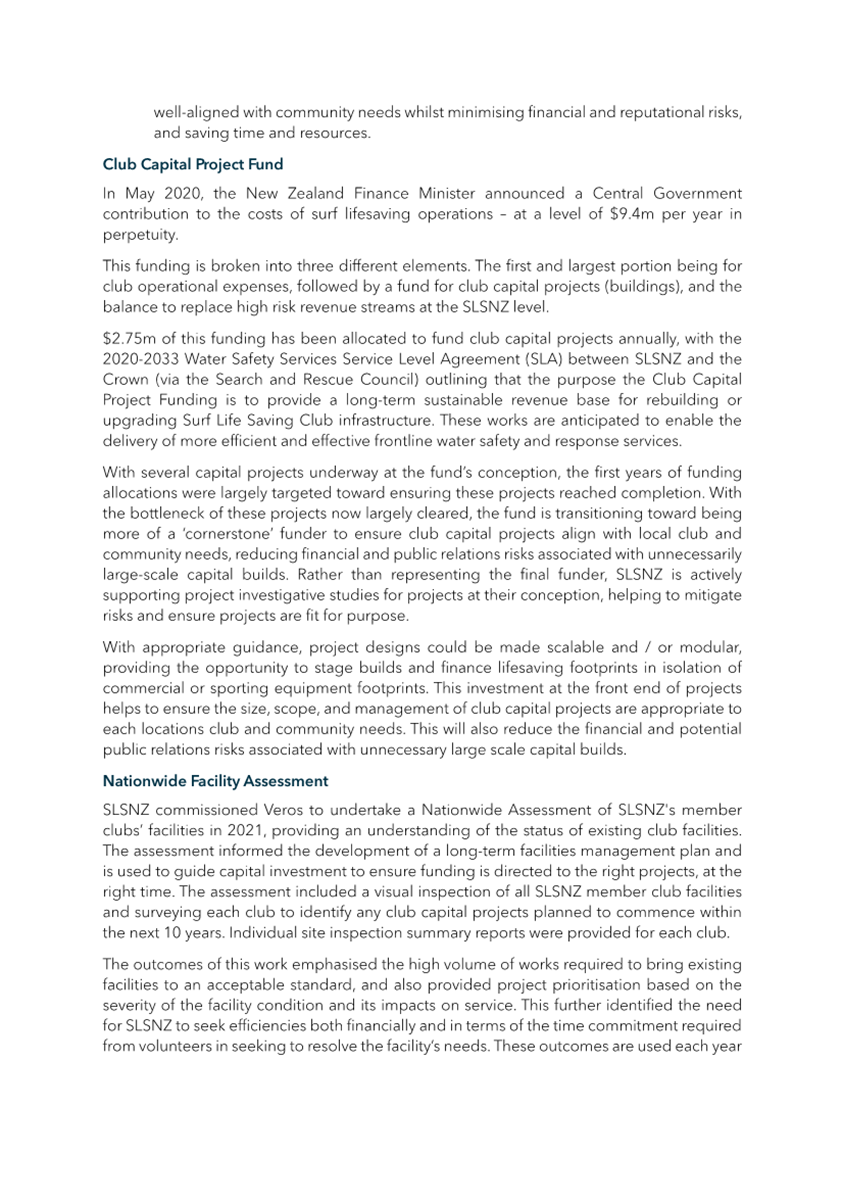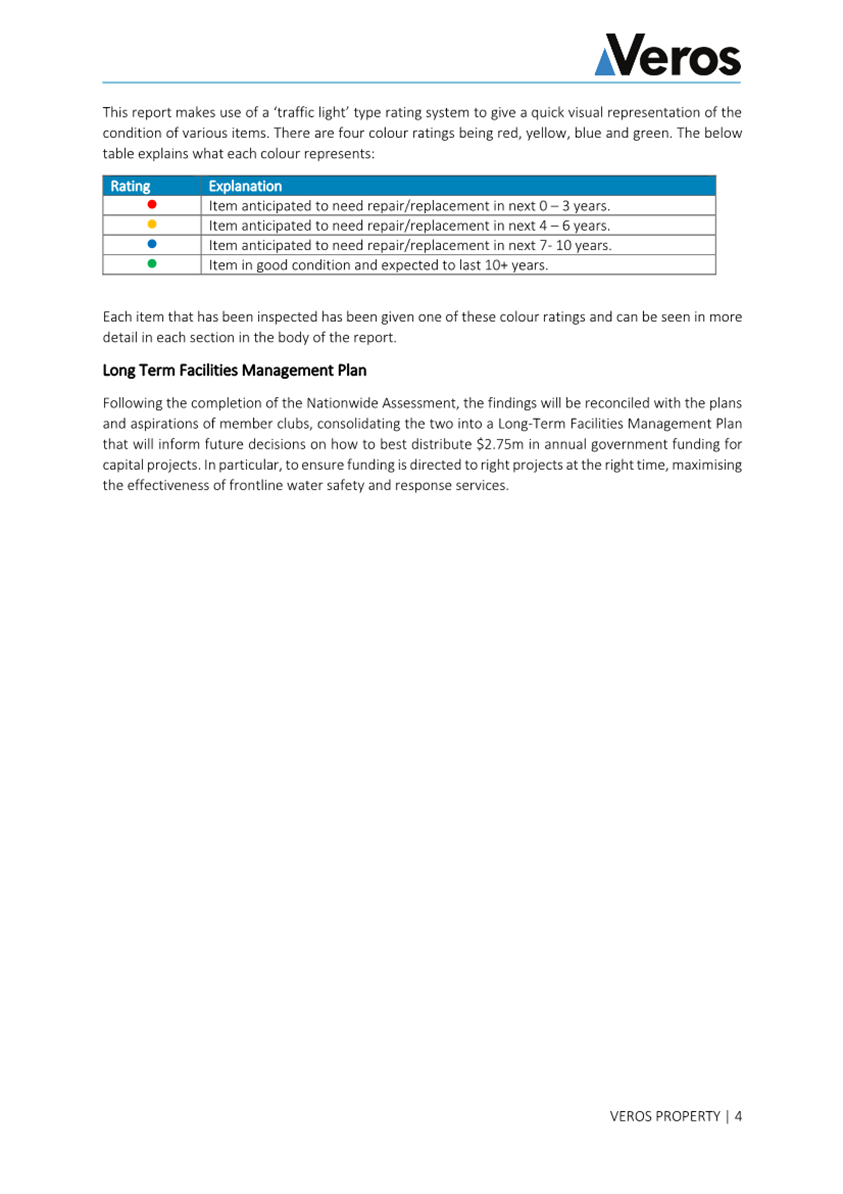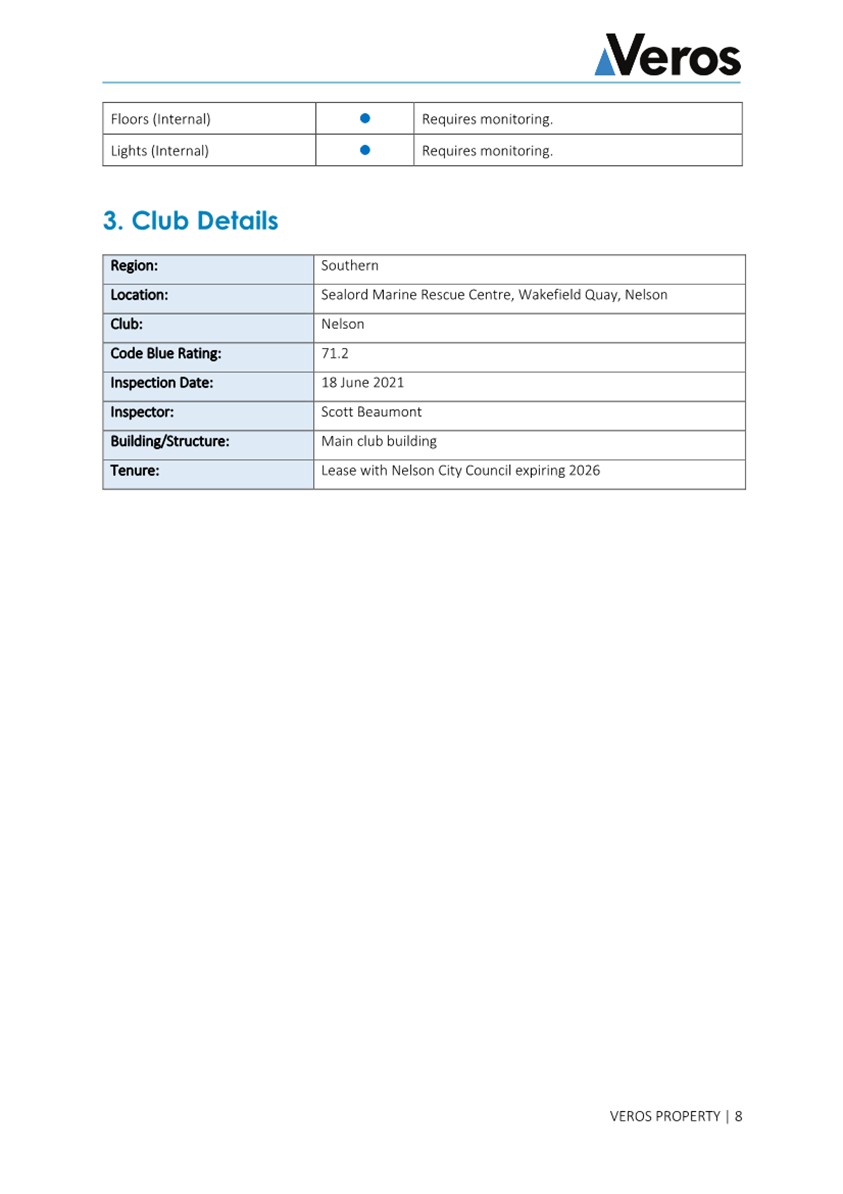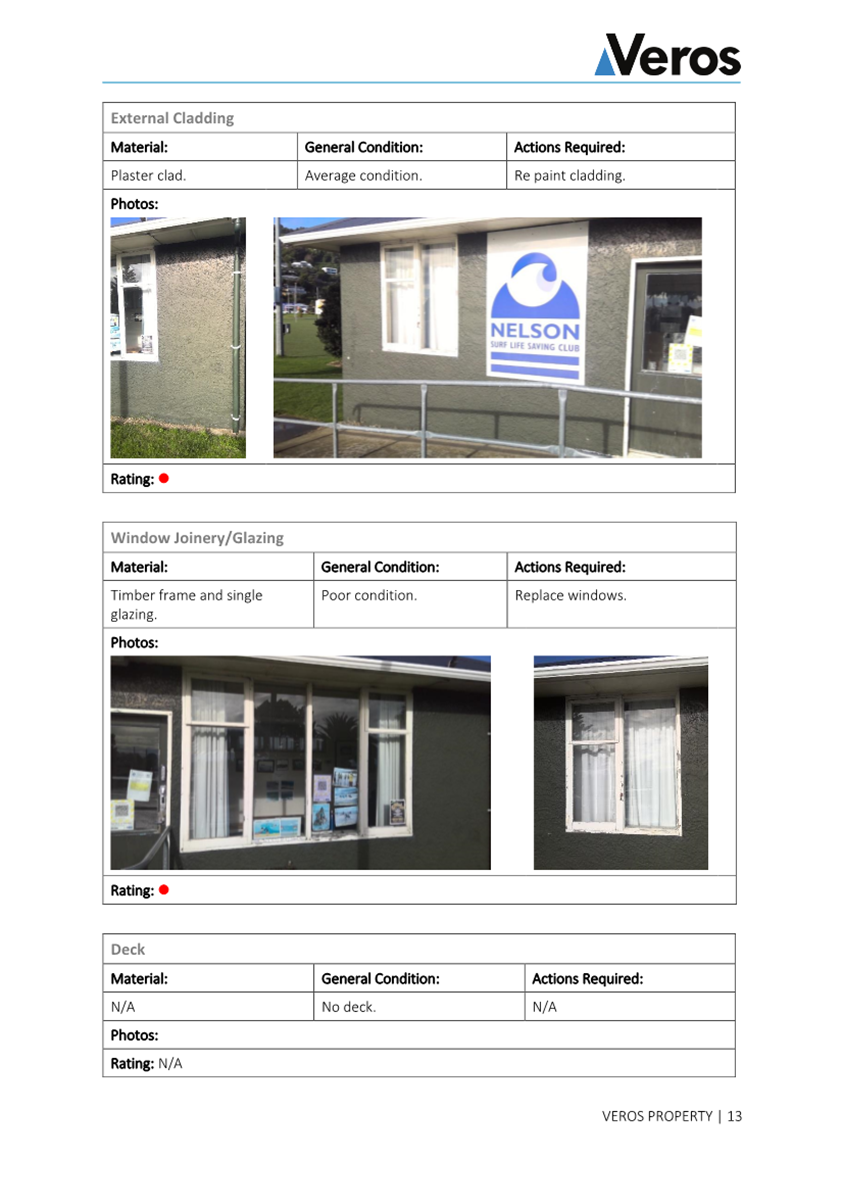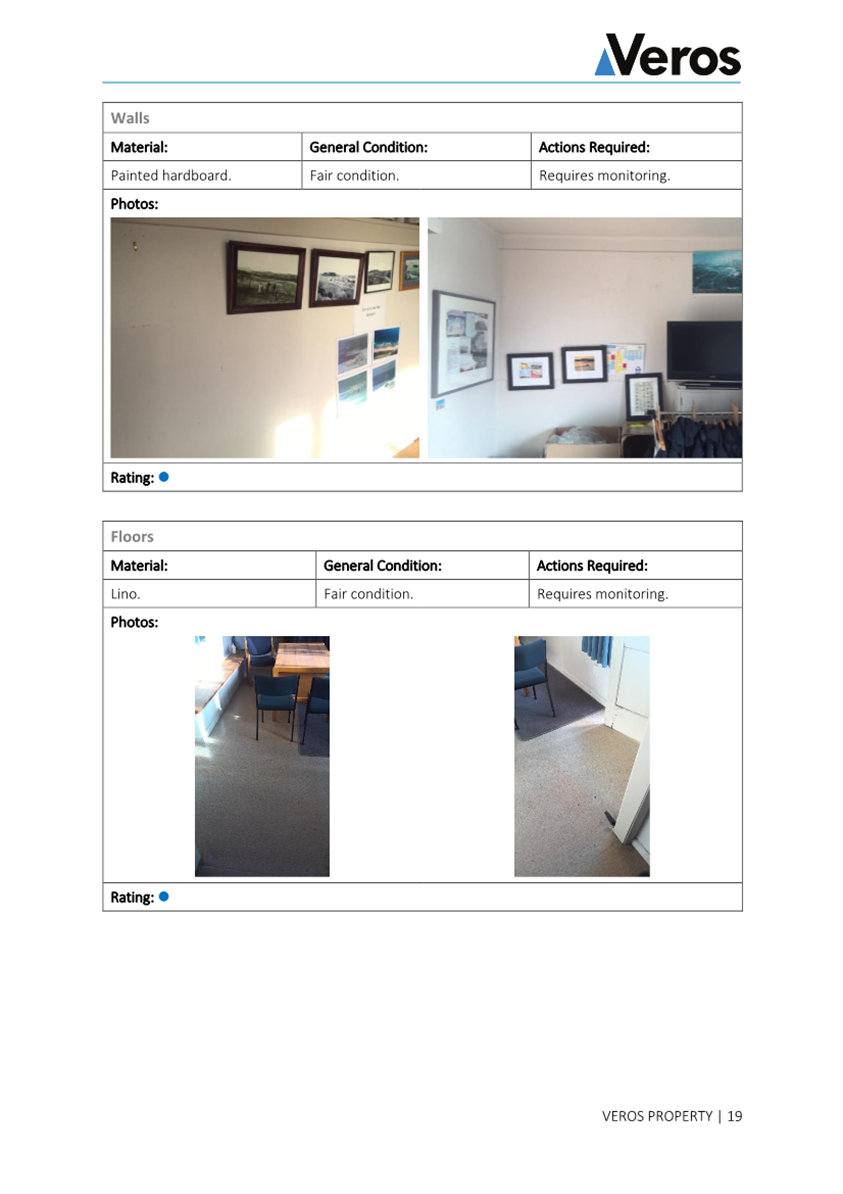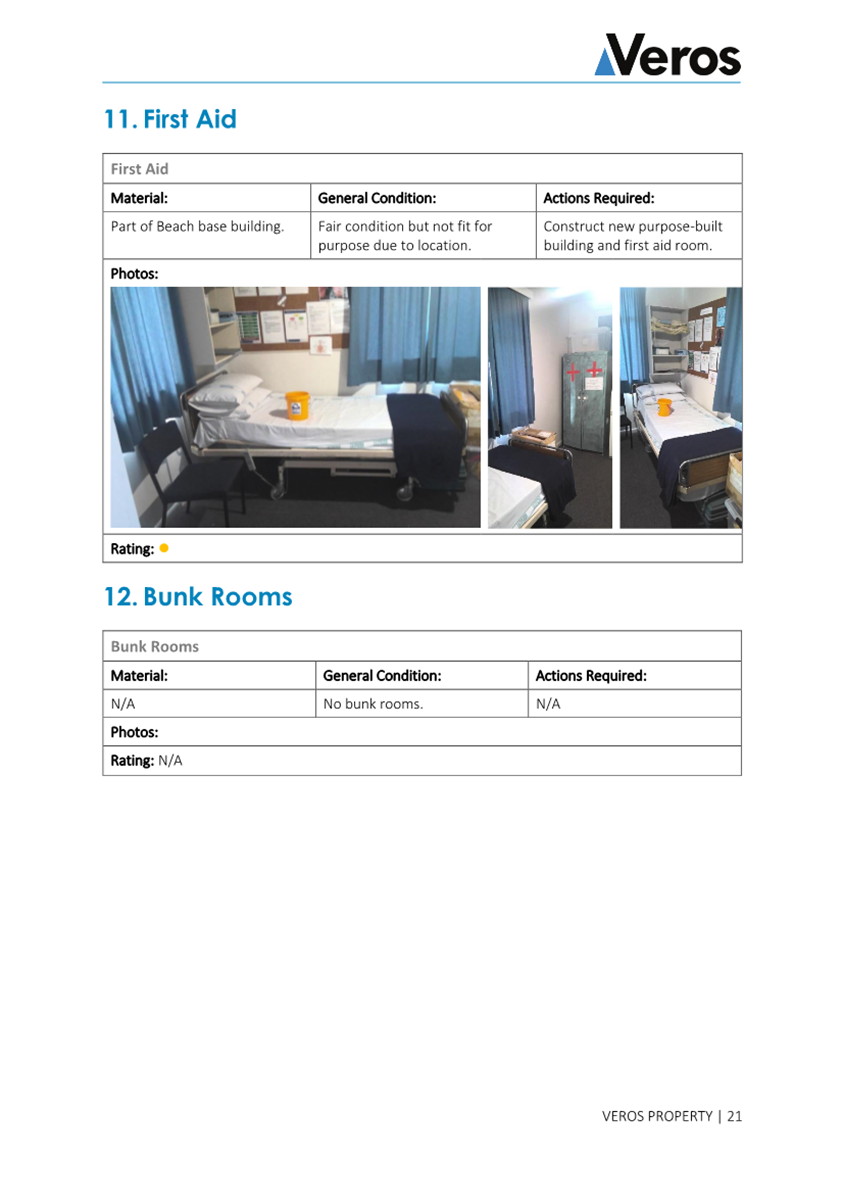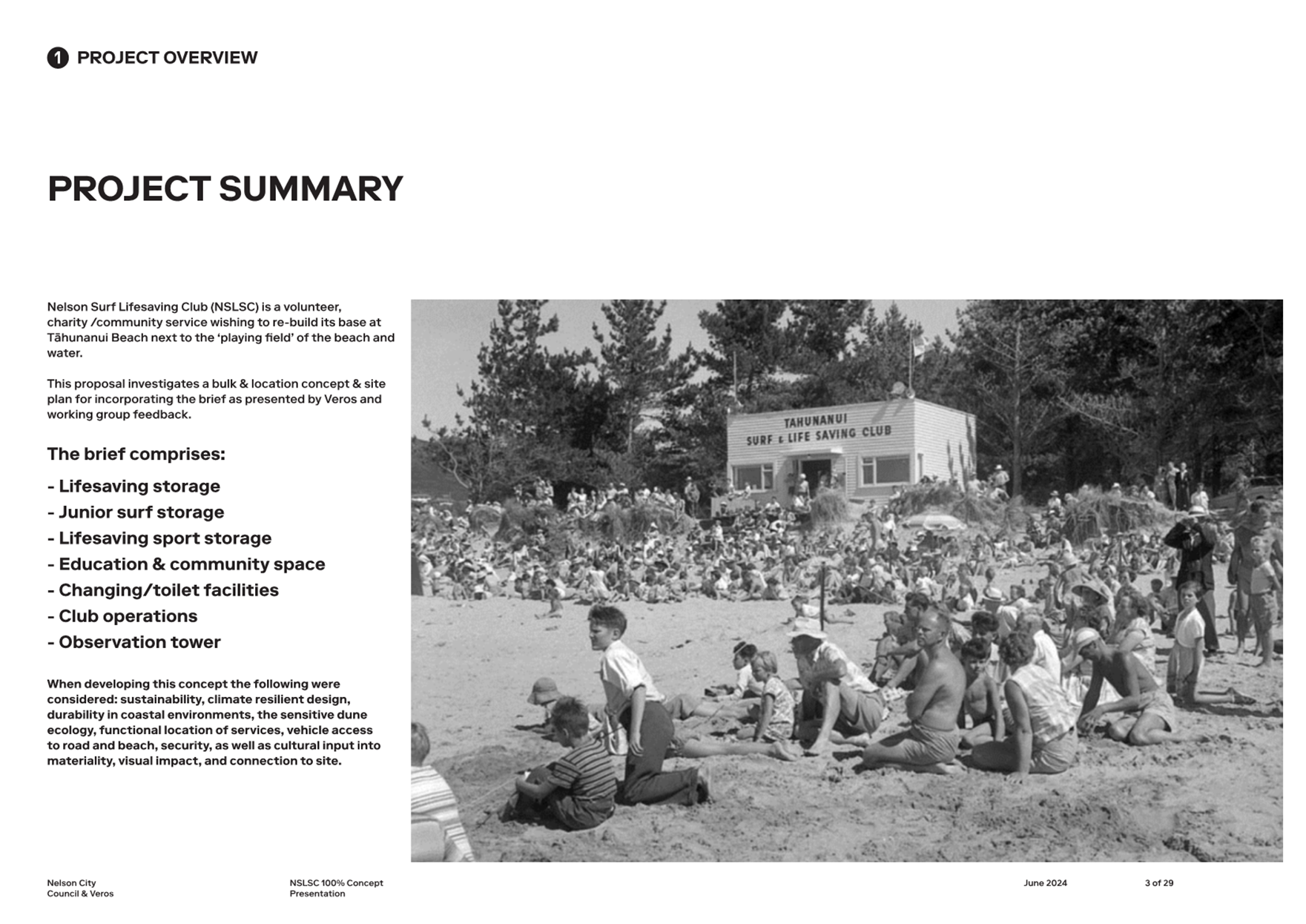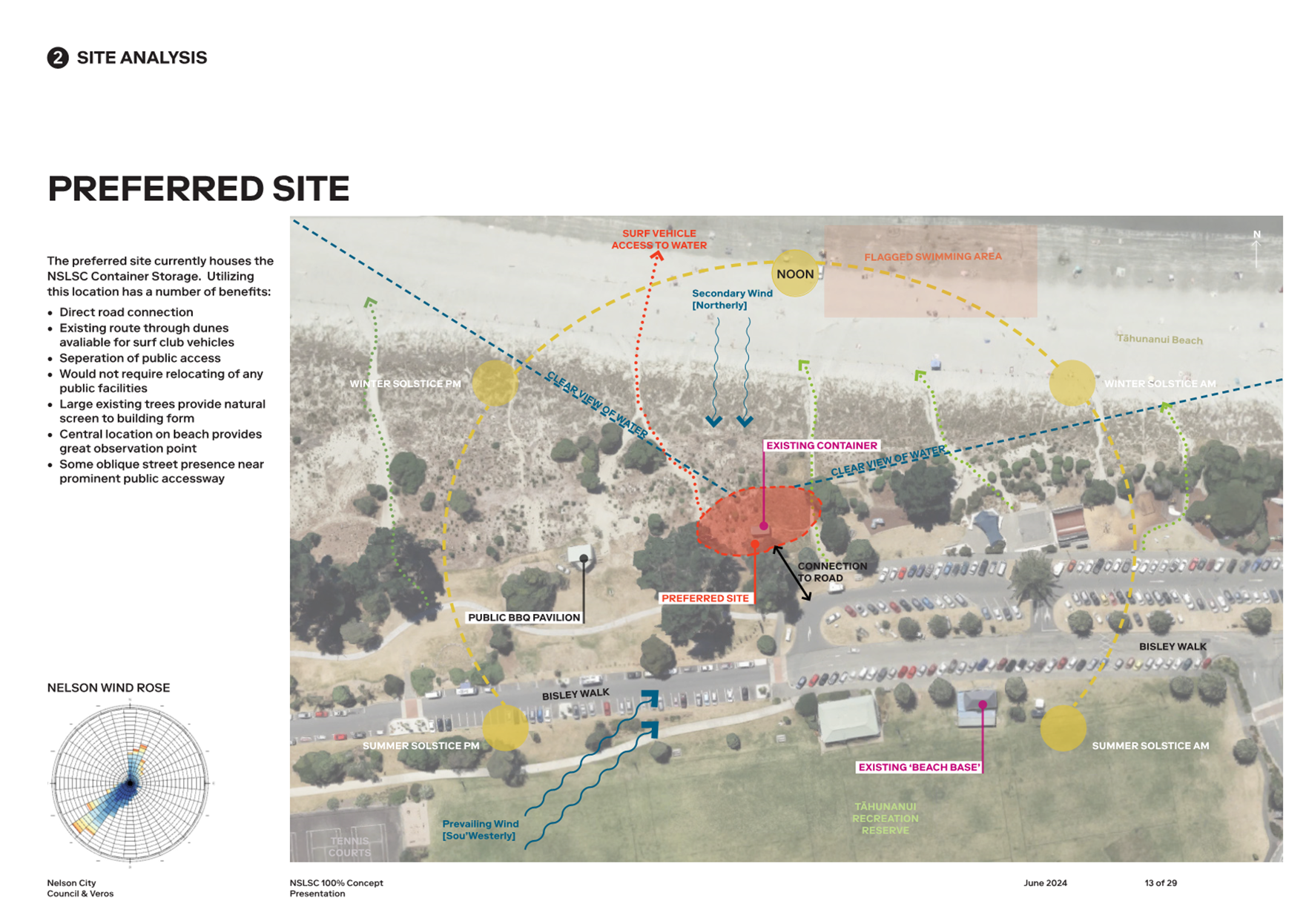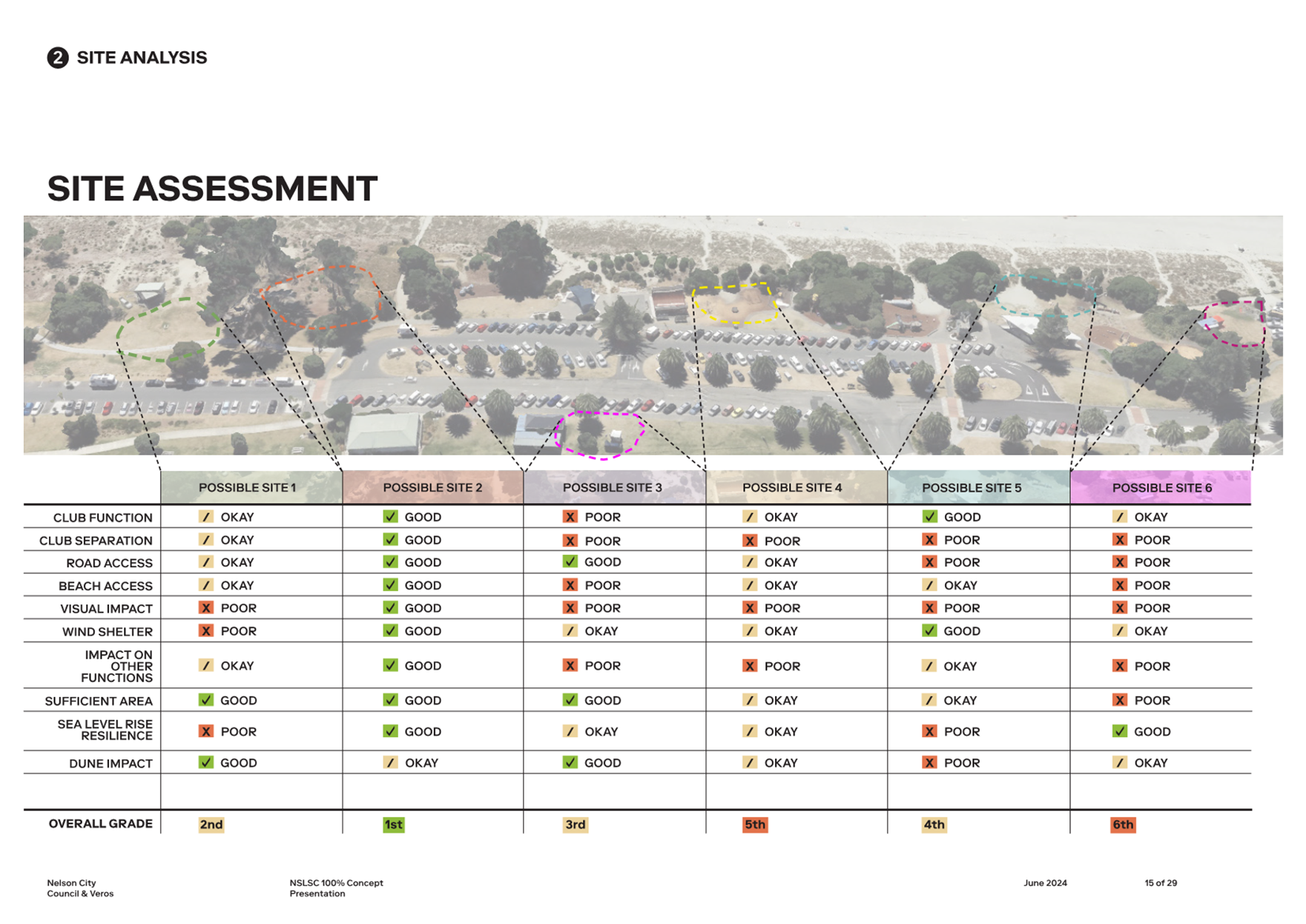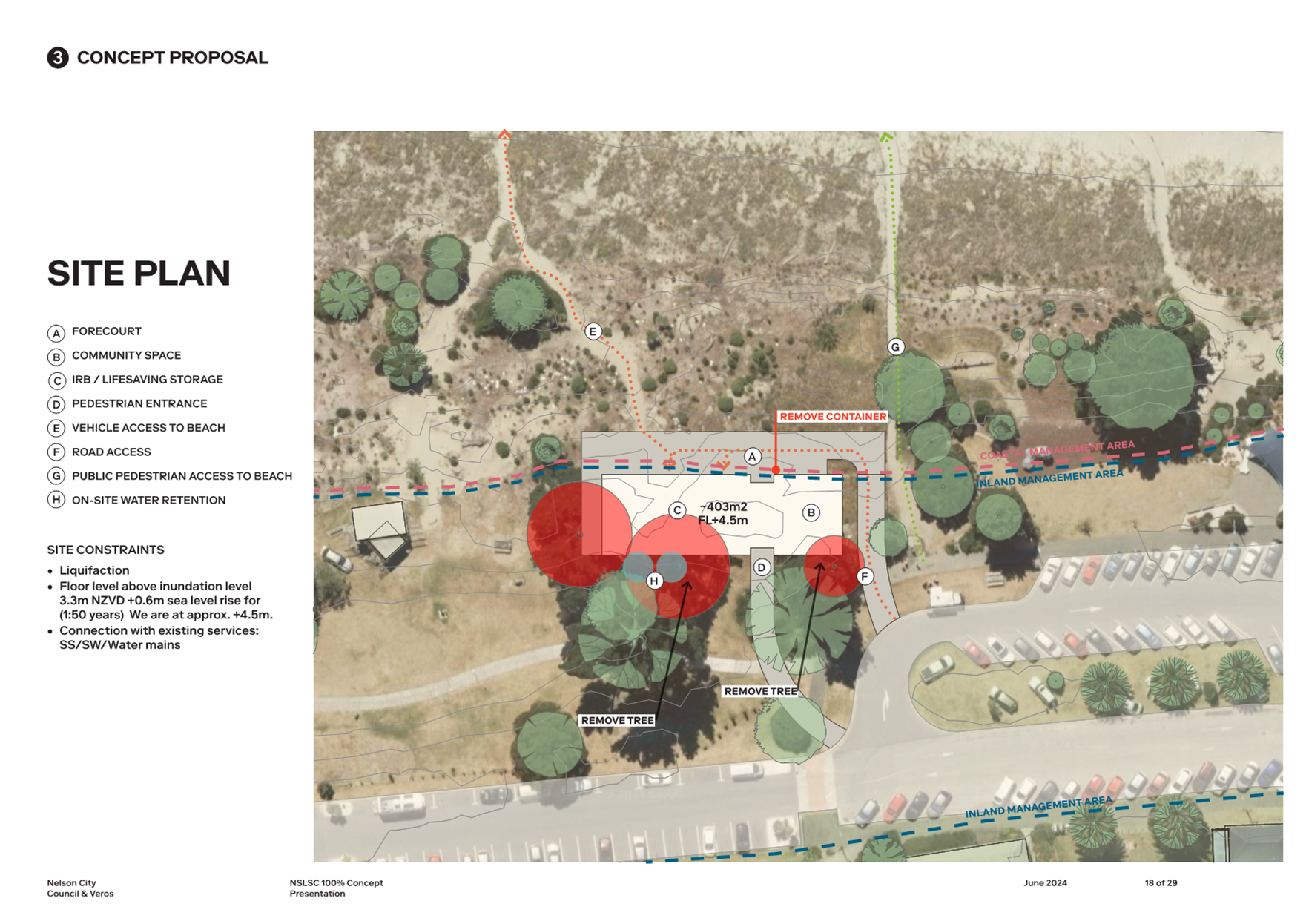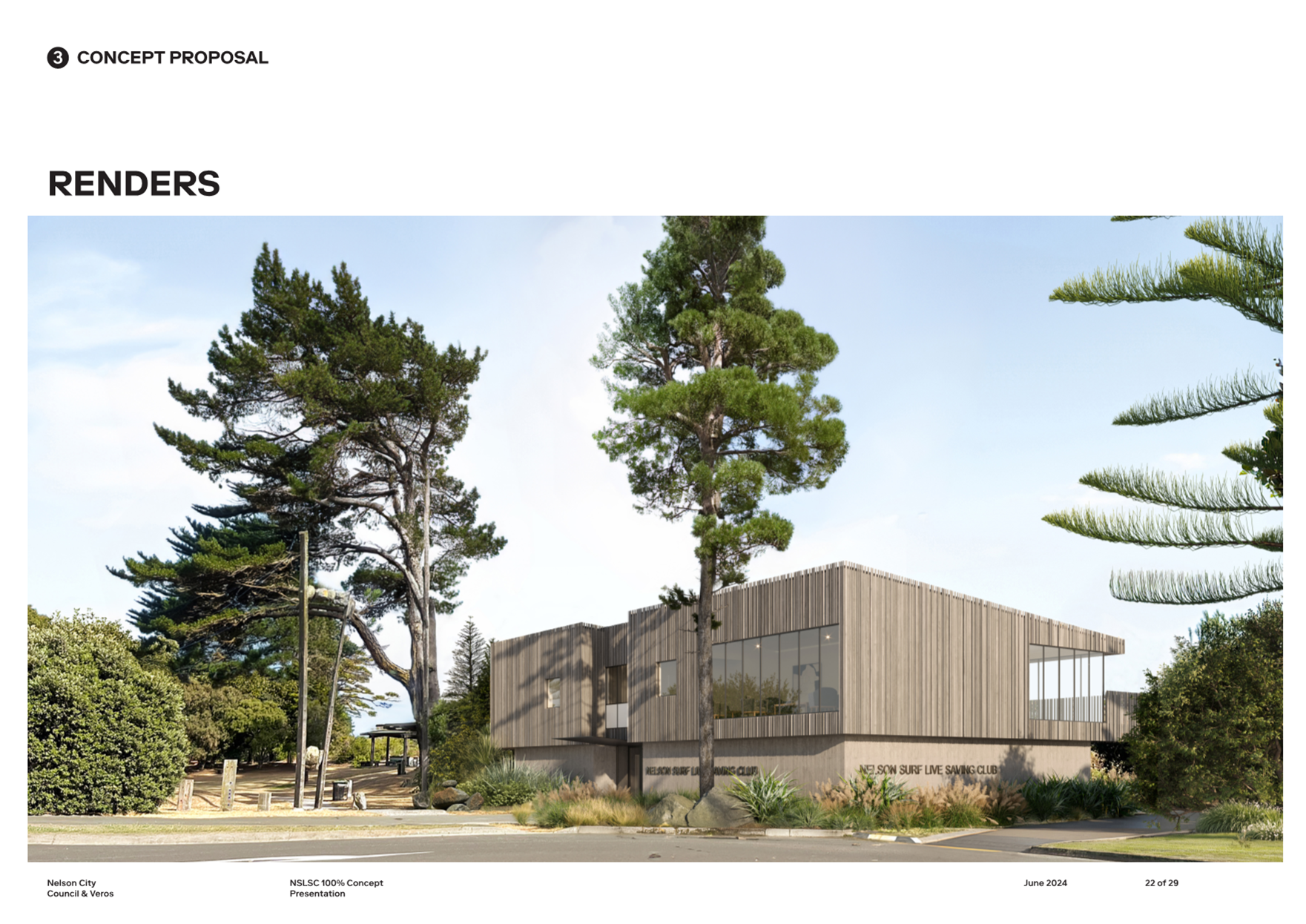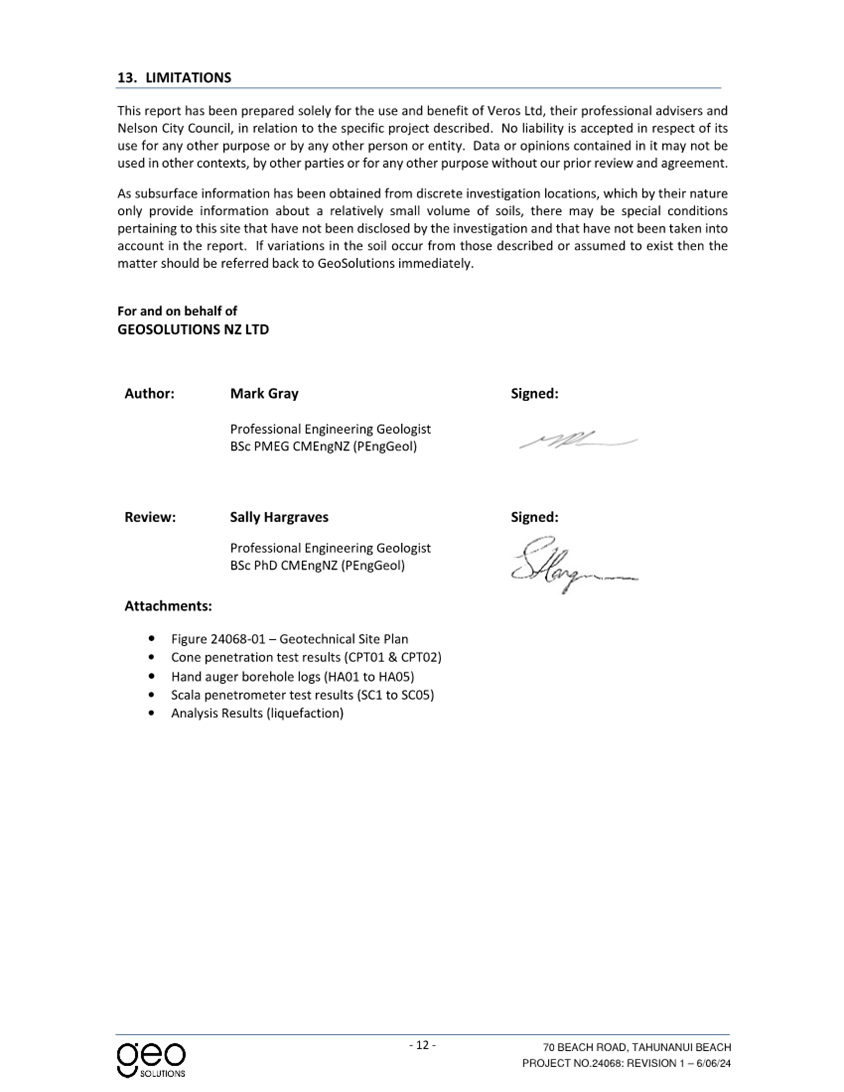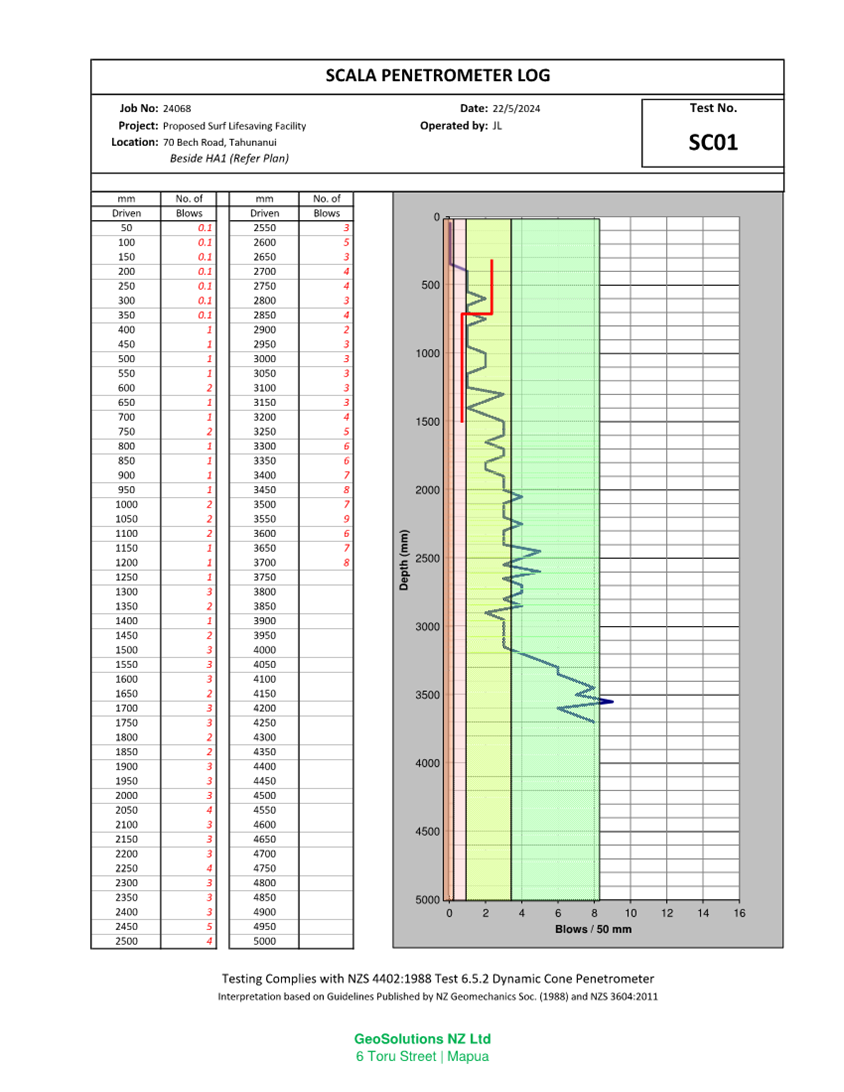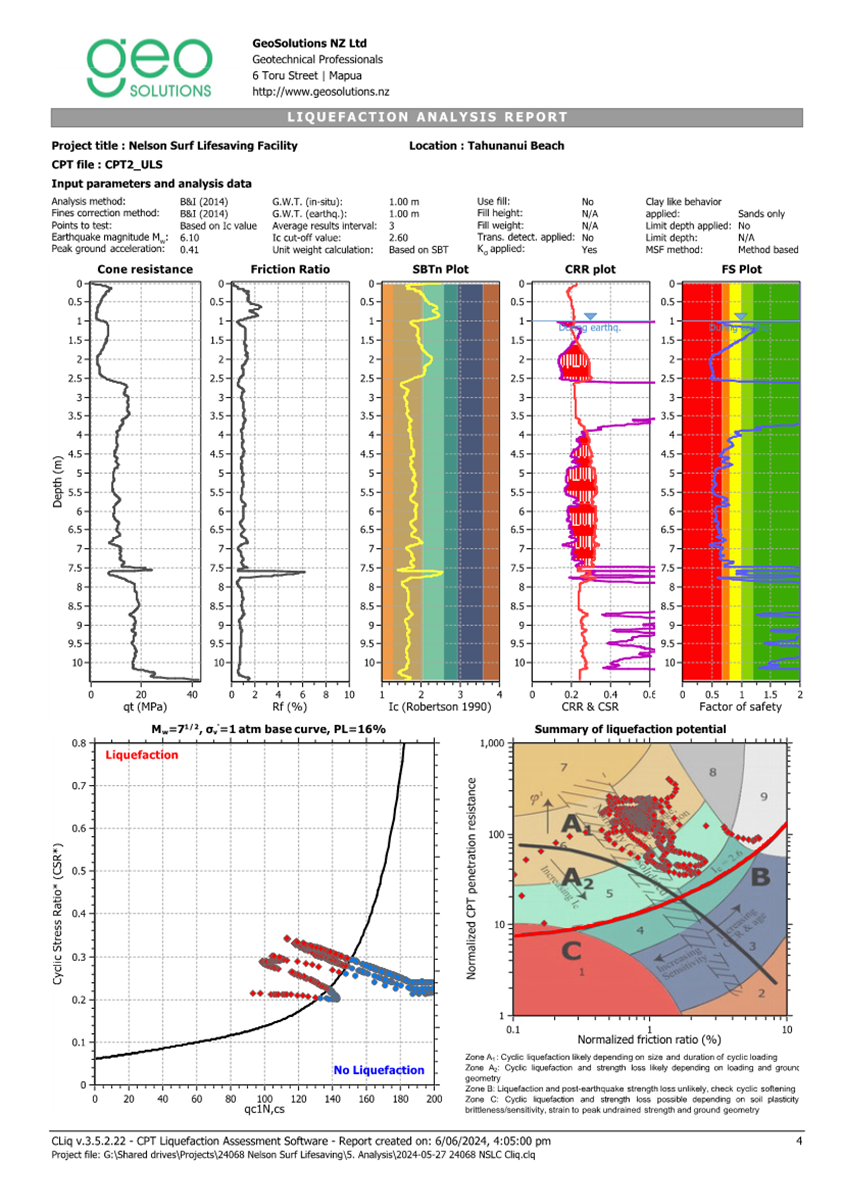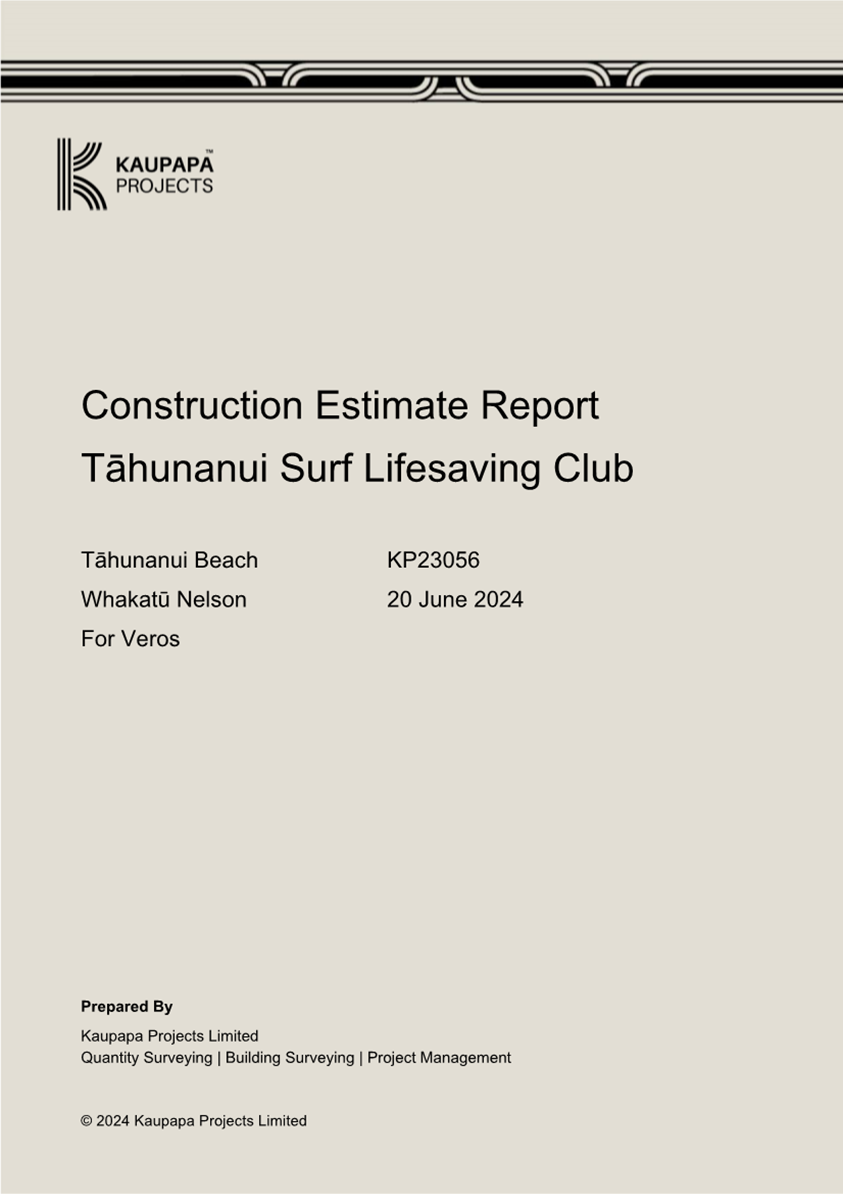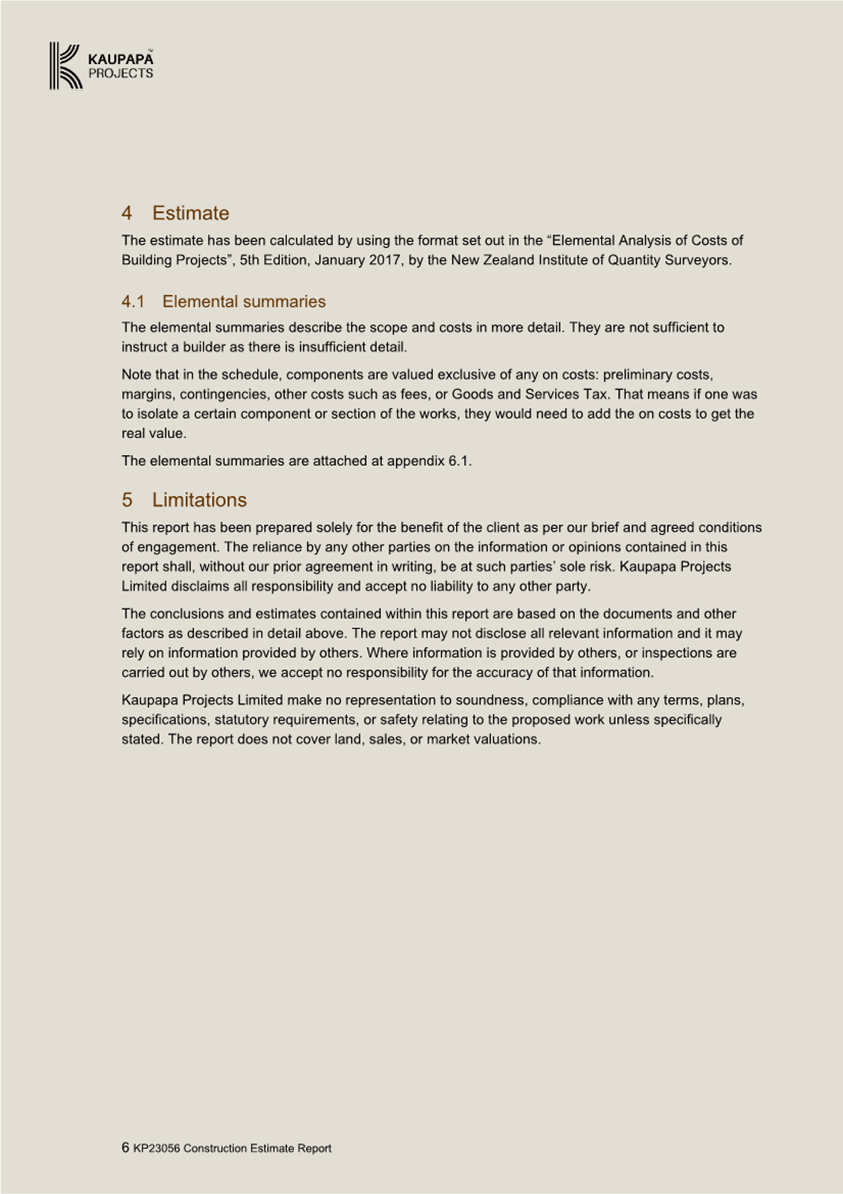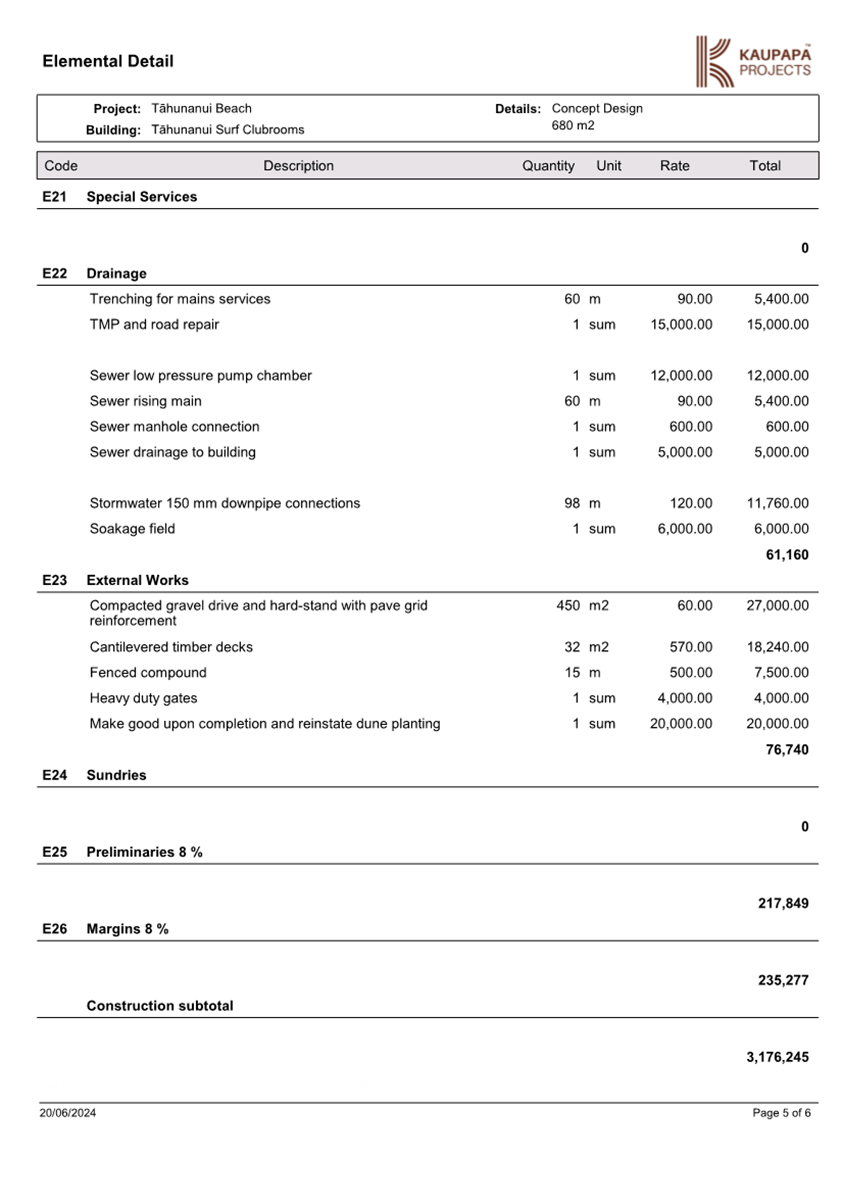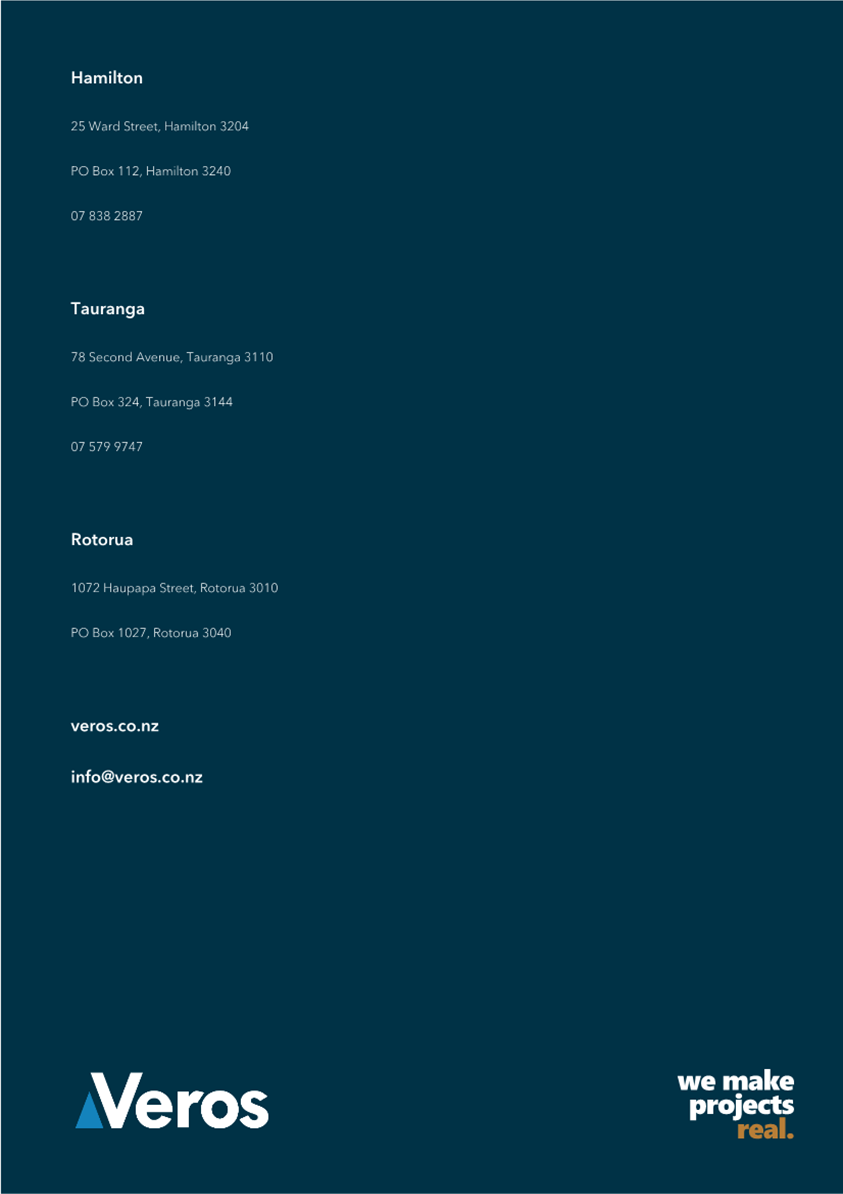 Notice of the Ordinary meeting of
Notice of the Ordinary meeting of
Nelson City Council
Te Kaunihera o
Whakatū
Agenda | Rārangi take

|
Date: Thursday
7 November 2024
Time: 9.00a.m.
Location: Council
Chamber
Floor 2A, Civic House
110 Trafalgar Street, Nelson
|
Chairperson His
Worship the Mayor Nick Smith
Deputy
Mayor Cr
Rohan O'Neill-Stevens
Members Cr
Matty Anderson
Cr
Matthew Benge
Cr
Trudie Brand
Cr
Mel Courtney
Cr
James Hodgson
Cr
Kahu Paki Paki
Cr
Pete Rainey
Cr
Campbell Rollo
Cr
Rachel Sanson
Cr
Tim Skinner
Cr
Aaron Stallard
Quorum 7 Nigel
Philpott
Chief Executive
governance.advisers@ncc.govt.nz
www.nelson.govt.nz
Nelson City Council Disclaimer
Please note that the contents of these
Council and Committee agendas have yet to be considered by Council and officer
recommendations may be altered or changed by the Council in the process of
making the formal Council decision. For enquiries call (03) 5460436.
7
November 2024
Page
No.
Karakia and Mihi Timatanga
1. Apologies
2. Confirmation
of Order of Business
3. Interests
4. Public
Forum
5. Confirmation
of Minutes
6. Annual Report
- Brook Waimarama Sanctuary Trust 21 - 70
7. Recommendations
from Committees 71 - 71
8. Mayor's Report
- Isel and Botanic Gardens Bequest, Local Electoral Reform, Storm Recovery
Taskforce Terms of Reference, Sister Cities visit, Mayoral Discretionary Fund 72 - 110
9. Nelson Arts
Hub - Business Case 111 - 215
10. Approval to Bring Forward
Budget - Regional Infrastructure Fund Flood Resilience Projects 216 - 226
11. Tāhunanui Surf Life
Saving Facility 227 - 444
12. Review of Biosecurity
Annual Report 2023/24 & Adoption of Operational Plan 2024/25 445 - 519
13. Adoption of Environmental
Management Activity Management Plan 2024 - 2034 520 - 526
14. Adoption of the Property
Activity Management Plan 2024-2034 527 - 536
15. Exclusion
of the Public 537
Karakia Whakamutanga
Procedural
Items
1. Apologies
An apology has
been received from Councillor R O'Neill-Stevens
2. Confirmation of
Order of Business
3. Interests
3.1 Updates to the
Interests Register
3.2 Identify any
conflicts of interest in the agenda
4. Public Forum
4.1 Students from
Nelson College, Nelson College Preparatory, Broadgreen Intermediate and Nelson
Intermediate Schools - Council's Climate Strategy
Students from Nelson College,
Nelson College Preparatory, Broadgreen Intermediate and Nelson Intermediate
Schools, Supported by Climate Change Educator and Climate Learning Programme
Lead, Will Stovall, will speak about Council’s Climate Strategy.
4.2 Multicultural
Nelson Tasman - Update to requests made under the Long Term Plan Consultation
5. Confirmation of
Minutes
5.1 10 October 2024 4 - 18
Document number M20779
Recommendation
|
That the Council
1. Confirms the minutes of the meeting of
the Council, held on 10 October 2024, as a true and correct record.
|
5.2 Extraordinary
Meeting - 22 October 2024 19 - 20
Document number M20790
Recommendation
|
That the Council
1. Confirms the minutes of the
extraordinary meeting of the Council, held on 22 October 2024, as a true and
correct record.
|
Nelson City Council Minutes - 10
October 2024
Present: His
Worship the Mayor N Smith (Chairperson), Councillors M Anderson, M Benge, T
Brand, M Courtney, R O'Neill-Stevens (Deputy Mayor), K Paki Paki, P Rainey, C
Rollo, R Sanson, T Skinner and A Stallard
In
Attendance: Chief Executive (N Philpott), Deputy Chief
Executive/Group Manager Infrastructure (A Louverdis), Group Manager
Environmental Management (M Bishop), Acting Group Manager Community Services (M
Croft), Group Manager Corporate Services (N Harrison), Group Manager Strategy
and Communications (N McDonald), Team Leader Governance (R Byrne) and Senior
Governance Adviser (A Andrews)
Apologies : Councillor
J Hodgson
Karakia
and Mihi Timatanga
1. Apologies
|
Resolved CL/2024/196
|
|
That the Council
1. Receives and accepts the
apologies from Councillor Hodgson for attendance.
|
|
His Worship the
Mayor/Courtney Carried
|
2. Confirmation of
Order of Business
His Worship the Mayor advised
that the order of business would be adjusted to accommodate presentations from
external organisations. Item 8: The Suter Art Gallery Te Aratoi o Whakatū
Trust Strategic Presentation to be taken before Item 7: Mayor’s Report.
hh
3. Interests
There were no updates to the
Interests Register, and no interests with items on the agenda were declared.
4. Public Forum
There was no public forum.
5. Confirmation of
Minutes
5.1 5
September 2024
Document number M20738, agenda
pages 4 - 24 refer.
|
Resolved CL/2024/197
|
|
That the Council
1. Confirms
the minutes of the meeting of the Council, held on 5 September 2024, as a
true and correct record.
|
|
Courtney/Rollo Carried
|
6. Recommendations from
Committees
6.1 Audit, Risk and Finance Committee
- 18 September 2024
6.1.1 Carry
Forwards - 2023/24 for Approval
Group Manager
Infrastructure, Alec Louverdis answered questions on the capacity and risks of
delivering the infrastructure capital works programme with the
anticipated budget carry forwards.
|
Recommendation to Council
CL/2024/198
|
|
That the Council
1. Approves the
net capital carry forward of $12 million –$12.3 million net to 2024/25
and $250,000 back from 2025/26; and
2. Notes that
the net capital carry forward is in addition to the net capital carry forward
of $24.2 million approved during the Long Term Plan 2024/34 process, taking
the total carry forward to $36.3 million of which $34.1 million is for the
2024/25 year and $1.4 million is for the 2025/26 year; and $500,000 is for
the 2026/27 year and $300,000 is for the 2029/30 year; and
3. Notes the
savings and reallocations in 2023/24 capital expenditure of $3.4 million
including staff time which is in addition to the $0.7 million savings and
reallocations already recognised in the May 2024 Long Term Plan 2024/34
deliberations; and
4. Notes that
the total 2024/25 capital budget (including staff costs and Aug 2022 severe
weather event related budgets and excluding consolidations, vested assets and
scope adjustment) will be adjusted by these resolutions from a total of
$107.1 million to a total of $119.3 million; and
5. Approves net
capital grants carried forward of $628,000 to align with the timing of
capital expenditure budgets; and
6. Approves
capital grant budget of $4.1 million of Crown funding for slip effected
property purchases to be carried back to 2023/24 to align with the accrual of
that income that has been made for our Annual Report 2023/24; and
7. Approves the
carry forward of $612,000 unspent operating expenditure budget to 2024/25,
accompanied by $567,000 of operating grant funding budget.
|
|
Sanson/Courtney Carried
|
6.2 Nelson
Tasman Regional Landfill Business Unit - 16 August 2024
6.2.1 Nelson Tasman Regional Landfill
Business Unit Draft Business Plan 2025/26
|
Resolved CL/2024/199
|
|
That
the Nelson City Council and Tasman District Council
1. Receives the Nelson Tasman
Regional Landfill Business Unit Draft Business Plan 2025/2026 (1399367370-10512)
for review and provide feedback to the Nelson Tasman Regional Landfill
Business Unit, if required.
|
|
Courtney/Stallard Carried
|
6.3 Nelson Regional Sewerage
Business Unit - 20 September 2024
6.3.1 Nelson
Regional Sewerage Business Unit Draft Business Plan 2024/25
|
Recommendation to Council
CL/2024/200
|
|
That the Nelson City and
Tasman District Council
1. Receives the Nelson Regional
Sewerage Business Unit Draft Business Plan 2024-25 for review and provide
feedback to the Nelson Regional Sewerage Business Unit, if required.
|
|
Skinner/Paki Paki Carried
|
6.3.2 Nelson
Regional Sewerage Business Unit - Annual Report Summary 2023/24
|
Recommendation to Council
CL/2024/201
|
|
That the Nelson City Council
and Tasman District Council
1. Receives the Nelson Regional
Sewerage Business Unit Annual Report 2023/24 and Nelson Regional Sewerage
Business Unit Financial Statements 2023/24.
|
|
Skinner/Paki Paki Carried
|
7. The Suter Art Gallery Te Aratoi o Whakatū Trust
Strategic Presentation (Agenda Item 8)
Document number R28715
Director, Julie Catchpole, and
Chair of the Suter Art Gallery Te Aratoi o Whakatū Trust, Steve Green spoke
to the presentation (tabled). They answered questions on their years of
service, “learning outside of classroom” funding and its services
and operational expenditure.
|
Attachments
1 Suter Art Gallery Strategic Presentation
|
8. Mayor's Report
(Agenda Item 7)
Document number R28828, agenda
pages 44 - 58 refer.
His Worship the Mayor took the
report as read. He answered questions on his work with the Transport Revenue
Stakeholder Group and its scope.
The meeting adjourned from 10.21am
until 10.31am.
9. Receipt of the
Nelson Regional Development Agency's Annual Report 2023/24
Document number R28765, agenda
pages 59 - 121 refer.
Chief Executive, Fiona Wilson,
Chair of the NRDA Board, Sarah-Jane Weir, and Finance & Commercial Manager,
Toni Power spoke to their presentation (tabled). They answered questions about
cruise ship bookings for the summer, the need for a facility at the port to
receive and orient tourists disembarking off cruise ships and food and beverage
promotional work.
|
Resolved CL/2024/203
|
|
That
the Council
1. Receives the report
Receipt of the Nelson Regional Development Agency's Annual Report 2023/24
(R28765) and its attachment;
and
2. Receives the
Nelson Regional Development Agency’s Annual Report 2023/24 (Attachment
1) as required under the Local Government Act 2002.
|
|
His Worship the
Mayor/O'Neill-Stevens Carried
|
|
Attachments
1 NRDA Annual Report Presentation
|
10. Approval to bring forward
budget - Infrastructure Acceleration Fund Bridge to Better projects
Document number R28781, agenda
pages 122 - 127 refer.
Group Manager Infrastructure,
Alec Louverdis spoke to the report and highlighted the benefits of bringing
budget forward into the current financial year to undertake some physical works
ahead of the wider Bridge to Better project to limit disruption to the inner
city and to get the benefit of a buoyant construction market.
|
Resolved CL/2024/204
|
|
That
the Council
1. Receives the
report Approval to bring forward budget - Infrastructure Acceleration Fund
Bridge to Better projects (R28781); and
2. Approves
bringing forward budget (part of the Infrastructure Acceleration Fund -
Bridge to Better) of $1,226,500 from 2025-26 and $2,659,800 from 2026-27 to
2024-25 to allow the tender and award of the water ring main works to proceed
ahead of schedule; and
3. Approves
bringing forward budget (part of the Infrastructure Acceleration Fund -
Bridge to Better) of $335,500 from 2025-26 to 2024-25 to allow the Flood Gate
Upgrade works to proceed ahead of schedule.
|
|
His Worship the
Mayor/O'Neill-Stevens Carried
|
The meeting adjourned from 11.33am
until 11.41am.
11. Local Water Done Well - Service
Delivery Options
Document number R28752, agenda
pages 128 - 136 refer.
Group Manager Infrastructure,
Alec Louverdis and Manager Utilities Activity Management, Phil Ruffell took the
report as read. They answered questions on the water treatment plant, activity
management plans, legal requirements under the Act and
consultation with the public.
|
Resolved CL/2024/205
|
|
That
the Council
1. Receives the
report Local Water Done Well - Service Delivery Options (R28752); and
2. Determines
that models for delivery of water services for Nelson are:
a. Remain with the existing
approach for delivering water services; or
b. Establishing or joining a
water services council-controlled organisation – either (A) alone or (B) with other council(s); or
c. Establishing or joining a
joint local government arrangement under section 137 of the Local Government
act 2002; and
3. Adopts Model
a. (Remain with the existing approach for delivering water services) as the
preferred model for the proposal for consultation with the community; and
4. Directs staff
to prepare a consultation statement of proposal for this option - to be
brought to Council in a future report with details of the proposed
consultation.
|
|
Skinner/Brand Carried
|
12. Adoption of the amended
Tasman-Nelson Regional Pest Management Plan 2019-2029
Document number R28743, agenda
pages 137 - 313 refer.
Group Manager Environmental
Management, Mandy Bishop, Environmental Programmes Adviser, Richard Frizzell
and Team Leader – Biosecurity & Biodiversity, Tasman District Council,
Guinny Coleman took the report as read. They answered questions on pest control
timeline, pampas grass, wilding pines, and feral and stray cats.
|
Resolved CL/2024/206
|
|
That
the Council, acknowledging Tasman District
Council prior approval,
1. Receives the
report Adoption of the amended Tasman-Nelson Regional Pest Management Plan
2019-2029 (R28743) and its attachments; and
2. Confirms that it is satisfied that there has been
sufficient consultation on the draft Tasman-Nelson Regional Pest Management
Plan 2019-2029, in accordance with Section 72 of the Biosecurity Act 1993;
and
3. Agrees that
the draft Tasman-Nelson Regional Pest Management Plan 2019-2029 specifies the
matters listed in Section 73(3) of the Biosecurity Act 1993 and complies with
Section 73 of the Biosecurity Act 1993; and
4. Confirms that it is satisfied that the draft
Tasman-Nelson Regional Pest Management Plan 2019-2029 meets the requirements
of Section 74 of the Biosecurity Act 1993 (including not being inconsistent
with the National Policy Direction); and
5. Adopts the amended Tasman-Nelson Regional Pest Management
Plan 2019-2029 (NDOCS-596364813-11862); and
6. Agrees to notify submitters and the public of its
decision on the Tasman-Nelson Regional Pest Management Plan 2019-2029, in
accordance with Section 75(4) of the Biosecurity Act 1993, via its website,
following adoption of the Tasman-Nelson Regional Pest Management Plan
2019-2029 by both Councils; and
7. Delegates authority to the His Worship the Mayor of
Tasman District Council and Chief Executive of Tasman District Council to
make minor edits to the finalised Tasman-Nelson Regional Pest Management Plan
2019-2029 prior to it being made publicly available.
|
|
Sanson/Benge Carried
|
13. Approval to consult on Dangerous, Affected and Insanitary Buildings Policy
Document number R28696, agenda
pages 314 - 371 refer.
Group Manager Environmental
Management, Mandy Bishop, and Structural Engineer, Bruce Mutton took the report
as read. They answered questions on the process of identifying such buildings,
inclusion of residential buildings in the policy and implications for
squatters.
|
Resolved CL/2024/207
|
|
That the Council
1. Receives the
report Approval to consult on Dangerous, Affected and Insanitary Buildings
Policy (R28696) and its attachments; and
2. Approves consultation using the Special Consultative Procedure on
the proposed amended Dangerous, Affected and Insanitary Buildings Policy;
and
3. Approves the
Statement of Proposal and its attachment the proposed amended Dangerous,
Affected and Insanitary Buildings Policy for consultation; and
4. Approves that
a summary of the Statement of Proposal is not necessary for the public to
understand the proposed Dangerous, Affected and Insanitary Buildings Policy;
and
5. Delegates to
a Consultation Panel to hear and deliberate on submissions to the amended
Dangerous, Affected and Insanitary Buildings Policy, and recommend a decision
to Council; and
6. Appoints the
following Elected Members to the Consultation Panel - amended Dangerous,
Affected and Insanitary Buildings Policy
a. Councillor
Tim Skinner (Chair)
b. Councillor
Trudie Brand; and
c. Councillor
Campbell Rollo
7. Approves the
consultation approach (set out in sections 5.5 to 5.10 of this report R28696)
and agrees:
a. The approach includes
sufficient steps to ensure the Statement of Proposal will be reasonably
accessible to the public and will be publicised in a manner appropriate to
its purpose and significance; and
b. the approach will result in
the Statement of Proposal being as widely publicised as is reasonably
practicable as a basis for consultation.
8. Authorises His Worship
the Mayor and Chief Executve to approve minor editorial changes.
|
|
His Worship the Mayor/Skinner Carried
|
14. Approval to consult on
Dangerous Dams, Earthquake-prone Dams and Flood-prone Dams Policy
Document number R28754, agenda
pages 372 - 437 refer.
Group Manager Environmental
Management, Mandy Bishop, and Structural Engineer, Bruce Mutton took the report
as read. They answered questions on adjoining Council’s interest and
capability in undertaking services on behalf of Nelson City Council for the
regulation of Nelson Dams.
|
Resolved CL/2024/208
|
|
That
the Council
1. Receives the
report Approval to consult on Dangerous Dams, Earthquake-prone Dams and
Flood-prone Dams Policy (R28754) and its attachments; and
2. Approves
consultation using the Special Consultative Procedure on the proposed
replacement Dangerous Dams, Earthquake-prone Dams and Flood-prone Dams
Policy; and
3. Approves the
Statement of Proposal and its attachment the proposed Dangerous Dams,
Earthquake-prone Dams and Flood-prone Dams Policy for consultation; and
4. Agrees that a
summary of the Statement of Proposal is not necessary for the public to
understand the Proposed Dangerous Dams, Earthquake-prone Dams and Flood-prone
Dams Policy; and
5. Delegates to
a Consultation Panel to hear and deliberate on submissions to the Dangerous
Dams, Earthquake-prone Dams and Flood-prone Dams Policy, and recommend a
decision to Council; and
6. Appoints the
following Elected Members to the Consultation Panel - Dangerous Dams,
Earthquake-prone Dams and Flood-prone Dams Policy:
a. Councillor
Tim Skinner (Chair)
b. Councillor
Trudie Brand; and
c. Councillor
Campbell Rollo
7. Approves the
consultation approach (set out in sections 5.5 to 5.10 of this report R28754)
and agrees:
a. The approach includes
sufficient steps to ensure the Statement of Proposal will be reasonably
accessible to the public and will be publicised in a manner appropriate to
its purpose and significance; and
b. the approach will result in
the Statement of Proposal being as widely publicised as is reasonably
practicable as a basis for consultation.
|
|
His Worship the Mayor/Skinner Carried
|
15. Residents' Survey 2023/24
results
Document number R28729, agenda
pages 438 - 486 refer.
Group Manager Strategy and
Communications, Nicky McDonald and Senior Policy Adviser, Louise Dalzell spoke
to the report and highlighted the key aspects of the survey results. They
answered questions on interpretation of data and key research.
|
Resolved CL/2024/209
|
|
That
the Council
1. Receives the report
Residents' Survey 2023/24 results (R28729) and its attachment; and
2. Notes that the results of the Residents’ Survey
2023/24 will be made available to the public on Council’s website.
|
|
His Worship the Mayor/Sanson Carried
|
16. Adoption of the Schedule of
Meetings for 2025
Document number R28790, agenda
pages 487 - 0 refer.
Team Leader Governance, Robyn
Byrne took the report as read.
|
Resolved CL/2024/210
|
|
That
the Council
1. Receives the
report Adoption of the Schedule of Meetings for 2025 (R28790) and its attachment; and
2. Adopts the
Schedule of Meetings for the 2025 calendar year as set out in Attachment 1.
|
|
His Worship the
Mayor/O'Neill-Stevens Carried
|
17. Exclusion
of the Public
|
Resolved CL/2024/211
|
|
That the Council
1. Excludes the public from the following parts of the proceedings of
this meeting.
2. The general subject of each matter to be considered while the
public is excluded, the reason for passing this resolution in relation to
each matter and the specific grounds under section 48(1) of the Local
Government Official Information and Meetings Act 1987 for the passing of this
resolution are as follows:
|
|
Paki Paki/Sanson Carried
|
|
Item
|
General subject of each matter to be
considered
|
Reason for passing this resolution in
relation to each matter
|
Particular interests protected (where
applicable)
|
|
1
|
Council Meeting - Confidential Minutes - 5 September 2024
|
Section
48(1)(a)
The
public conduct of this matter would be likely to result in disclosure of
information for which good reason exists under section 7.
|
The withholding of the information is necessary:
· Section
7(2)(a)
To protect the
privacy of natural persons, including that of a deceased person
· Section
7(2)(i)
To enable the local
authority to carry on, without prejudice or disadvantage, negotiations
(including commercial and industrial negotiations)
|
|
2
|
Recommendations
from Committees
|
|
|
|
|
Nelson Regional Sewerage Business Unit -
20 September 2024
Nelson
Regional Sewerage Business Unit Land Purchase
|
Section 48(1)(a)
The public conduct of this matter would be likely to result in
disclosure of information for which good reason exists under section 7
|
The withholding of the information is necessary:
· Section
7(2)(i)
To enable the
local authority to carry on, without prejudice or disadvantage, negotiations
(including commercial and industrial negotiations)
|
|
3
|
Nelson
Regional Sewerage Business Unit - appointment of Independent Member
|
Section
48(1)(a)
The public conduct of this
matter would be likely to result in disclosure of information for which good
reason exists under section 7
|
The withholding of the information is necessary:
· Section 7(2)(a)
To protect the privacy of
natural persons, including that of a deceased person
· Section 7(2)(i)
To enable the local
authority to carry on, without prejudice or disadvantage, negotiations
(including commercial and industrial negotiations)
|
|
4
|
The Suter Art Gallery Te Aratoi o Whakatū Trust - Trustee
Rotation
|
Section 48(1)(a)
The public
conduct of this matter would be likely to result in disclosure of information
for which good reason exists under section 7
|
The withholding of the information is necessary:
· Section
7(2)(a)
To protect the
privacy of natural persons, including that of a deceased person
· Section
7(2)(i)
To enable the
local authority to carry on, without prejudice or disadvantage, negotiations
(including commercial and industrial negotiations)
|
|
5
|
'Shaping
our future' programme
|
Section
48(1)(a)
The public conduct of this
matter would be likely to result in disclosure of information for which good
reason exists under section 7
|
The withholding of the information is necessary:
· Section 7(2)(a)
To protect the privacy of
natural persons, including that of a deceased person
|
|
6
|
City Centre Expressions of Interest development opportunities
|
Section 48(1)(a)
The public
conduct of this matter would be likely to result in disclosure of information
for which good reason exists under section 7
|
The withholding of the information is necessary:
· Section
7(2)(h)
To enable the
local authority to carry out, without prejudice or disadvantage, commercial
activities
· Section
7(2)(i)
To enable the
local authority to carry on, without prejudice or disadvantage, negotiations
(including commercial and industrial negotiations)
|
|
7
|
Millers
Acre regional bus interchange
|
Section
48(1)(a)
The public conduct of this
matter would be likely to result in disclosure of information for which good reason
exists under section 7
|
The withholding of the information is necessary:
· Section 7(2)(h)
To enable the local
authority to carry out, without prejudice or disadvantage, commercial
activities
· Section 7(2)(i)
To enable the local
authority to carry on, without prejudice or disadvantage, negotiations
(including commercial and industrial negotiations)
|
The meeting went into confidential session at 1.07pm
and resumed in public session at 6.01pm.
Karakia
Whakamutanga
18. Restatements
It was resolved while the public was
excluded:
|
2
|
Recommendation from
Committee:
CONFIDENTIAL: Nelson Regional
Sewerage Business Unit Land Purchase
|
|
|
3. Agrees that the decision be
made publicly available following settlement of the purchase.
|
|
3
|
CONFIDENTIAL: Nelson Regional
Sewerage Business Unit - appointment of Independent Member
|
|
|
5. Agrees that
Report (R28671) remain confidential at this time; and
6. Agrees that the
decision only be made publicly available once a letter of acceptance is
received.
|
|
4
|
CONFIDENTIAL: The Suter Art
Gallery Te Aratoi o Whakatū Trust - Trustee Rotation
|
|
|
8. Agrees that the report The
Suter Art Gallery Te Aratoi o Whakatū Trust – Trustee Rotation
(R28574) and its attachments remain confidential at this time; and
9. Agrees that the decision only be
made publicly available once the 2024 The Suter Art Gallery Te Aratoi o
Whakatū Trust Annual General Meeting has taken place.
|
|
5
|
CONFIDENTIAL: 'Shaping our
future' programme
|
|
|
9. Agrees that Report (R28771)
and Attachment remain confidential at this time; and
10. Agrees that the decision only be made
publicly available at the discretion of the Chief Executive.
|
|
6
|
CONFIDENTIAL: City Centre
Expressions of Interest development opportunities
|
|
|
9. Agrees that the report City Centre Expressions of
Interest development opportunities (R28802) and its attachments will remain
confidential until sale and purchase agreements become unconditional for 25
to 27 Bridge Street and 42 Rutherford Street and a lease is executed for 3
Halifax Street.
|
|
7
|
CONFIDENTIAL: Millers Acre
regional bus interchange
|
|
|
8. Agrees the decision, Report
(R28780) and its attachment remain confidential at this time.
|
There being no further business
the meeting ended at 6.02p.m.
Confirmed as a correct record
of proceedings by resolution on (date)
Resolved
Nelson City Council Minutes - 22 October 2024
Present: Deputy
Mayor R O'Neill-Stevens (Chairperson), Councillors M Anderson, M Benge, T
Brand, M Courtney, J Hodgson, K Paki Paki, P Rainey, R Sanson, T Skinner and A
Stallard
In
Attendance: Chief Executive (N Philpott), Deputy Chief
Executive/Group Manager Infrastructure (A Louverdis), Senior Governance Adviser
(A Andrews) and Assistant Governance Adviser (M Taylor)
Apologies: Apologies
have been received from His Worship the Mayor N Smith and Councillor C Rollo
Karakia and Mihi Timatanga
1. Apologies
|
Resolved CL/2024/220
|
|
That the Council
1. Receives
and accepts the apologies from His Worship the Mayor N Smith and Councillor C
Rollo.
|
|
Rainey/Brand Carried
|
2. Confirmation of
Order of Business
There was no change to the order
of business.
3. Interests
There were no updates to the
Interests Register, and no interests with items on the agenda were declared.
4. Public Forum
There was no public forum.
5. Amend Speed
Management Plan Timing - Cable Bay Road and Maori Pa Road
Document number R28849, agenda
pages 4 - 10 refer.
Group Manager Infrastructure,
Alec Louverdis, Manager Transport, Lyndon Hammond and Contractor Transport
Activity Management, Rhys Palmer took the report as read. They answered
questions on the limitation and validity of the current speed management plan,
blanket speed limits and speed limit reduction at Cable Bay and Māori Pa
Road.
|
Resolved CL/2024/221
|
|
That
the Council
1. Receives the report Amend Speed
Management Plan Timing - Cable Bay Road and Maori Pa Road (R28849); and
2. Approves changing the implementation
date of the speed limit change from 100km/h to 80km/h on Cable Bay Road and
Maori Pa Road from 14 July 2025 to 29 October 2024.
|
|
Skinner/Hodgson Carried
|
There being no further business the meeting ended at 09.22a.m.
Confirmed as a correct record of proceedings by
resolution on (date)
Resolution
Item 6: Annual Report -
Brook Waimarama Sanctuary Trust
|

|
Council
7 November 2024
|
Report
Title: Annual
Report - Brook Waimarama Sanctuary Trust
Report
Author: Martin Croft
- Strategic Adviser Community Services
Report
Authoriser: Andrew White - Group Manager Community
Services
Report
Number: R28262
1. Purpose of Report
1.1 To present an
update from the Brook Waimarama Sanctuary Trust, including its Annual Report
2024.
1.2 Ru Collin, Chief
Executive from the Brook Waimarama Sanctuary will speak to the report.
2. Recommendation
|
That the
Council
1. Receives the report Annual Report - Brook
Waimarama Sanctuary Trust (R28262)
and its attachment.
|
3. Background
3.1 The Brook
Waimarama Sanctuary is a community initiative to create a pest-free wildlife
sanctuary in the upper Brook Valley. The project was launched in 2004, with
construction of a visitor centre being completed in 2007, a 14.4km predator
proof fence being completed in 2016 and a pest eradication operation undertaken
in 2017. Nelson City Council (Council) has supported the project with funding
of $1,036,000 towards the fence construction and provides annual operational
funding and leases Council-owned land to the Brook Waimarama Sanctuary Trust
(BWST).
3.2 There is a
Memorandum of Understanding between BWST and Council with the aim of achieving
a working partnership to maintain, enhance and promote the sanctuary.
3.3 Operational
funding is managed through an operational services contract, which includes
fence maintenance, track maintenance, and salaries for staff and contractors.
In the 2024/25 financial year, the BWST will receive a grant of $176,049 for
operation services at the Sanctuary.
3.4 The BWST Annual
Report for 2023/24 is attached.
Attachments
Attachment 1: Brook
Sanctuary Annual Report ⇩
Item 6: Annual Report - Brook Waimarama Sanctuary
Trust: Attachment 1











































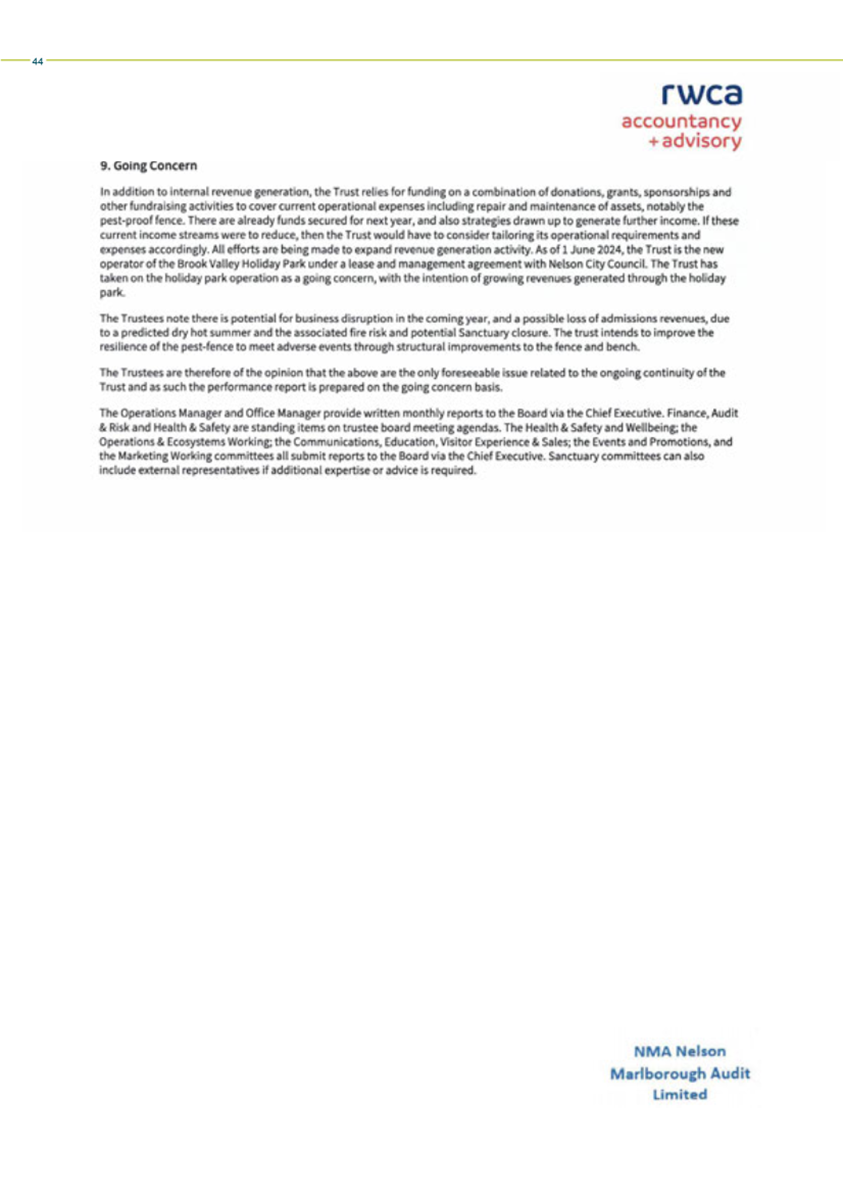



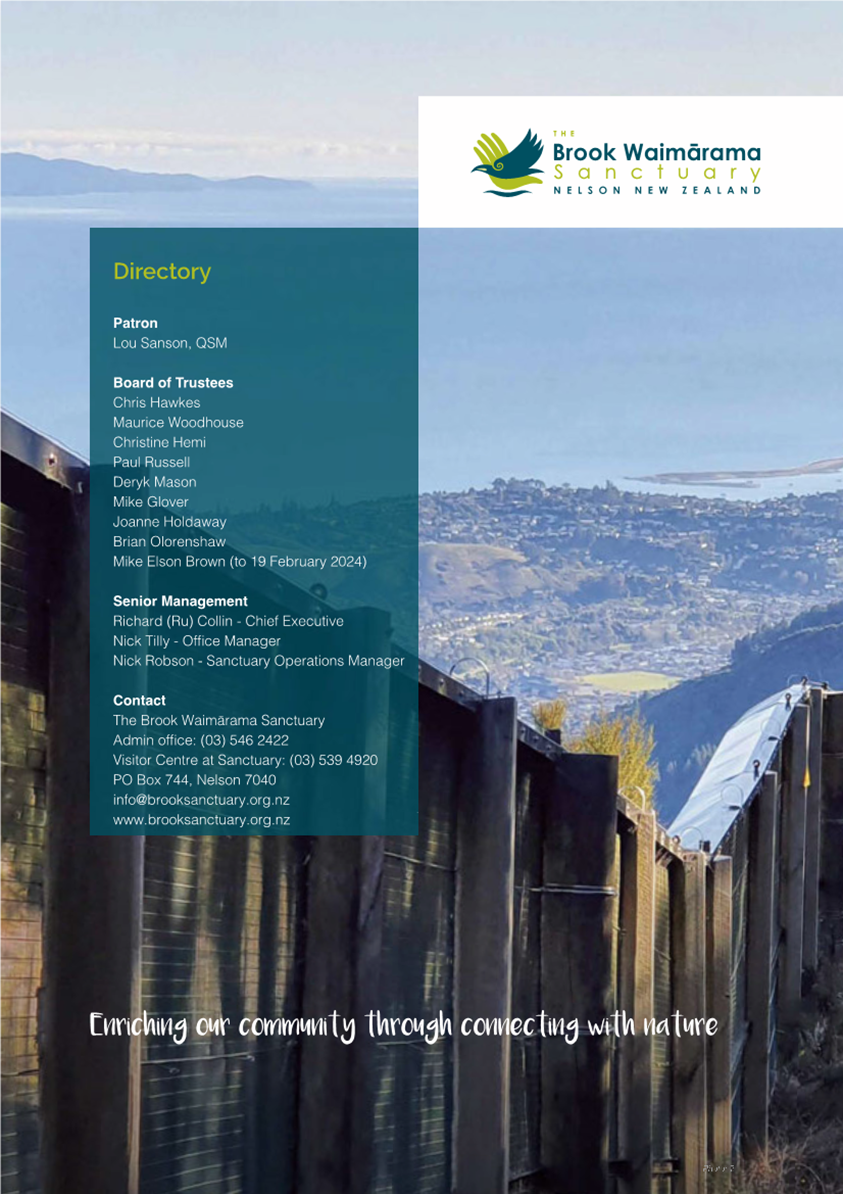
Item 7: Recommendations
from Committees
|

|
Council
7 November 2024
|
Report
Title: Recommendations
from Committees
Report
Author: Robyn
Byrne - Team Leader Governance
Report
Authoriser:
Report
Number: R28852
6.1 Saxton Field Committee
– 05 November 2024
Draft Recommendation at time of
publishing
Recommendations from Committees
Recommendation to Nelson City and
Tasman District Councils:
|
That the
Council
1. Adopts the
revised Saxton Field Activity Management Plan 2024-2034
(NDOCS-196698121-60099); and
2. Delegates authority to the Chair of the Saxton Field
Committee, Group Manager Community Services Nelson City Council and Group
Manager Community Infrastructure Tasman District Council to make editorial
amendments to the Activity Management Plan prior to the public release of the
Saxton Field Activity Management Plan 2024-34.
|
Attachments
Nil
Item 8: Mayor's Report
- Isel and Botanic Gardens Bequest, Local Electoral Reform, Storm Recovery
Taskforce Terms of Reference, Sister Cities visit, Mayoral Discretionary Fund
|

|
Council
7 November 2024
|
Report
Title: Mayor's
Report - Isel and Botanic Gardens Bequest, Local Electoral Reform, Storm
Recovery Taskforce Terms of Reference, Sister Cities visit, Mayoral
Discretionary Fund
Report
Author: Hon Dr
Nick Smith - Mayor
Report
Authoriser:
Report
Number: R28870
1. Purpose
of Report
1.1 To receive a
bequest for the Isel and Botanic Gardens and consider approaching the City of
Nelson Civic Trust to administer the funds.
1.2 To provide an
update on the work being undertaken by Local Government New Zealand’s
Electoral Reform Group and note that councils across the country are being
encouraged to submit on the matters raised in an issues paper. To consider
preparing a submission.
1.3 To consider
updated terms of reference for the Storm Recovery Taskforce to include
monitoring and oversight of the Regional Infrastructure Fund flood resilience
projects.
1.4 To provide an
update on my recent visit to Nelson’s sister cities of Huangshi and
Yangjiang.
1.5 To provide an
update on spending from the Mayoral Discretionary Fund.
2. Recommendation
|
That the
Council
1. Receives
the report Mayor's Report - Isel and Botanic Gardens Bequest, Local Electoral
Reform, Storm Recovery Taskforce Terms of Reference, Sister Cities visit,
Mayoral Discretionary Fund (R28870) and its attachment;
2. Receives the generous Isel and Botanic Gardens
Bequest of approximately $300,000; and
a. Requests
the City of Nelson Civic Trust administers the Isel and Botanic Gardens
Bequest on behalf of Nelson City Council; and
b. Following
confirmation from the City of Nelson Civic Trust delegates to the Chief
Executive the formalisation of an Agreement to administer the Isel and
Botanic Gardens Bequest.
3. Notes that
Local Government New Zealand’s Electoral
Reform Group has released a local electoral
reform issues paper and councils
across the country are being encouraged to submit on the
matters raised within this paper; and
a. Requests that officers prepare a submission with
input from elected members.
4. Approves
the updated Storm Recovery Taskforce Terms of Reference.
5. Notes
the recent expenditure from the Mayoral Discretionary Fund.
|
3. Discussion
Isel and Botanic Gardens Bequest
3.1 I’m
delighted to advise that Council is the recipient of a generous bequest of
approximately $300,000 for the maintenance and development of the Botanic
Gardens in Nelson and Isel Park in Stoke. The benefactor has requested to
remain anonymous and for this reason I have not shared the letter received.
3.2 I have accepted
the bequest and passed on the Council’s thanks to the benefactor’s
family for this wonderful contribution that will enable Council to enhance and
maintain the gardens for the wider community to enjoy.
3.3 The City of
Nelson Civic Trust has managed bequests for Council before and it is my
recommendation that the Trust is asked to manage this bequest on behalf of
Council, especially given its alignment with the Trust’s role to
administer bequest funds for the beautification of Nelson City.
3.4 If the Trust
agrees to the request, it would be on the understanding that the funds would be
allocated in accordance with the terms of the bequest and only for the purpose
of enhancements or improvements to Council-led or facilitated operations and
activities. It would also be important to note that the funds are not to be
used for business-as-usual operations or to offset ratepayer costs for normal
Council business.
Local
Government Reform
3.5 Local Government
New Zealand (LGNZ) in June 2024 established the Electoral Reform Group and
asked me to Chair it. Its goal is to strengthen local government’s
democratic mandate, with a focus on increasing participation in local
elections. Turnout at the 2022 local authority elections nationally was 41.5%
compared with 57% in 1989 and 77.5% in the 2023 parliamentary elections. Nelson’s
polling rate is about 10% higher but the issue is still relevant to us in that
over the past 30 years it has dropped from 70% in 1992 to 51% in 2022.
3.6 On 24 October
2024 at the LGNZ Zone 5&6 meeting in Dunedin, the Group released the local
electoral reform issues paper (refer attachment one), which sets out five key
issues affecting voter participation:
3.6.1 Voting methods, including the
declining feasibility of postal voting
3.6.2 Public awareness of local
government and its importance;
3.6.3 Poor understanding of candidates
and their policies;
3.6.4 How local elections are promoted
and administered;
3.6.5 How local government could
transition to a four-year term.
3.7 The paper canvasses
issues that have been discussed for years. The most urgent challenge, with most
councils conducting their elections by post, is the collapse of what New
Zealanders now refer to as “snail mail”. Postal volumes have
dropped 80% since 2000, with the number of street post boxes down by 40% since
2010. Under a 2024 review of the Deed of Understanding between the Government and
NZ Post, it is proposed mail deliveries drop from a minimum of three days a
week to two days a week in urban areas and from five days a week to three days
a week in rural areas. The review reinforces the problem that post is not a
sustainable voting method long term for local elections.
3.8 We need to move
quickly to find a safe and reliable replacement to postal voting for local
elections, while recognising that alternatives such as online voting come with
considerable security and cost concerns that are not easy to overcome.
3.9 The Electoral
Reform Group is committed to working with the Government on how we can
strengthen the local electoral system. With the Government planning to
introduce legislation and hold a referendum on extending the Parliamentary term
to four years, the Group wants the implications for councils to be included in
the Government’s work. We believe there are benefits in local government
also moving to a four-year term to encourage a longer-term perspective on
challenging issues such as infrastructure, housing and climate change. We would
like the Government to include the option of councils moving to four-year terms
in the proposed referendum.
3.10 The Group is now seeking
feedback on its issues paper with submissions closing on 19 January 2025. The
Group’s final position paper is expected to be released in July 2025.
3.11 This is the beginning of an
informed conversation about the solutions. The Group is determined to drive
meaningful change and it is important that councils participate in this process
and share their views on the issues paper. I propose a workshop with
Councillors later this month and that Council prepares a submission by the end
of 2024.
Proposed
update of the Storm Recovery Taskforce terms of reference
3.12 The Storm Recovery
Taskforce had a discussion regarding the Regional Infrastructure Fund (RIF)
flood resilience projects that have been approved for grant funding support of
$9 million of the expected total cost of $15 million. These projects are
related to the $89 million of storm recovery works that include betterment. The
funding from Government enables us to bring forward these works that need to be
co-ordinated alongside the storm recovery works.
3.13 The funding received from
RIF and the associated works programme is an outcome and follows on from the
August 2022 severe weather event.
3.14 Staff are of the view that
governance oversight would be best provided by the Storm Recovery Taskforce as
least until the end of the recovery work. On this basis it is recommended that
the updated terms of reference as attached to this report are approved (refer
attachment two). It may be appropriate to expand the membership of the Storm
Recovery Taskforce with this expanded terms of reference, and I am open to
views and expressions of interest.
Sister cities visit to Huangshi and Yangjiang
3.15 Nelson's sister city
relationships with the cities of Huangshi in the Hubei province and Yangjiang
in the Guangdong province are important in that China is New Zealand’s
largest trading partner, the third largest source of visitors and new migrants,
and a leader in many areas of technological innovation. It is also critical to
peace and security in the world and particularly in the Asia-Pacific region.
3.16 These two cities are larger
than Nelson with Huangshi having a population of 3.9 million and Yangjiang 2.6
million. At4,500 km2
and 8,000 km2
respectively, the two Chinese cities combined are a similar size to the
Nelson-Tasman region’s 10,000km2
area. The difference simply reflects the disparity in New
Zealand’s population relative to China – Nelson has 1% of New
Zealand’s population while both Huangshi and Yangjiang are about 0.3% of
China’s population.
3.17 We are fortunate to have
these relationships, established in 1995 with Huangshi and in 2014 with Yangjiang.
The disruption of Covid-19 curtailed in-person contact over the past four years
and the visit was critical to revitalising the sister city connections. The
last visit by a Mayor from Nelson to these cities was in 2015.
3.18 The Huangshi section of the
tour involved visits to a large solar energy farm built on top of land-based
fish farms, its Yangtze River port facility, a high-tech manufacturing
operation of mini compressors for the global refrigeration industry and paper-thin
copper for electric car batteries. The scale and sophistication of these
industries reinforces China’s global technological leadership. We also
visited a museum outlining the thousands of years of history of the Hubei
region’s mining industry and the early development of bronze
foundries.
3.19 The engagement with the
Huangshi Mayor and city officials was most interesting in respect of their
recently completed urban development that had strong parallels to our Bridge to
Better project. It was also good to see New Zealand products such as milk powder,
honey and wine featuring strongly in the new high-end retail developments. We
visited the Hubei Polytechnic University that has a partnership with NMIT. I
advocated for a lift in the NMIT student cap number that limits the size of
NMIT’s programmes in Huangshi. I believe this partnership, particularly
if NMIT is reestablished as an independent institution, has potential for
growth.
3.20 The visit to Yangjiang
involved a formal reception with Mayor Yu Jinfu, a roundtable, a factory tour
of MingYang, which is a leader in offshore wind energy, a brief on their
fishing and aquaculture industry in Beting Wan, a guided tour of the stunning
Maritime Silk Road Museum and a factory visit to Stellar Precision (a
manufacturer of knives). We also visited a private art and museum collection that
covered Chinese history and the technological development of audio over 200
years from the blowhorn to HiFi including the largest global collection of LPs
and the Liangyang High School where Nelson students will visit in April 2025.
Interesting parallels include their plans to build an airport to meet the
demands of their buoyant domestic tourism industry, the opportunities to grow
their industries connected to the ocean, meeting the demands of housing with
strong population growth in Guangdong region and the threats for their export
manufacturing industries from trade barriers and tariffs.
3.21 I wish to put on record
that the hosting of our Nelson delegation by both of these sister cities was
outstanding. There was a huge effort made to ensure our visit was well
organised, relevant, friendly and informative and they are very
outward-looking, wanting to engage, trade and be better connected with us and
the wider world. It will be a challenge for us to host either city to the same
standard and I think a return visit is likely given the 30th anniversary of the
Huangshi sister city relationship next year.
3.22 I also wish to thank the
Nelson branch of the New Zealand China Friendship Society for the huge effort
that went into the visit, particularly its President Barbara Markland and
Vice-President Bill Findlater. We should note that this year Council only provided
a grant of $4,000 to the Society, and that the bulk of its work is contributed
voluntarily. Future allocations in the Long Term Plan are for $8,000 per year
to the Friendship Society, based on the two sister cities.
3.23 The fundamental purpose of
sister cities is to help build greater global understanding to support a more
peaceful and co-operative world. Although councils have a small role to play in
international affairs, I think it serves our city well to have a few strategic
sister city relationships. These Chinese relationships are a good investment
given the significance of China to the Asia-Pacific region, the strength of
trade and the need for our two countries to better understand each
other’s systems of government, culture, language and people. I am
particularly keen to expand the student exchange programme at both college and
polytechnic level. I also believe that Council can play a role in opening doors
for increased trade and tourism with these significant cities. I am of the view
that we should be trying to maintain a formal exchange delegation at least once
every five years to maintain these links.
Mayoral Discretionary Fund
3.24 A payment of $200 was made
in August 2024 to Tia Nacagilevu as a contribution to her travels to compete at
the Commonwealth Weightlifting Championships held in Fiji in September 2024.
Prior to this event, Tia was placed third in the Snatch at the World Youth
Weightlifting championship in Peru in May 2024 and she currently holds the
Youth National records for the Snatch and Clean and Jerk.
3.25 A payment of $200 was made
in August 2024 to Finn Kerby-Pinguet, a Nelson student, as a contribution to
his travels to attend the United World Colleges programme in Shanghai, China
that same month. Finn won the scholarship to the United World Colleges programme
earlier this year and was fundraising to cover the remaining tuition and flight
costs.
3.26 A payment of $350 was made
in September 2024 to Alexei D’Ath to support the screening of her short
film about love. Alexei has been creating short five and 10-minute films using
up-and-coming local actors and local small businesses to build community and
help promote them. The short film will be screened locally and has also been
entered into film festivals around the world with the contribution going
towards essentials, food for the cast and crew and equipment hire.
3.27 A payment of $1000 was made
in September 2024 to the City of Nelson Highland Pipe Band Incorporated to
support its 100th Anniversary celebrations. To mark the centenary,
the Band performed on the Church Steps followed by a public ceilidh event in
the evening. The funds went towards the morning tea function and advertising
costs.
3.28 Payment of $5000 will be
made in December to the Fifeshire Foundation Big Give Christmas appeal, which
involves the compilation of gift packages for families in the region. This is
the Fifeshire Foundation’s annual fundraiser and will help families that
are facing hardship this Christmas.
Attachments
Attachment 1: The Local
Electoral Reform Issues Paper 2024 ⇩
Attachment 2: Updated
Storm Recovery Taskforce Terms of Reference - draft ⇩
|
Important considerations for decision making
|
|
Fit with Purpose of Local Government
The Isel and Botanic Gardens bequest supports the
social, environmental and cultural wellbeing of our community.
The Local Electoral Reform recommendation supports
democratic decision-making by communities.
The amended terms of reference for the Storm
Recovery Taskforce provides a mechanism for governance oversight of the
Regional Infrastructure Fund flood resilience projects.
|
|
Consistency with Community Outcomes
and Council Policy
The recommendations in this report support the
following community outcomes:
· Our
infrastructure is efficient, resilient, cost effective and meets current and
future needs.
· Our
communities are healthy, safe, inclusive and resilient.
· Our
communities have access to a range of social, cultural, educational and
recreational facilities and activities.
· Our
Council provides leadership and fosters partnerships, including with iwi,
fosters a regional perspective, and encourages community engagement.
· Our
region is supported by an innovative and sustainable economy.
|
|
Risk
The recommendations in this report are low risk.
|
|
Financial impact
The financial impact of the recommendations is low.
Staff time will be required if it is decided to make a submission on the
Local Electoral Reform Issues paper. The Mayoral discretionary fund
expenditure is within budget allocation.
|
|
Degree of significance and level of
engagement
The matters covered in this report are of low
significance and no community engagement is planned.
|
|
Climate Impact
The decisions to be taken in this report will not
affect the ability of Council to proactively respond to the impacts of
climate change now or in the future.
|
|
Inclusion of Māori in the
decision making process
No engagement with Māori has been
undertaken in preparing this report.
|
|
Delegations
These are matters for Council.
|
Item 8: Mayor's Report - Isel and Botanic Gardens
Bequest, Local Electoral Reform, Storm Recovery Taskforce Terms of Reference,
Sister Cities visit, Mayoral Discretionary Fund: Attachment 1

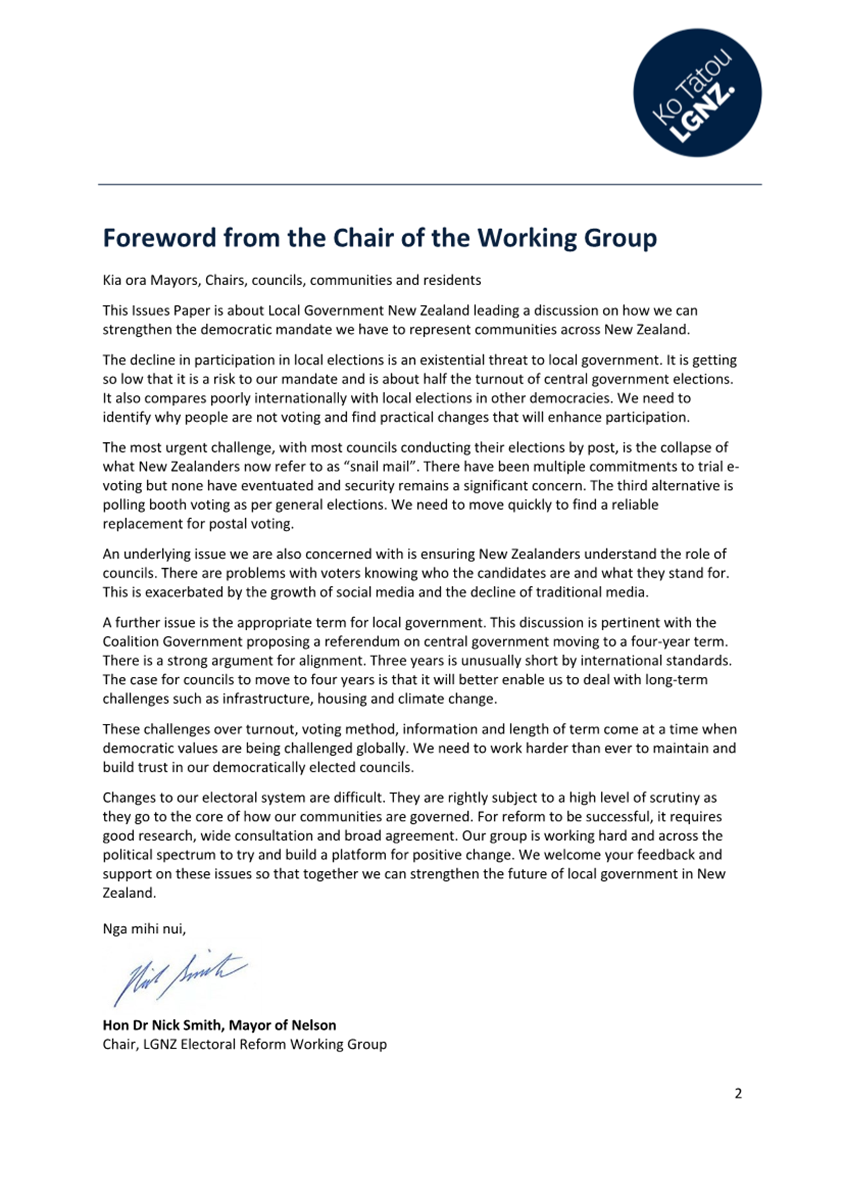

















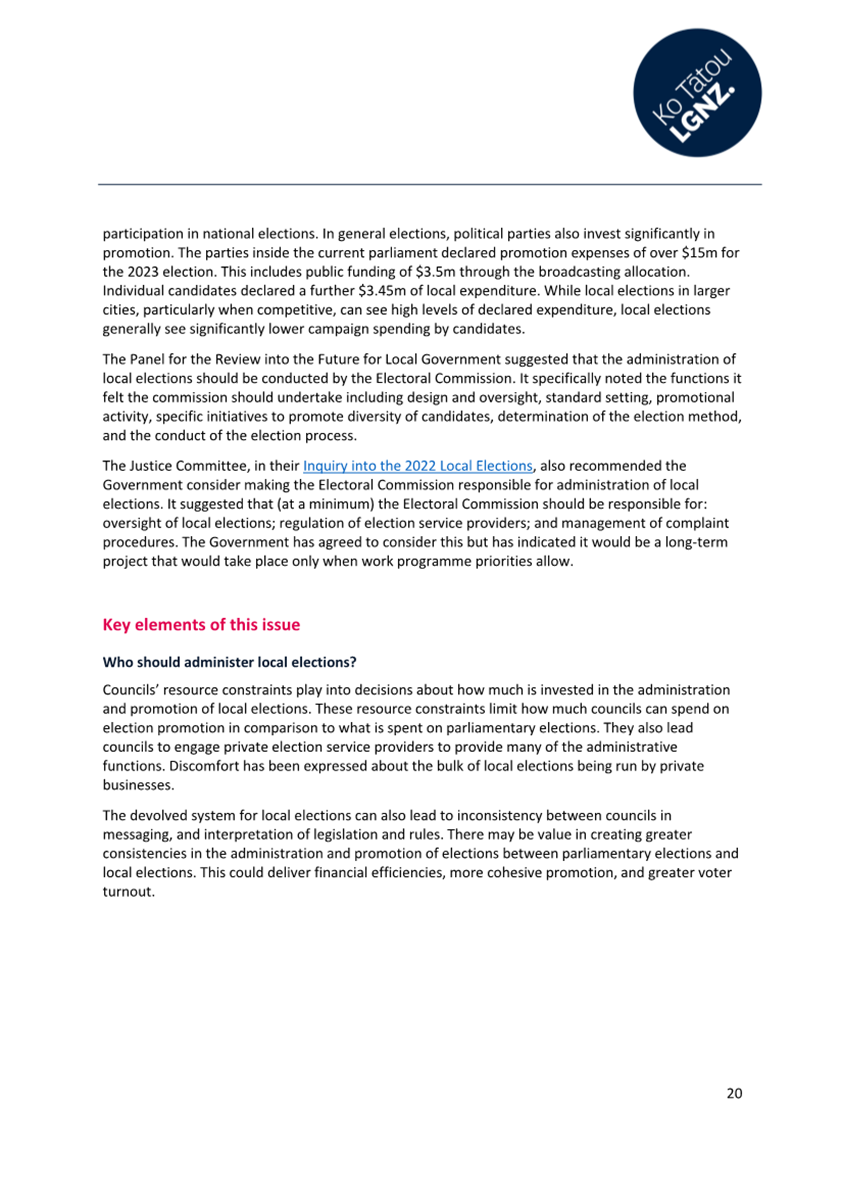



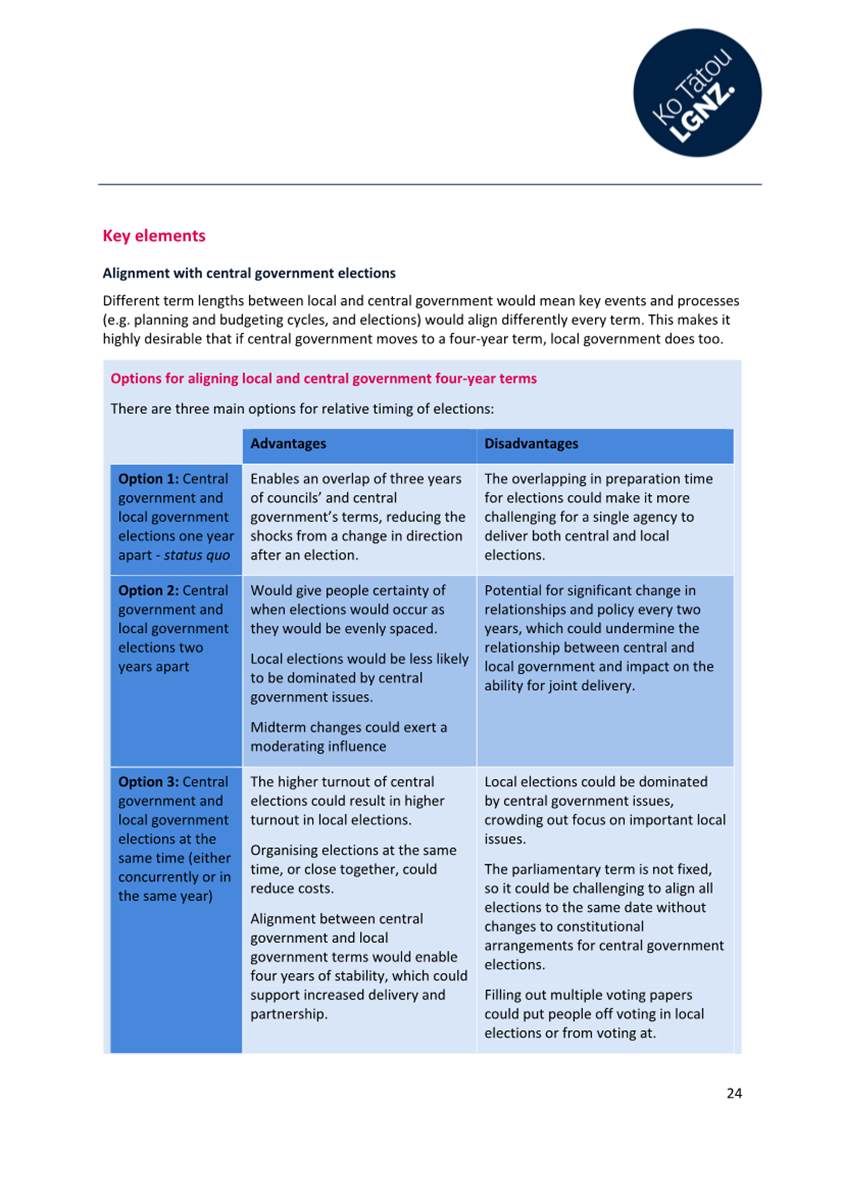




Item 8: Mayor's Report -
Isel and Botanic Gardens Bequest, Local Electoral Reform, Storm Recovery
Taskforce Terms of Reference, Sister Cities visit, Mayoral Discretionary Fund:
Attachment 2


Item 9: Nelson Arts Hub
- Business Case
|

|
Council
7 November 2024
|
Report
Title: Nelson
Arts Hub - Business Case
Report
Author: Mark Preston-Thomas
- Manager Community Partnerships
Report
Authoriser: Andrew White - Group Manager Community
Services
Report
Number: R28588
1. Purpose
of Report
1.1 To
approve a preferred option for the acquisition and operations for the Nelson
Arts Hub and form a project group to identify a suitable property.
1.2 To amend the
Terms of Reference (TOR) for the He Tātai Whetū Arts and Creativity Taskforce.
2. Summary
2.1 $100,000 was
allocated in the Annual Plan 2023/24 to investigate opportunities for a Nelson
Arts Hub. Following deliberations a $1.63m capex allocation was moved to the
2025/26 year.
2.2 A Business Case
for the work has been prepared by a Habilis New Zealand, with a preferred
option to acquire and repurpose an existing CBD building.
2.3 Forming an
officer led project group is the recommended next step to identify a suitable
building. A recommendation to purchase, or repurpose an existing council
building will then be made to Council.
The Terms of Reference for the He
Tātai Whetū Taskforce have been revised to support the next phase of
implementation work.
3. Recommendation
|
That the
Council
1. Receives
the report Nelson Arts Hub - Business Case (R28588) and its attachments; and
2. Approves
for the Nelson Arts Hub building acquisition the option to proceed with
identification of a suitable building for Council to purchase, or repurpose
an existing Council owned building; and
3. Approves
the Arts Development Agency to oversee governance of the Nelson Arts Hub; and
4. Approves
the Arts Development Agency lead operations of the Nelson Arts Hub; and
5. Directs
that a staff-led Nelson Arts Hub project group is formed to assess suitable
buildings, within the allocated budget to house an Arts Hub, taking into
account the requirements identified in the Arts Hub Business Case; and
6. Notes
that the He Tātai Whetū Arts and Creativity Taskforce will provide
oversight and guidance to the project group as it undertakes the assessment
of buildings for acquisition; and
7. Directs
that the Nelson Arts Hub Project Group report back to Council with a
recommendation for the procurement or repurposing of a suitable building; and
8. Approves
the revised Terms of Reference for the He Tātai Whetū Arts and
Creativity Taskforce detailed in Attachment 4 (NDOCS-1974015928-1096).
|
4. Background
4.1 Council allocated $100,000 operating
expenditure in the 2023/24 Annual Plan to investigate opportunities for the
development of a Nelson Community Arts Hub.
4.2 Community
consultation via the Long Term Plan 2024-34 (LTP) resulted in approximately 900
submissions commenting on the project to provide an Arts Hub with the majority
supporting Council’s proposal to purchase an existing building.
4.3 Through
the LTP deliberations Council decided to bring forward Capex funding of $1.63
million from 2027/28 to 2025/26 with the intent of allowing the Arts Hub
project to maintain momentum. Funding of $40,000 Opex was moved to 2026/27 to
assist with the establishment of the Hub following building purchase.
4.4 In March 2024 Boffa Miskel provided an
Arts Hub scoping document (attachment one).
4.5 Habilis was selected via a competitive
procurement to create the business case. Kent Duston and Sargam Shah
from Habilis will be in attendance to answer questions relating to the Business
Case.
4.6 Habilis
engaged with elected members, the Arts Community, the Taskforce and staff when
preparing the Business Case using Treasury’s ‘Better Business
Case’ methodology.
4.7 Iwi
engagement occurred utilising Johny O’Donnell (OD & Co) and the Te
Ohu Toi Ahurea (Arts and Heritage) council/iwi forum. Iwi engagement continues.
4.8 The
He Tātai Whetū Arts and Creativity Taskforce has provided input into
the development of this Business Case for the Arts Hub.
4.9 The Business
Case (attachment two) has now been received along with a detailed technical
appendix (attachment three). With Council approval, a staff led Arts Hub
Project Group will be formed to search for a suitable property to recommend to
Council for acquisition. The Taskforce will provide input to this Group.
5. Discussion
Business Case preferred option:
5.1 The preferred
option in the Business Case is:
5.1.1 To acquire an existing building
in the CBD, with a Project Group to recommend purchase, or the repurpose of a
suitable existing Council building, to Council.
5.1.2 For Council to retain ownership
of the building.
5.1.3 For the Arts Development Agency
to govern and manage the building alongside related activities.
Other
options considered:
5.2 Location and
building type: Repurposing an existing CBD building was consulted on via the
LTP, with community submissions in favour of a CBD location and utilising an
existing building rather than a new build or other locations. Repurposing an
existing building will be lower cost and generate less waste than a new build.
5.3 Ownership:
Building ownership could rest with iwi, the Arts Development Agency or a
commercial entity. Council ownership is the preferred option as:
5.3.1 Iwi have not signalled an
interest in ownership at this time.
5.3.2 The Art Development
Agency’s mandate is around arts sector leadership and activities rather
than building asset management.
5.3.3 A commercial owner creates risks
around security of tenure and cost increases beyond the control of Council or
the Arts Development Agency. A philanthropic landowner has not been identified
at this time.
5.3.4 Council has in-house expertise
with building asset management. This option was consulted on in the LTP and
supported in community submissions. While capex requirements for the land and
building purchase would reduce, the ongoing opex lease costs could be high if a
private landlord owned the building.
5.4 Governance:
Governance, being the strategic decisions about the way the Hub will operate
and the services it will provide could be exercised by Council, a new entity or
the Arts Development Agency.
5.4.1 Council governance would create
additional resourcing needs and a more distant link between governance and
operations.
5.4.2 A new entity would require
resourcing to set up and manage, has uncertain benefits and also risks a
disconnect between governance and operations.
5.4.3 Governance by the Arts
Development Agency is a pragmatic approach that utilises the existing skills
held by Arts Council / Arts Development Agency. It also provides for
community-driven decision making and allows a greater sense of ownership by the
arts and creativity sector.
5.5 Operations:
There is alignment between the mandate of the Arts Development Agency and
community hub operations, and no suitable alternate agency has been identified.
Council leading operations would create resourcing, leadership and
administrative challenges.
Arts
Hub Project Group membership and purpose:
5.6 A staff led
Project Group to identify a building to acquire is proposed comprising:
· Project lead (Manager
Community Partnerships).
· Properties team staff
(Strategic Properties Officer and Properties Asset Planner).
· City Centre Development
Programme Lead.
· Team Leader Arts and
Heritage.
· Arts Development Agency
/ Arts Council representative.
· Additional staff or
external members as specific needs arise.
5.7 The Project
Group will receive input from the Taskforce during the selection and
procurement process. Once a suitable property has been identified, the Project
Group will make a recommendation to purchase, or repurpose an existing council
owned building to Council.
5.8 Key functions of
the project group are:
· Direct activities to
identify and procure a suitable building.
· Recommend the property
acquisition to Council.
He
Tātai Whetu (Arts and Creativity) Taskforce:
5.9 The Taskforce
has provided input to the development of the Business Case and the preceding
Arts Hub scoping project. With this work almost complete and the other tasks
Council set for the Taskforce either complete or well advanced it would be
useful to update the Terms of Reference.
5.10 The community members of
the Taskforce have brought a diverse community perspective and invested
significant personal time in the work of the Taskforce. With this phase of the
Taskforce’s work complete it is proposed that membership now be composed
of elected members and that the Taskforce meet on an as needed basis, rather
than a regular schedule.
5.11 An updated track change
version of the Terms of Reference is provided for Council’s approval
(attachment four).
6. Options
6.1 Arts Hub Building
Ownership:
|
|
|
Advantages
|
· A building is identified
for potential acquisition and use.
· Council retains the
opportunity to approve purchase, or to repurpose an existing council
building.
· Council has robust
asset management processes if the building is council owned.
· Repurposing an
existing building is cheaper and less wasteful than a new build.
· Existing council
buildings may be considered for suitability.
|
|
Risks and Disadvantages
|
· Finding a suitable
property may be difficult.
· Council is responsible
for ongoing maintenance and depreciation.
|
|
|
|
Advantages
|
· Capex requirements for
building and land purchase are reduced.
· Depreciation,
structural building costs and risks are reduced.
|
|
Risks and Disadvantages
|
· Iwi or philanthropic
owners have not been identified.
· Unless gifted by
Council, the Arts Development Agency would require funding for a building
purchase. The Arts Development Agency would also need to acquire building
asset management capability, which may detract from operations.
· A commercial landlord
will seek a commercial return at increased cost over the longer term with
reduced security of tenure.
|
|
|
|
Advantages
|
· Budget savings.
|
|
Risks and Disadvantages
|
· Arts Development
Agency activity and opportunities are constrained.
· Community arts
aspirations and expectations may not be realised.
|
6.2 Arts Hub Governance:
|
|
|
Advantages
|
· Utilises
existing skills held by Arts Development Agency.
· Supports
a connected approach between governance and operations.
|
|
Risks and Disadvantages
|
· None
identified.
|
|
|
|
Advantages
|
· Council
has greater oversight of the Arts Hub.
|
|
Risks and Disadvantages
|
· Additional
staff time and resources required with uncertain benefits.
· Administratively
complex resulting in less responsive decision making.
· Reduced
alignment between governance and operations.
· A
new entity would generate additional costs and complexity.
|
6.3 Arts Hub
Operations.
|
|
|
Advantages
|
· Aligns
with defined responsibilities held by the Arts Development Agency.
|
|
Risks and Disadvantages
|
· None
identified.
|
|
|
|
Advantages
|
· None
identified.
|
|
Risks and Disadvantages
|
· Council
leadership would create decision making and resourcing challenges.
· Administratively
inefficient.
· No
alternative agencies currently exist.
|
6.4 Taskforce Updates
|
|
|
Advantages
|
· Provides
continuing elected member input into the Arts Hub and related activities.
· Does
not require a further time commitment for community members into Hub
procurement details.
|
|
Risks and Disadvantages
|
· Future discussions
might be of interest to some community Task Force members.
|
|
|
|
Advantages
|
· Taskforce
would retain a broad range of perspectives from community members.
|
|
Risks and Disadvantages
|
· Resignations
from community members would need to be recruited.
· Community
members may lose interest in a Council led procurement process.
|
7. Conclusion
7.1 It is
recommended that Council receives the Arts Hub Business Case and authorises a
staff project group to lead a property search.
8. Next Steps
8.1 Establish the
Project Group to identify potential buildings and make a recommendation to
Council once a suitable building is identified.
Attachments
Attachment 1: NDOCS-1171345905-865
Arts Hub Scoping Document Boffa Miskel ⇩
Attachment 2: NDOCS-1171345905-1113
Arts Hub Business Case ⇩
Attachment 3: NDOCS-1171345905-1114
Arts Hub Technical Appendix ⇩
Attachment 4: NDOCS-1974015928-1096
He Tatai Whetu Revised Terms of Reference ⇩
|
Important considerations for decision making
|
|
Fit with Purpose of Local Government
This decision to progress the project to deliver an
Arts Hub for Nelson supports the social, cultural and economic well-being of
the community.
|
|
Consistency with Community Outcomes
and Council Policy
The Arts Hub contributes to the outcome ‘Our
communities have opportunities to celebrate and explore their heritage,
identity and creativity’, and ‘Our communities have access to a
range of social, educational and recreational facilities and
activities’.
|
|
Risk
There is a medium risk that due to financial
pressures it may be difficult to procure a building that meets Council and
community expectations and is within budget. This can be mitigated by careful
focus on the essential elements required for an Arts Hub as identified in the
Business Case.
|
|
Financial impact
The operation of the Arts Hub by the Arts
Development Agency is a budgeted activity for Council.
|
|
Degree of significance and level of
engagement
This matter is of low significance because the Arts
Hub was specifically consulted on during the development of the Long Term
Plan (2024-34) and He Tātai Whetū (Arts and Creativity Strategy). No
further engagement is proposed.
|
|
Climate Impact
The proposal in this report will
have no impact on the ability of Council to proactively respond to the
impacts of climate change now or in the future.
|
|
Inclusion of Māori in the
decision making process
Iwi engagement occurred via the Te Ohu Toi Ahurea
forum and directly with Iwi.
|
|
Delegations
This is a matter for Council.
|
Item 9: Nelson Arts Hub - Business Case: Attachment 1














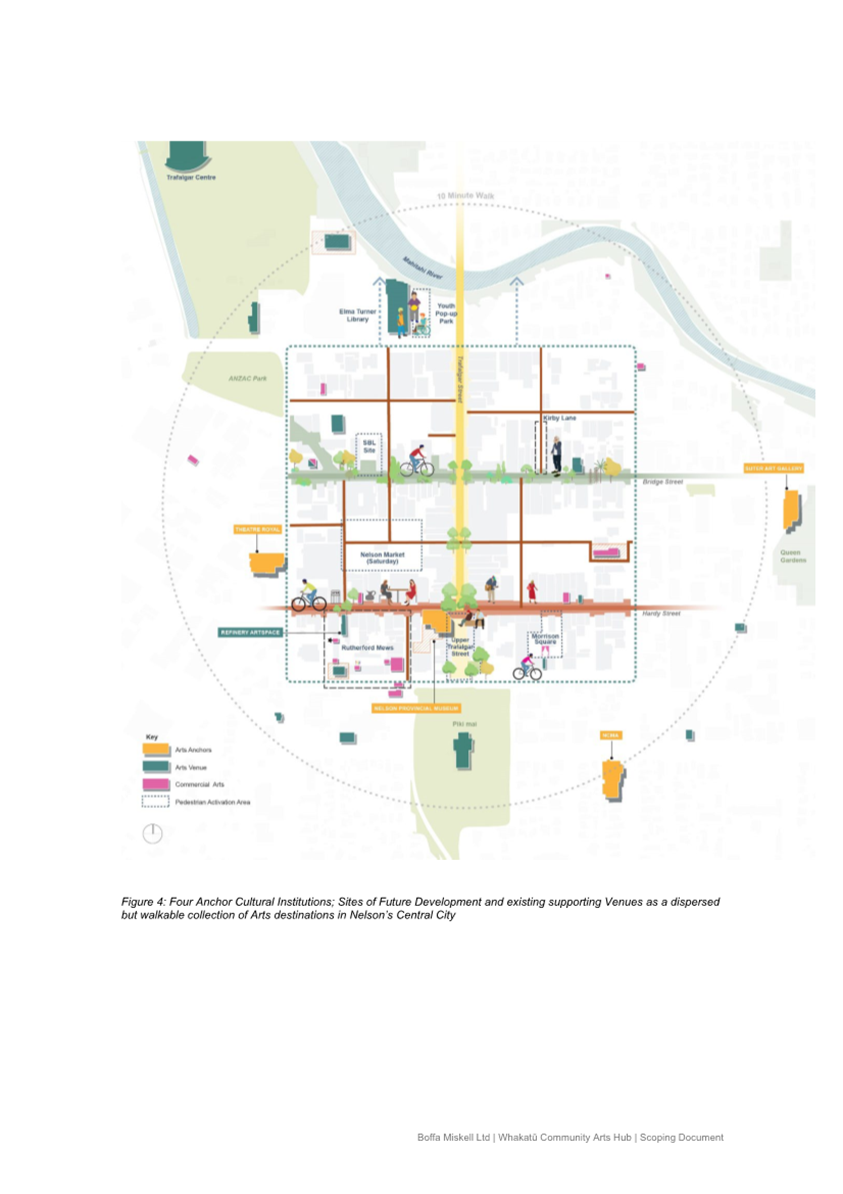
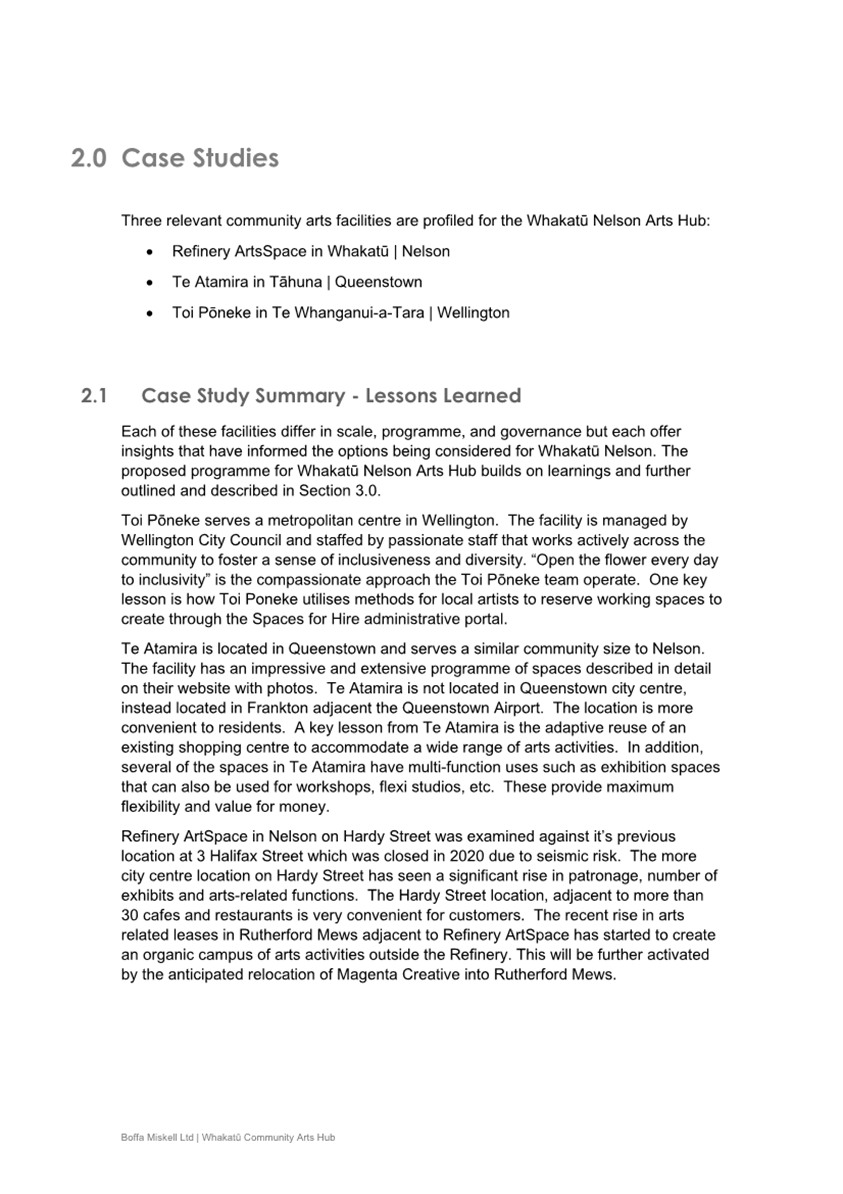
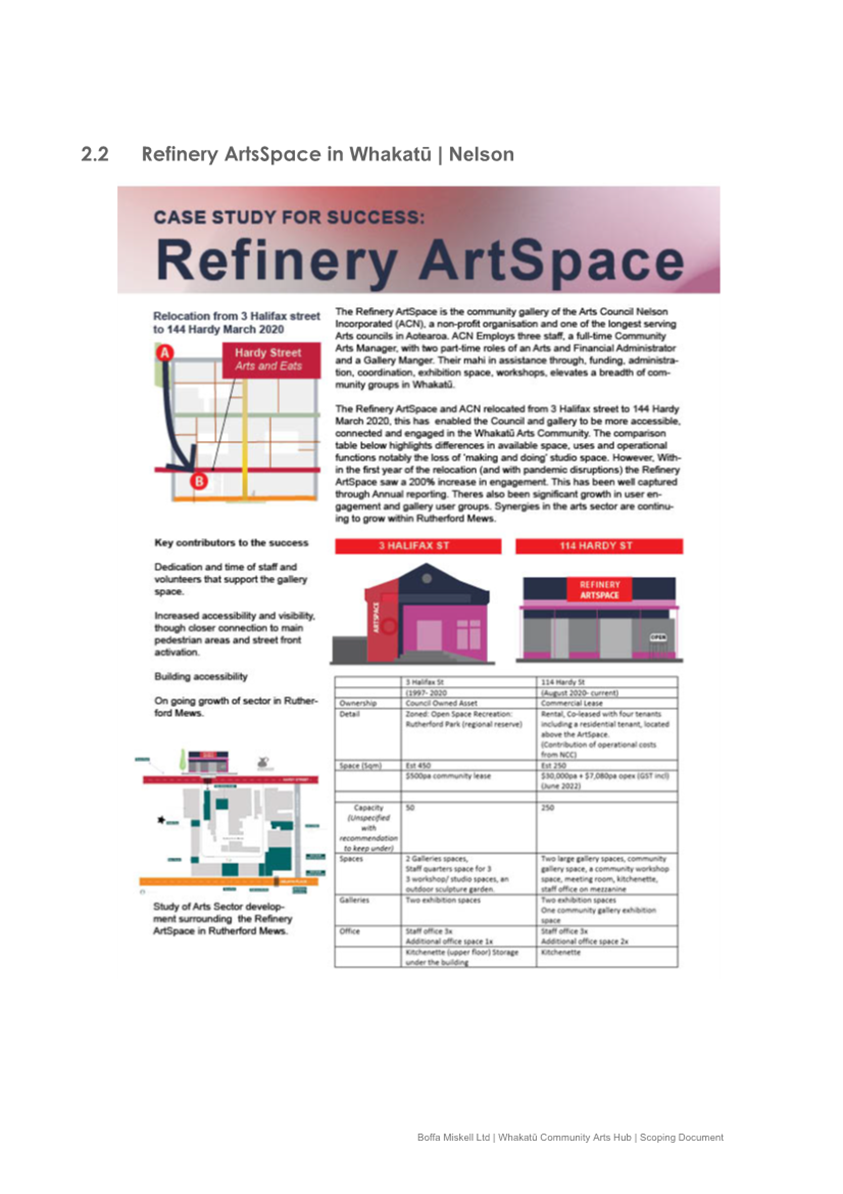










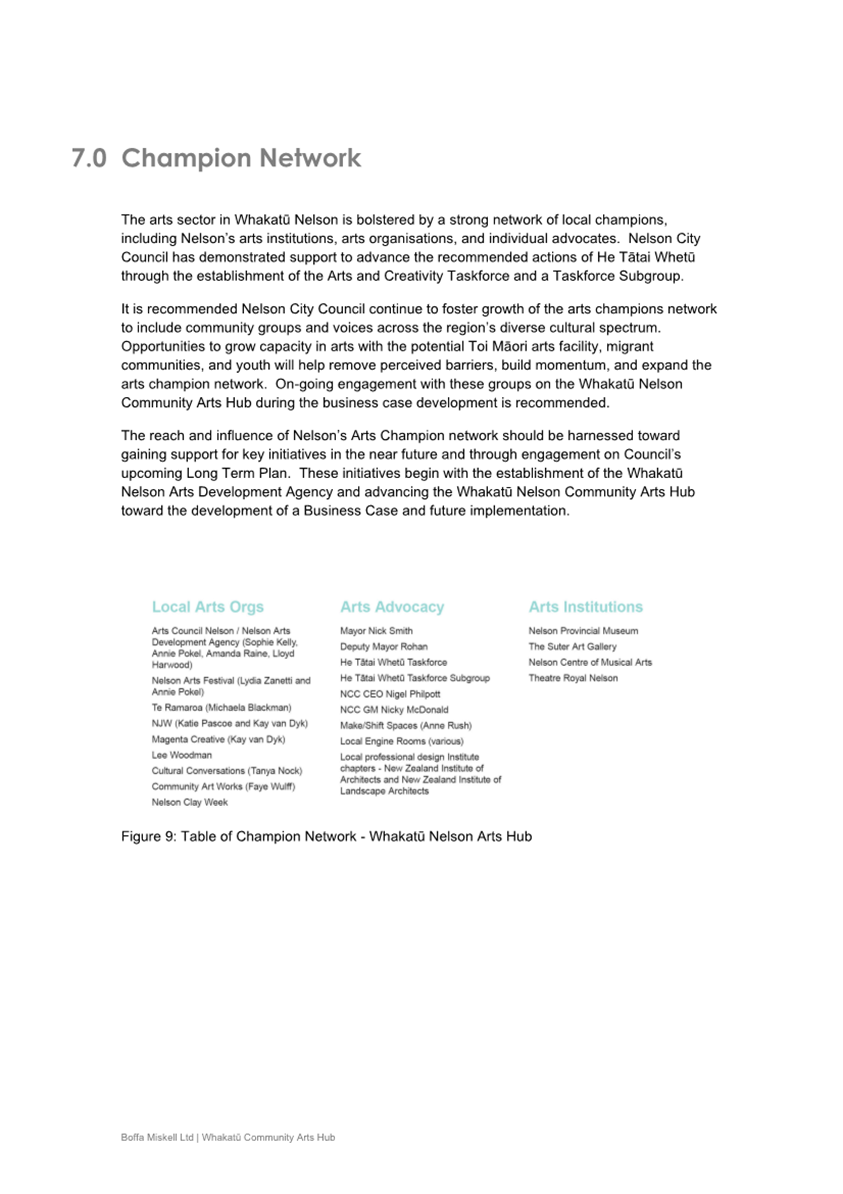

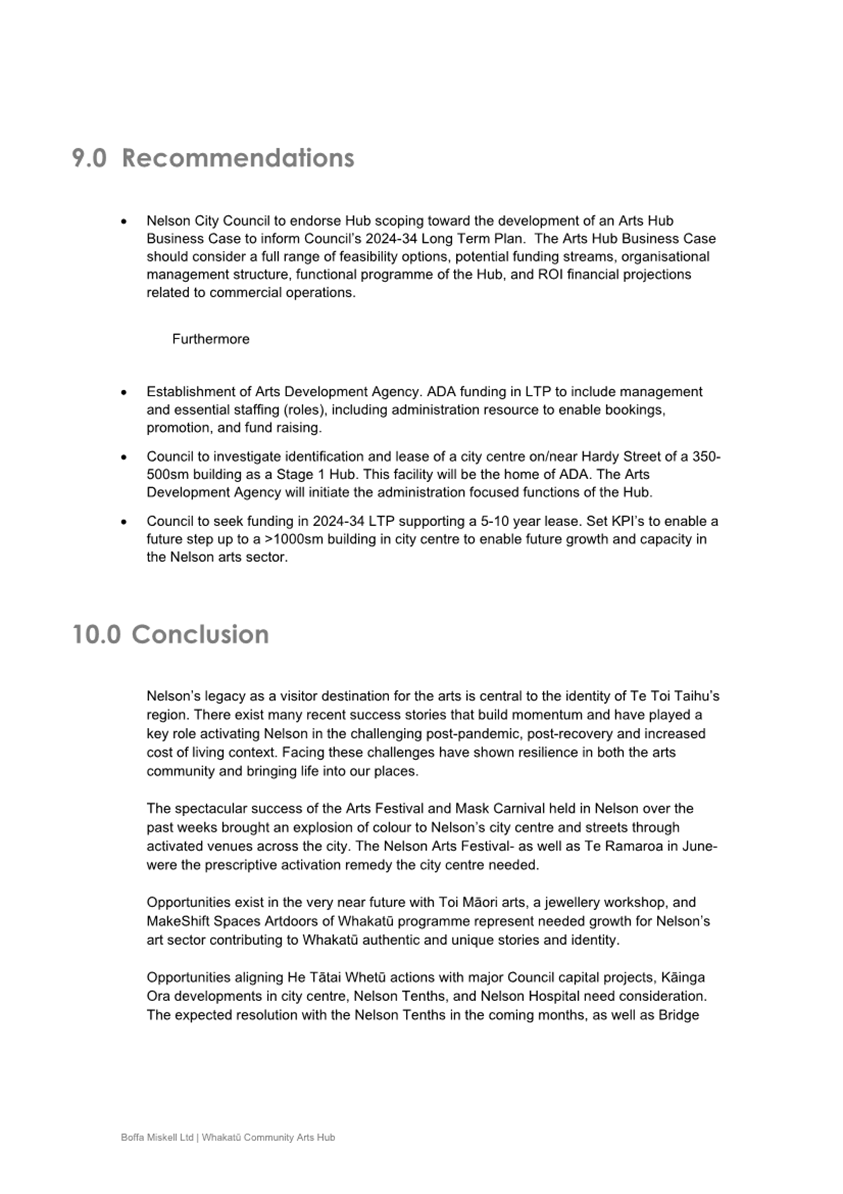



Item 9: Nelson
Arts Hub - Business Case: Attachment 2

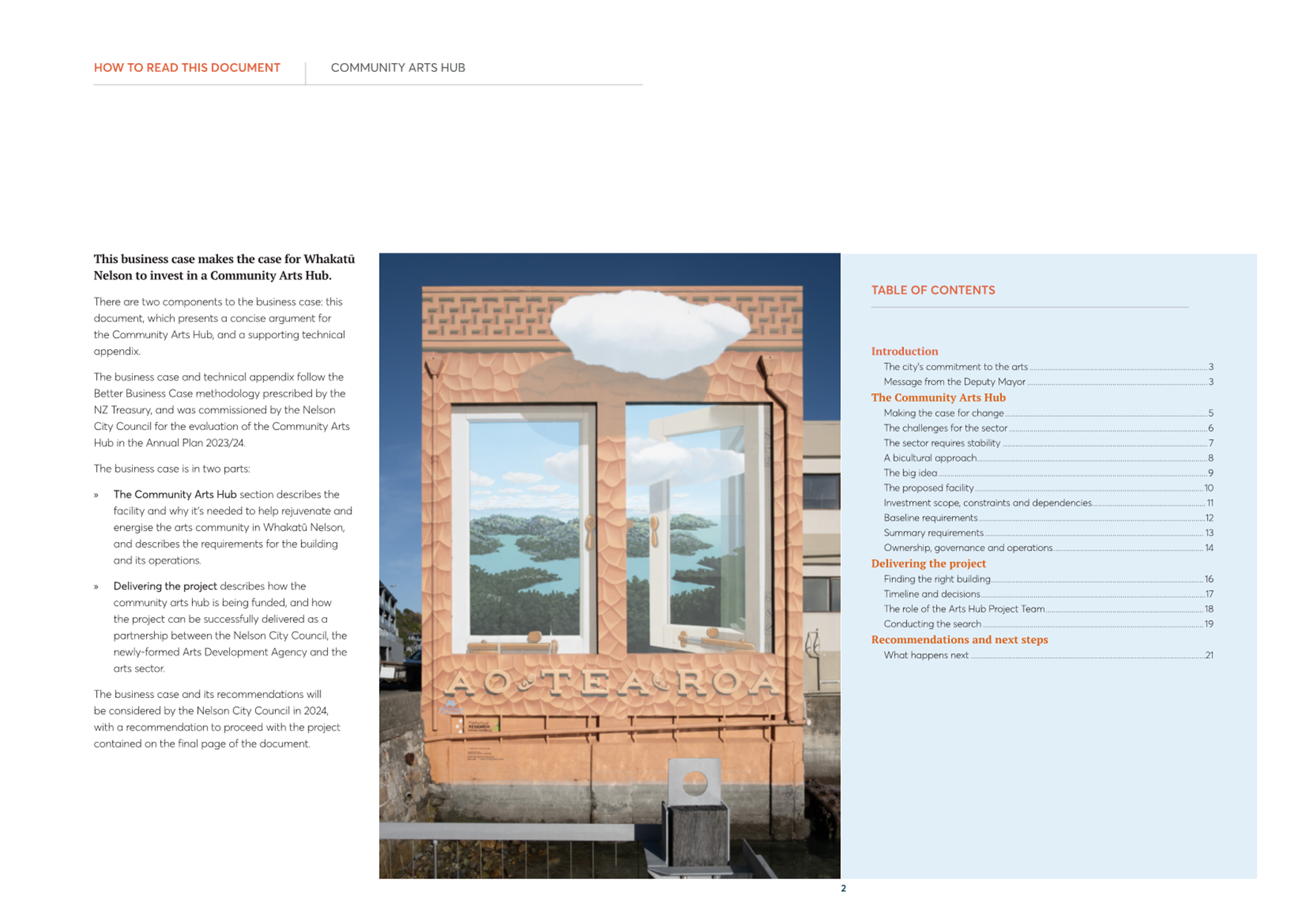






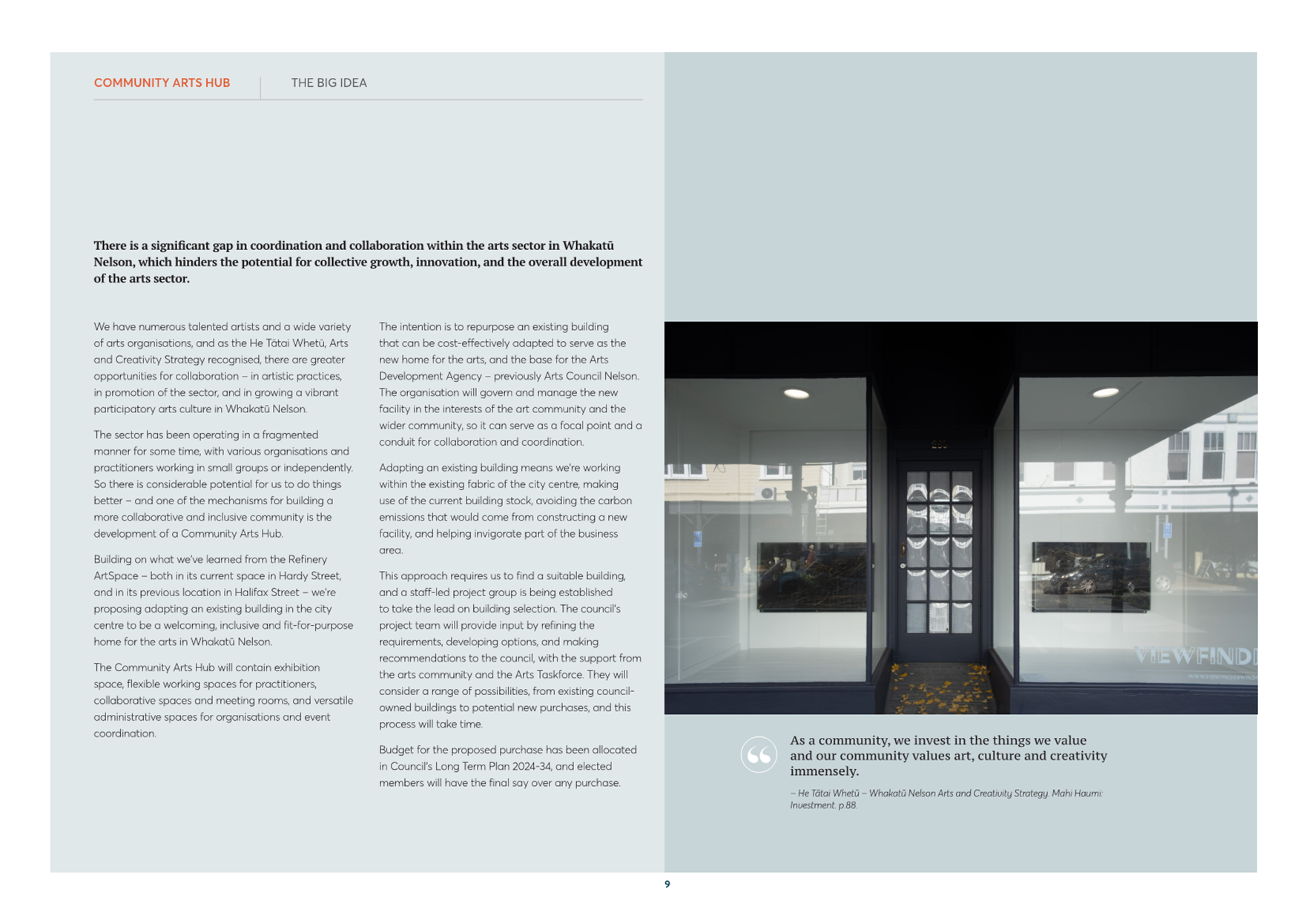









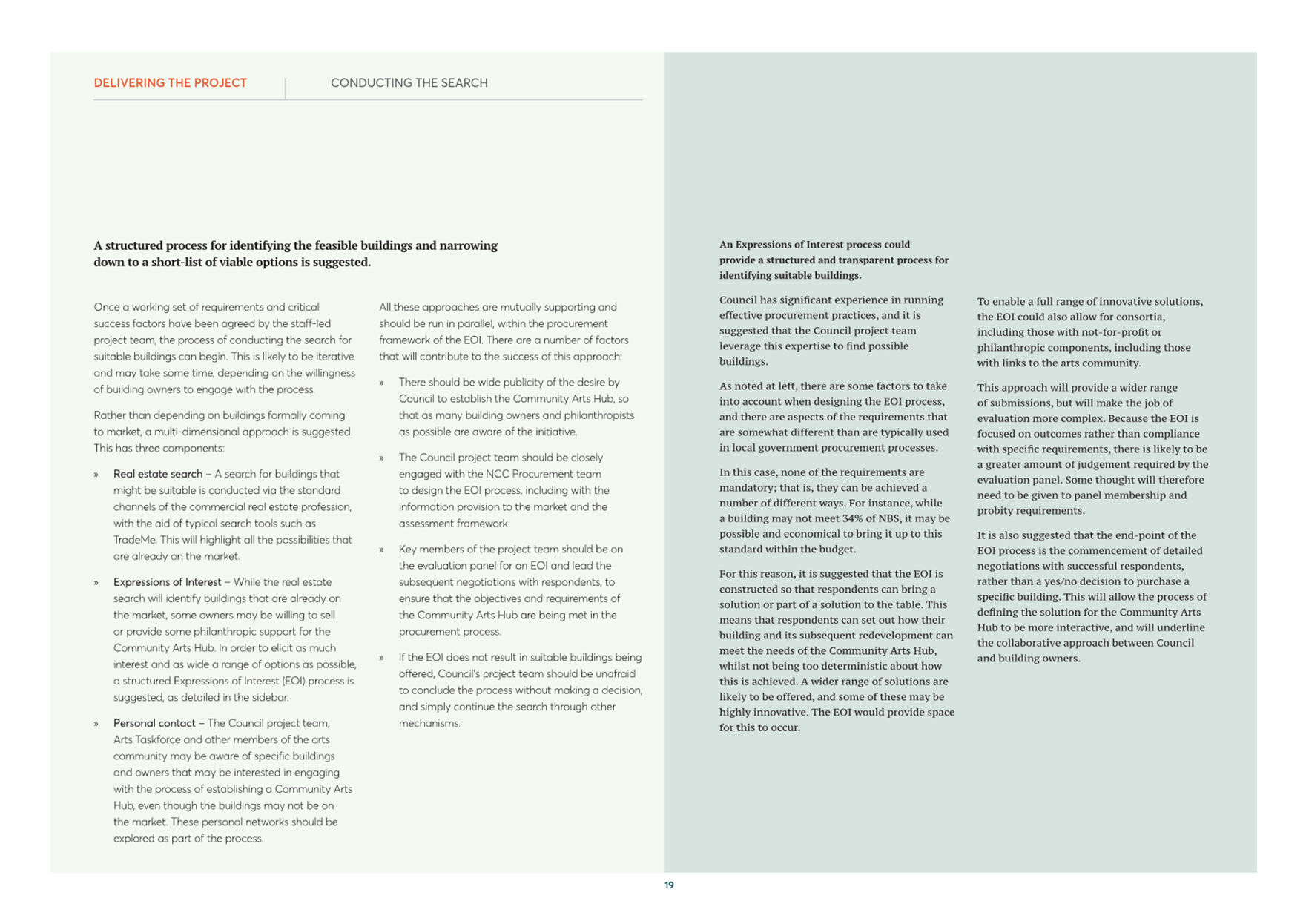


Item 9:
Nelson Arts Hub - Business Case: Attachment 3






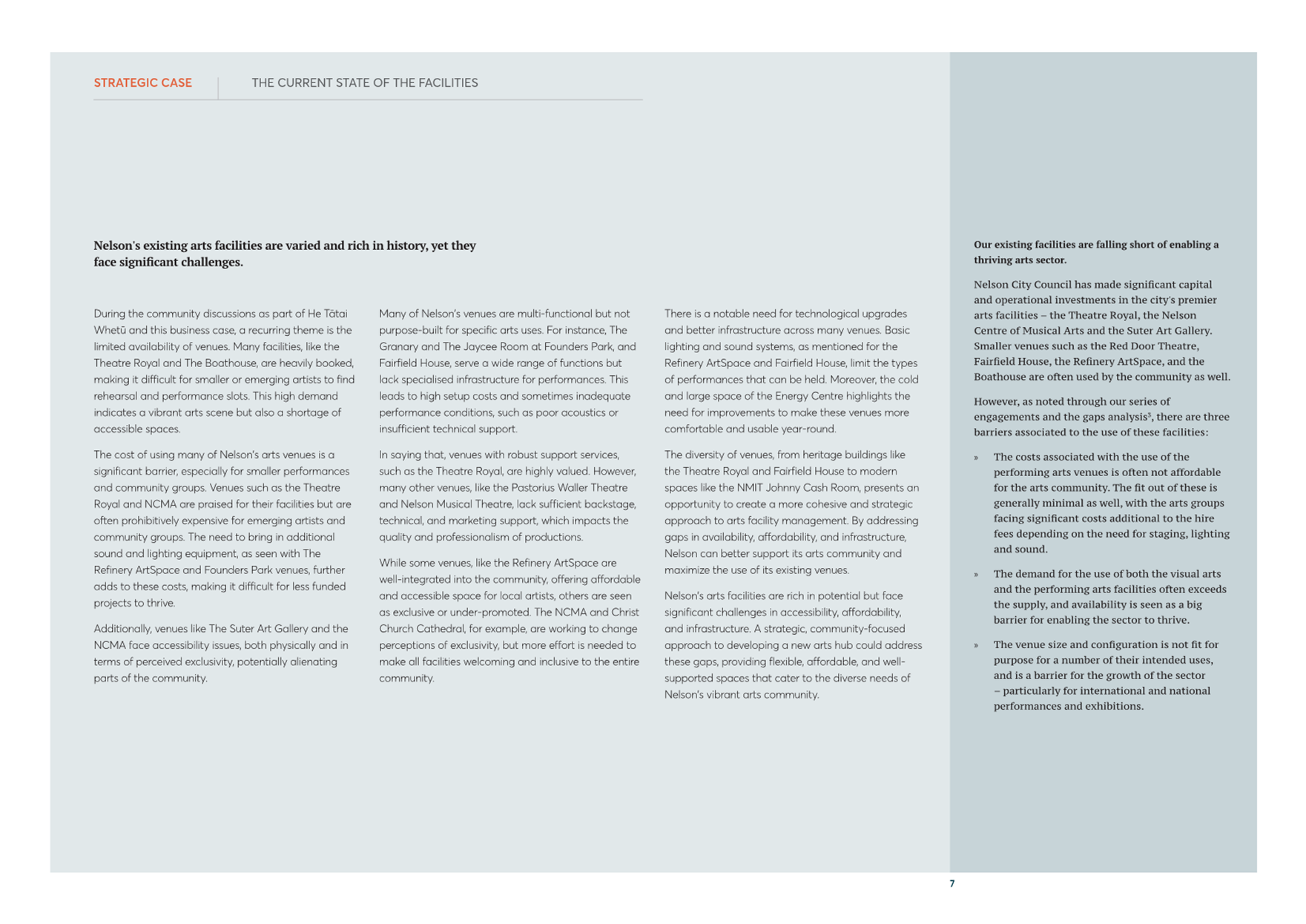








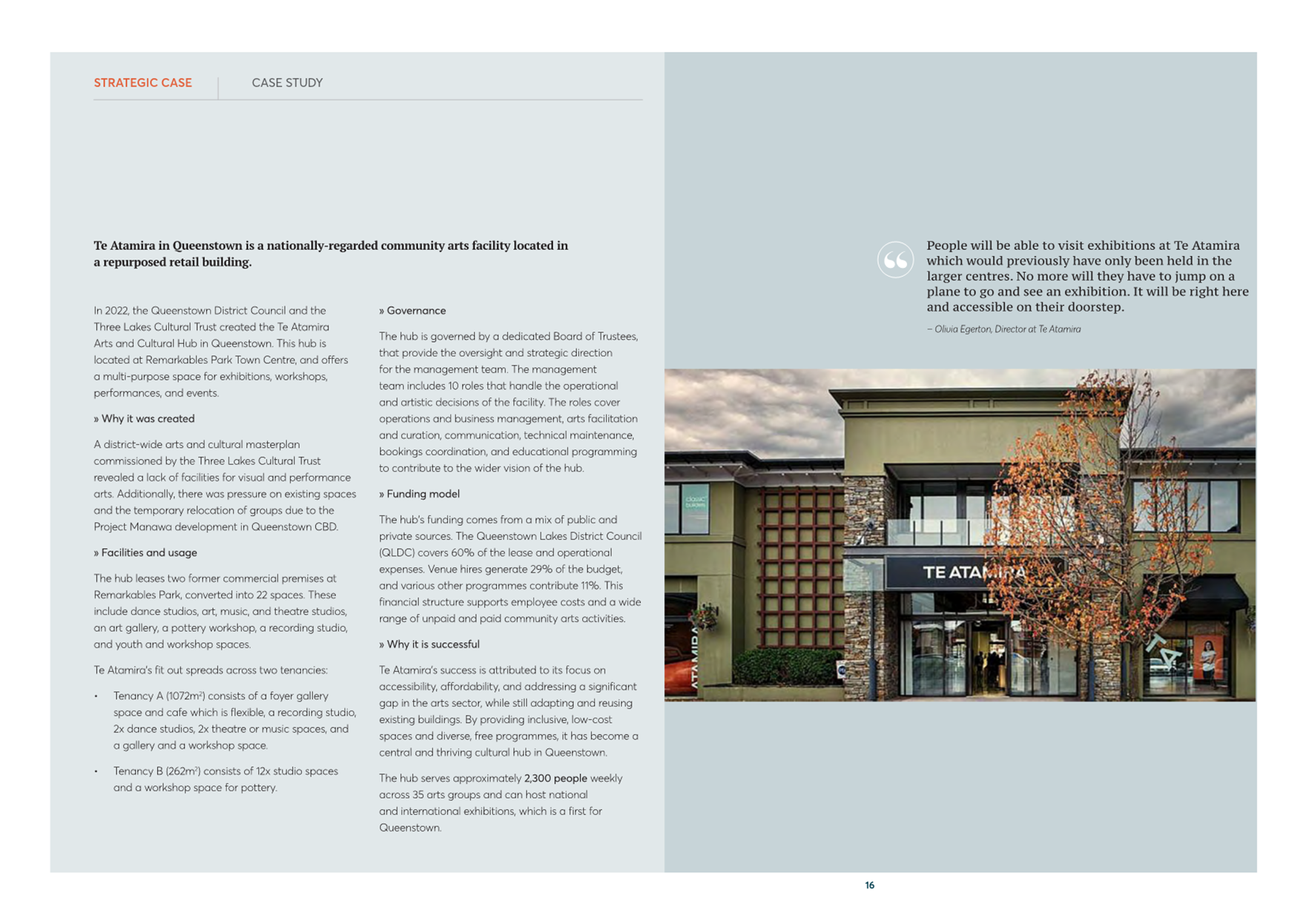
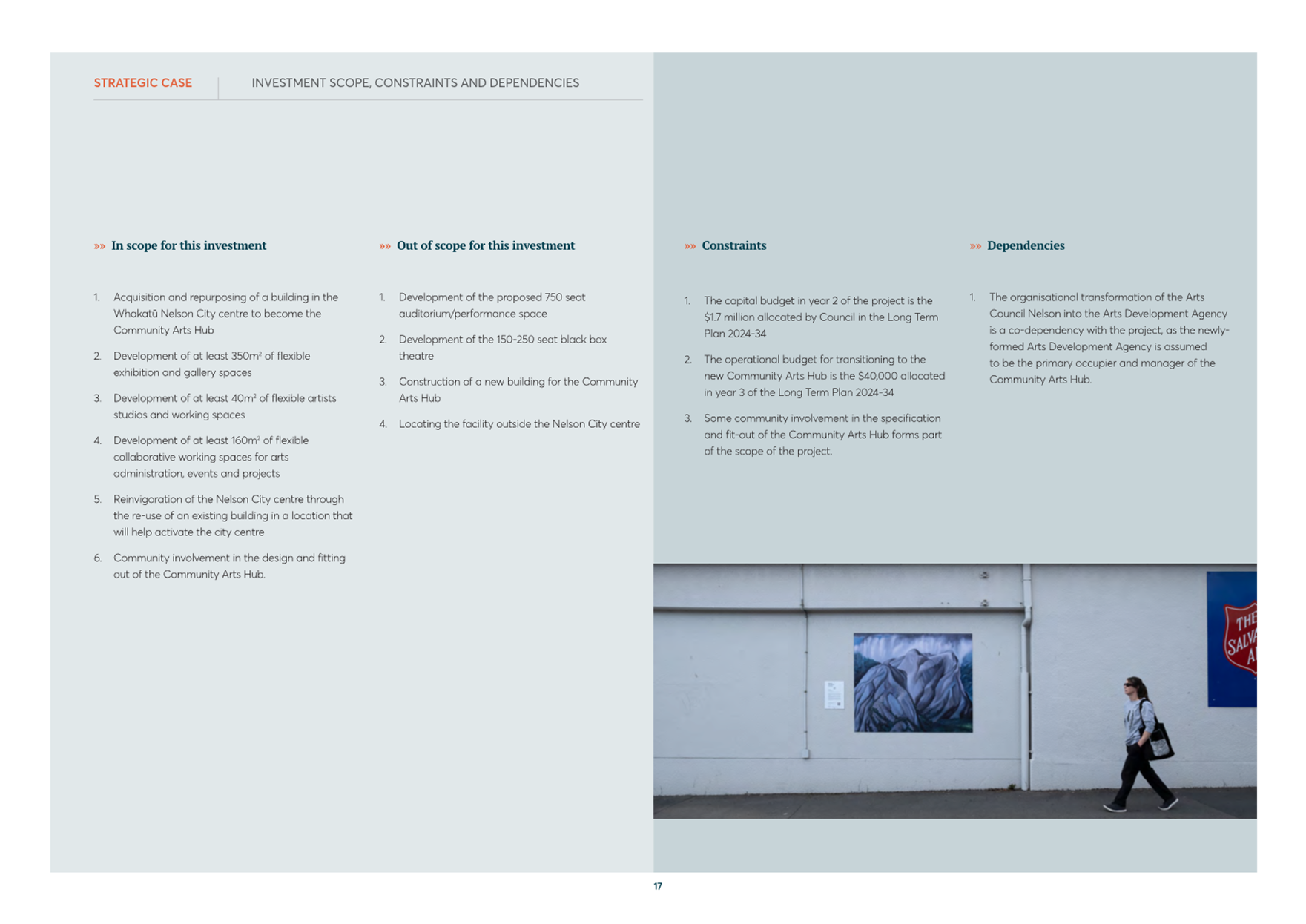
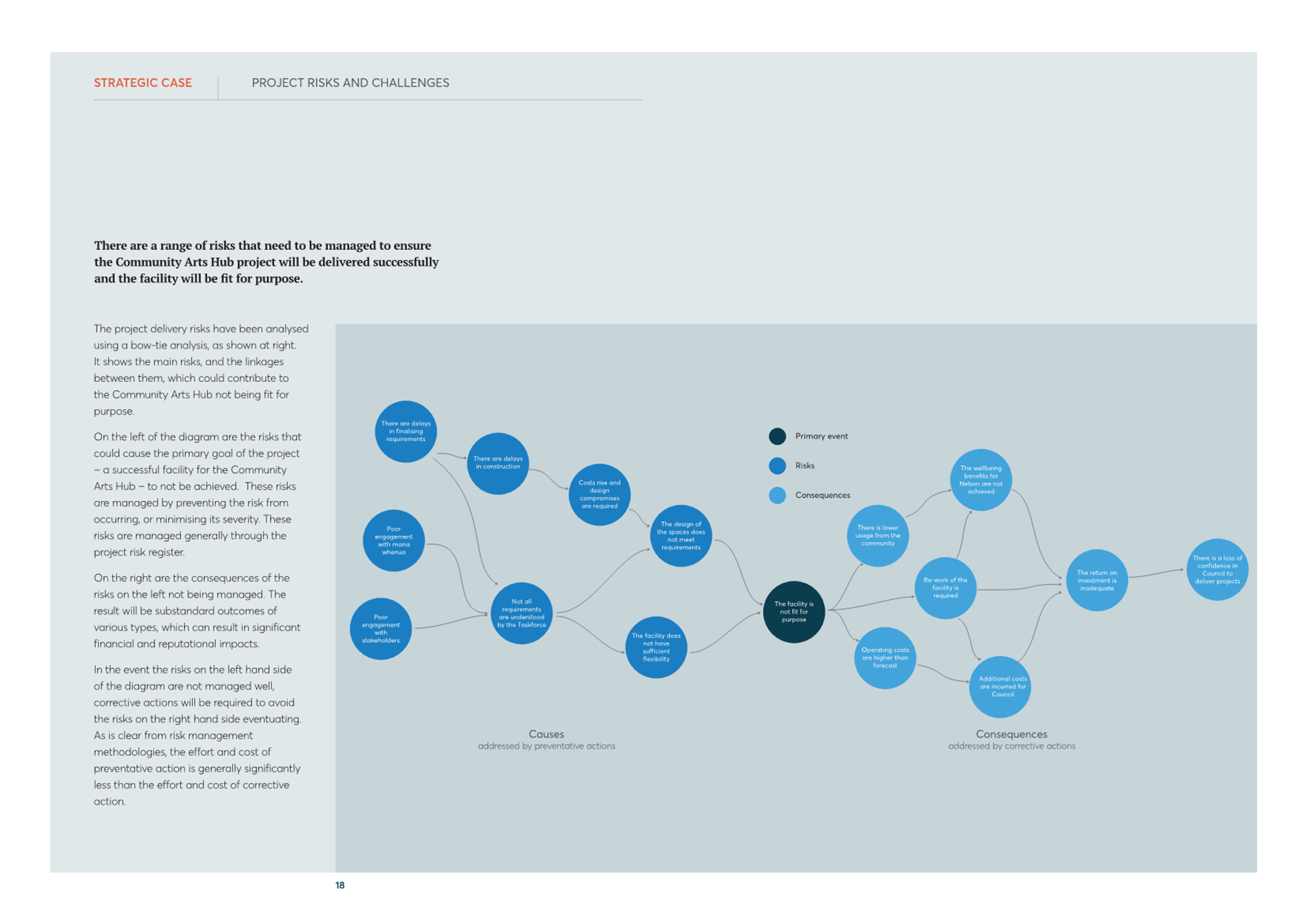

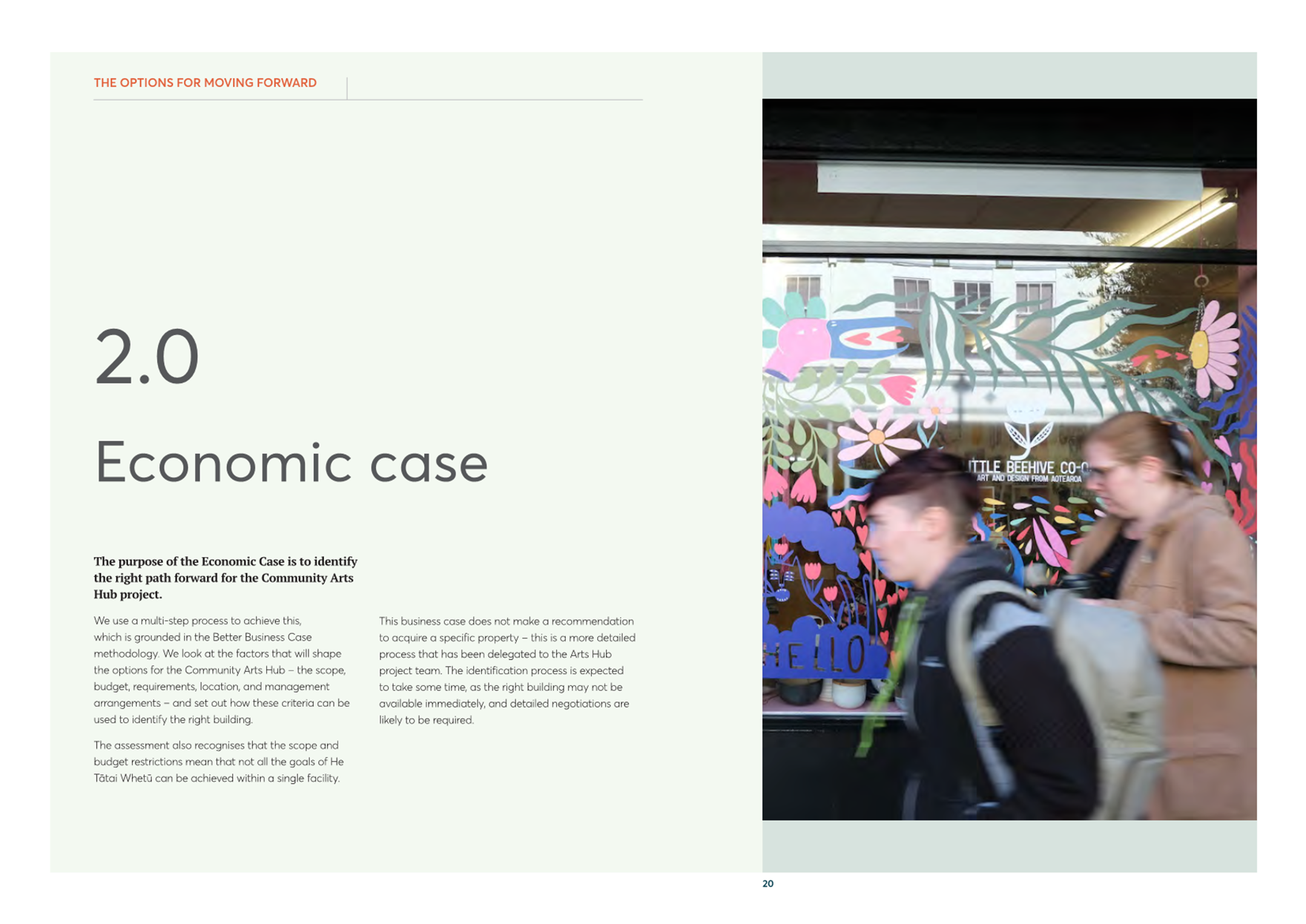






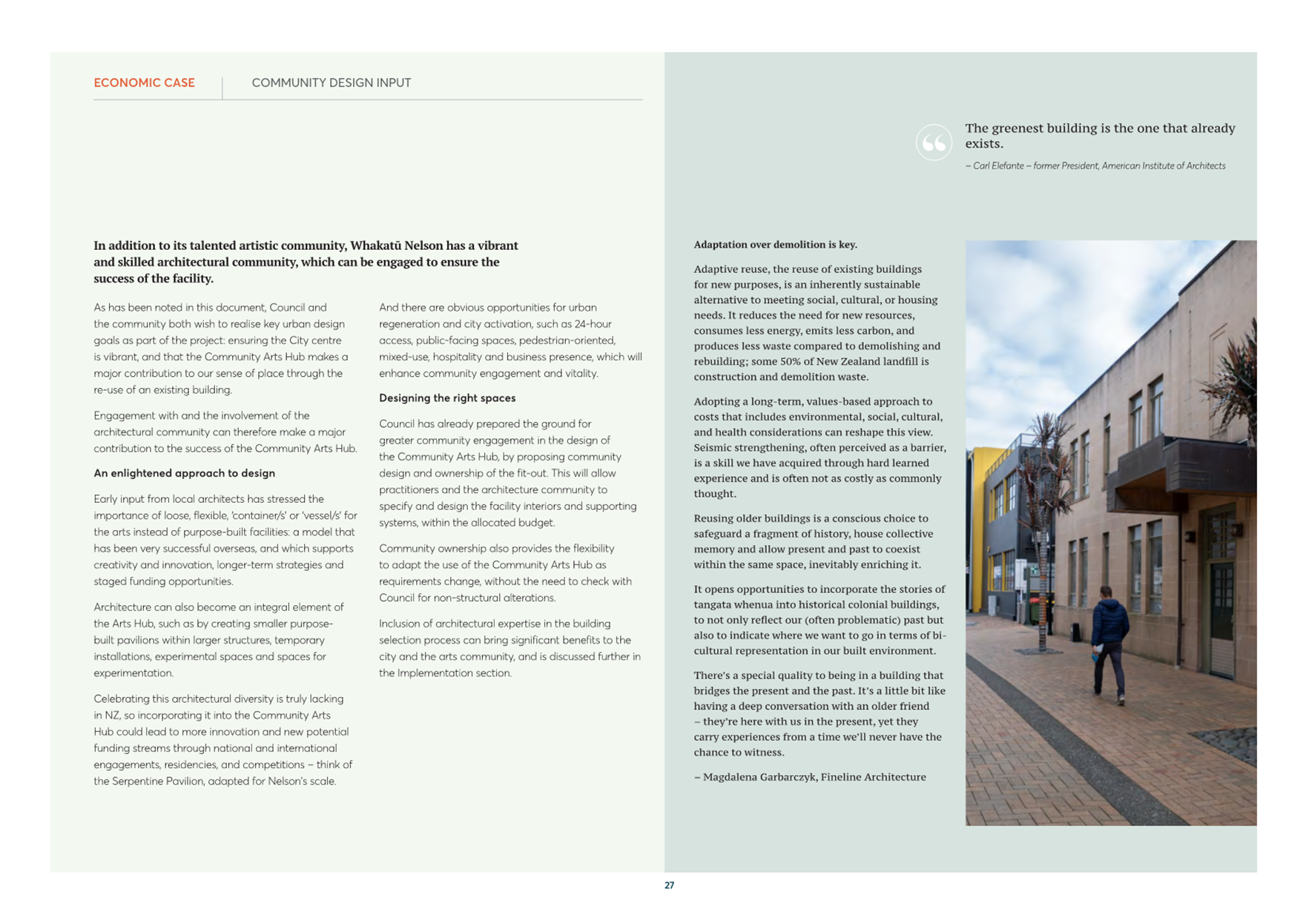






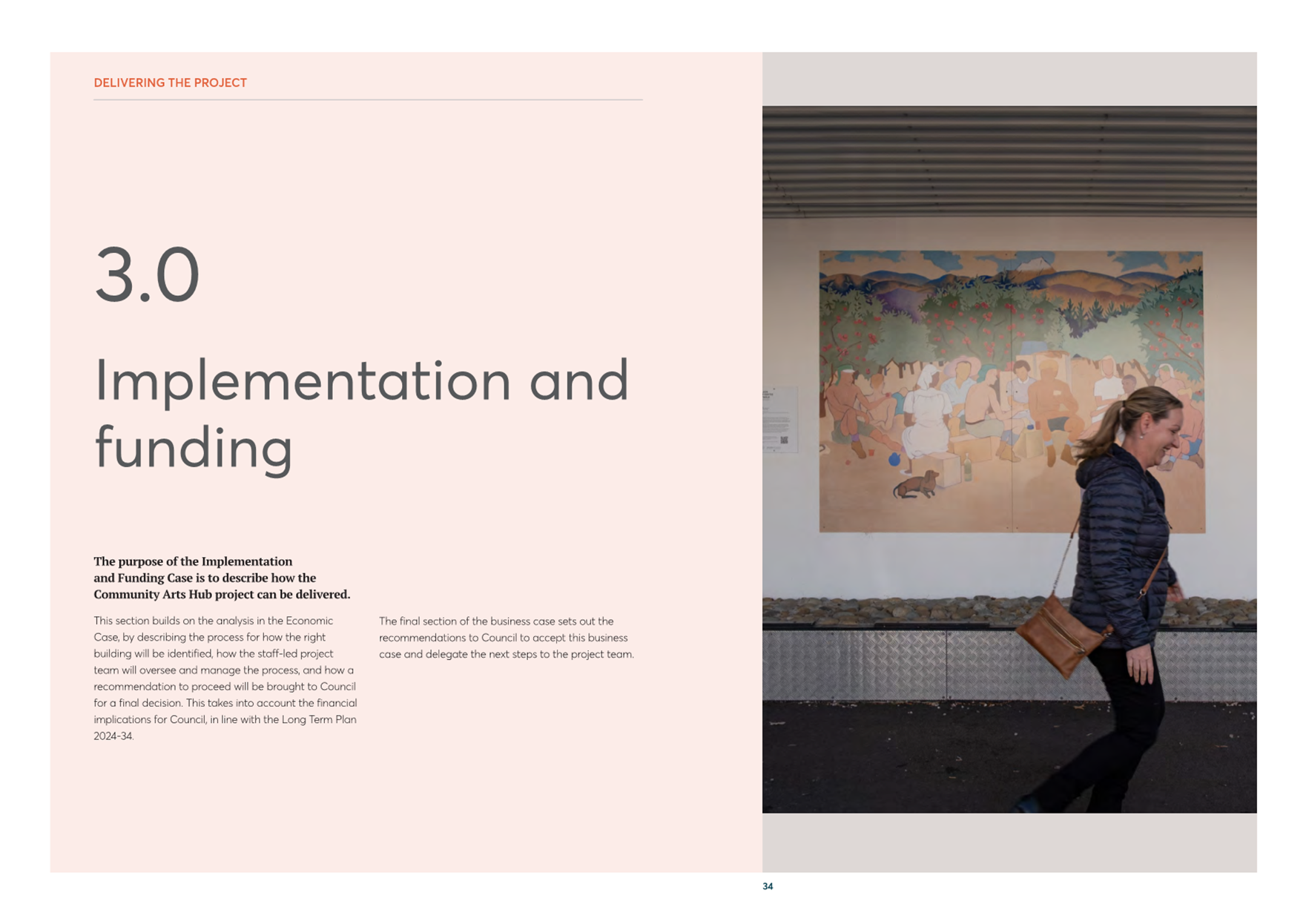





Item 9:
Nelson Arts Hub - Business Case: Attachment 4



Item 10: Approval to
Bring Forward Budget - Regional Infrastructure Fund Flood Resilience Projects
|

|
Council
7 November 2024
|
Report
Title: Approval
to Bring Forward Budget - Regional Infrastructure Fund Flood Resilience
Projects
Report
Author: Toby Kay -
Activity Engineer
Report
Authoriser: Alec Louverdis - Deputy Chief Executive /
Group Manager Infrastructure
Report
Number: R28845
1. Purpose
of Report
1.1 To approve
bringing forward funding set aside in the Long Term Plan between years 2027-28
and 2033-34 into financial years 2024-25 to 2026-27 as part of the Regional Infrastructure Fund (RIF) – Flood
Resilience Programme to progress two projects, Maitai Flood Management and
Nelson Flood Repairs earlier.
1.2 To approve other
budgetary adjustments across activities following implementation of the above
transfers.
2. Summary
2.1 A number of
significant flood resilience works are planned within catchments impacted by
the August 2022 flood event and funding has been allocated for this within the
Long Term Plan 2024-2034 (LTP). This includes Maitai Flood Management projects
in the Maitai area and at Queens Gardens, and Nelson Flood Repair projects in
the Oldham Creek, Little Todd Valley Stream and Hillwood Stream catchments.
2.2 Co-financing for
these flood resilience works has recently been secured from the Ministry of
Business, Innovation and Employment (MBIE) which amounts to 60% of the total
project cost of $15 Million. The maximum co-financing available from MBIE for
the projects is $9 Million.
2.3 A requirement of
this funding agreement is that all projects need to be completed by June 2027.
To ensure timely delivery and to secure the funding, Council budgets set aside
for flood resilience in the current LTP need to be brought forward to expedite project
delivery.
2.4 Officers have
proposed, due to the significance of the funding and implications thereof, that
this stream of work be reported to the Storm Recovery Taskforce (Taskforce)
which is operating well in dealing with all storm related recovery matters.
This proposal has been presented to and is supported by the Taskforce and has
been addressed in the Mayors Report (this agenda) to amend the Terms of
Reference to allow for this. Should this not be approved an alternative
mechanism of governance reporting will be required due to the significance of
the matter at hand.
2.5 Finally a number
of financial adjustments across the Stormwater and Flood Protection activities
are required to align the RIF and Storm Recovery
projects.
3. Recommendation
|
That the
Council
1. Receives
the report Approval to Bring Forward Budget - Regional Infrastructure Fund
Flood Resilience Projects (R28845); and
2. Approves
bringing forward budget to ensure all conditions of the Regional
Infrastructure Fund are met and to secure 60% co-funding from the Ministry of
Business Innovation and Employment, of:
a $6,500,000 set aside in the current
Long Term Plan between 2028/29 and 2033/34 to 2024/25 - 2026/27 to allow
the Maitai Flood Management projects to proceed ahead of schedule with
the split across the relevant financial years as detailed in the report
(R28845); and
b $3,000,000 set aside in the current
Long Term Plan between 2027/28 and 2028/29 to 2024/25-2026/27 to allow Nelson
Flood Repairs projects to proceed ahead of schedule with the split across the
relevant financial years as detailed in the report (R28845);
3. Approves
the re-allocation of $2,500,000 from the Flood Protection Activity to the
Stormwater Activity as follows:
a. $1,700,000 from Maitai Flood Management to
Queens Gardens Stormwater in years 2024/25-2026/27;
b. $500,000 from Flood Recovery to Cleveland Terrace Intake Upgrade
in 2025/26; and
c. $300,000 from Flood Recovery to Devenish
Place Intake in 2025/26.
|
4. Background
4.1 Central
Government co-investment in flood management infrastructure has recently been
secured following business cases developed and submitted by Te Uru Kahika
– Regional and Unitary Councils Aotearoa, in December 2022 and November
2023. This new Regional Infrastructure Fund (RIF) co-financing support from the
MBIE follows on from previous funding for shovel-ready infrastructure projects
under the Covid-19 Response and Recovery Fund, which included $7.5 million of
funding from Kānoa - Regional Economic Development & Investment Unit
for the implementation of the Saxton Creek Stage 4 upgrade.
4.2 The November
2023 Business Case – Before the Deluge 2.0 - included a list of 80
proposed flood protection projects across the country with a total budget of
approximately $329 Million. Three projects were proposed for Nelson City
Council (NCC) under the business case with a total value of $18 Million. Two of
these projects estimated at $15 Million were approved under the first tranche
of funding. MBIE co-financing for these two RIF funded projects is up to $9
Million, representing 60% of total project cost.
4.3 The two Nelson
projects: Maitai Flood Management and Nelson Flood repairs target areas
impacted by the August 2022 storm, including residential and commercial areas
along the Maitai River, and smaller stream catchments north of the city at
Dodson Valley, Little Todd Valley and the Glenduan Wakapuaka areas. The
proposed works include a range of river and stream channel repairs, stopbank
improvements, and drainage works to address capacity issues and mitigate the
risk of culvert overflows and backflow through the stormwater network resulting
from elevated river and stream flood levels.
The grant funding agreement for
this co-investment will remain in place until June 2027, providing a three year
window in which to implement these flood resilience projects. Whilst funding
for this work has been approved by Council as part of the 2024-34 Long Term
Plan (LTP), the fast tracking of these RIF projects will not be possible unless
funding is brought forward into the first three years of the LTP.
5. Discussion
Funding
5.1 Funding for the
projects envisioned and approved under the RIF are already in Council’s
current approved LTP as part of the Maitai Flood management project and under
the Flood Recovery Programme as shown below (uninflated prices). Total funding
currently available for RIF projects in the first three years of the LTP is
$5.8 Million.
|
Detail
|
Year1
2024/25
|
Year2
2025/26
|
Year3
2026/27
|
Year4
2027/28
|
Year5
2028/29
|
Year6
2029/30
|
Year7
2030/31
|
Year8
2031/32
|
Year9
2032/33
|
Year10
2033/34
|
|
Maitai
Flood Management
|
300,000
|
500,000
|
500,000
|
1,000,000
|
1,000,000
|
1,500,000
|
2,000,000
|
2,000,000
|
2,000,000
|
2,000,000
|
|
Queens
Gardens Stormwater
|
0
|
0
|
0
|
0
|
0
|
0
|
0
|
0
|
0
|
0
|
|
Flood
Recovery River Stream Improvements
|
500,000
|
1,250,000
|
1,600,000
|
1,550,000
|
1,550,000
|
0
|
0
|
0
|
0
|
0
|
|
Cleveland
Terrace Intake Upgrade
|
750,000
|
0
|
0
|
0
|
0
|
0
|
0
|
0
|
0
|
0
|
|
Devenish
Place Intake resilience
|
200,000
|
200,000
|
0
|
0
|
0
|
0
|
0
|
0
|
0
|
0
|
|
Total
|
1,750,000
|
1,950,000
|
2,100,000
|
2,550,000
|
2,550,000
|
1,500,000
|
2,000,000
|
2,000,000
|
2,000,000
|
2,000,000
|
5.2 To allow for
completion of the RIF funded projects by June 2027, funding needs to be brought
forward from the current LTP timeframes. The uninflated budgets required to
implement the RIF programme are shown below. The figures in red text show
proposed budget adjustments to the funding allocated in the LTP.
|
Detail
|
Year1
2024/25
|
Year2
2025/26
|
Year3
2026/27
|
Year4
2027/28
|
Year5
2028/29
|
Year6
2029/30
|
Year7
2030/31
|
Year8
2031/32
|
Year9
2032/33
|
Year10
2033/34
|
|
Maitai
Flood Management
|
600,000
+300,000
|
1,500,000
+1,000,000
|
4,000,000
+3,500,000
|
1,000,000
|
200,000
(800,000)
|
300,000
(1,200,000)
|
500,000
(1,500,000)
|
500,000
(1,500,000)
|
1,000,000
(1,000,000)
|
1,500,000
(500,000)
|
|
Queens
Gardens (Stormwater)
|
200,000
+200,000
|
1,000,000
+1,000,000
|
500,000
+500,000
|
0
|
0
|
0
|
0
|
0
|
0
|
0
|
|
Flood
Recovery River Stream Improvements
|
900,000
+400,000
|
2,050,000
+800,000
|
2,600,000
+1,000,000
|
50,000
(1,500,000)
|
50,000
(1,500,000)
|
0
|
0
|
0
|
0
|
0
|
|
Cleveland
Terrace Intake Upgrade (Stormwater)
|
750,000
|
500,000
+500,000
|
0
|
0
|
0
|
0
|
0
|
0
|
0
|
0
|
|
Devenish
Place Intake resilience (Stormwater)
|
200,000
|
500,000
+300,000
|
0
|
0
|
0
|
0
|
0
|
0
|
0
|
0
|
|
Total
|
2,650,000
+900,000
|
5,550,000
+3,600,000
|
7,100,000
+5,000,000
|
1,050,000
(1,500,000)
|
250,000
(2,300,000)
|
300,000
(1,200,000)
|
500,000
(1,500,000)
|
500,000
(1,500,000)
|
1,000,000
(1,000,000)
|
1,500,000
(500,000)
|
5.3 In summary, it
is proposed to bring forward funding totalling $9.5 Million into years 1-3 of
the LTP including $6.5 Million under Maitai Flood Management currently
allocated in years 5-10 of the LTP and $3 Million under Flood Recovery River
Stream Improvements currently in years 4-5 of the LTP.
Stormwater and Flood
Protection activity alignment
5.4 A number of
projects included in the RIF funding were already included in the Storm
Recovery programme and planning for the delivery of these projects in 2024/25
is well advanced with design largely completed and implementation already
underway. This includes projects on the Oldham Creek in Dodson Valley and
the upgrade of the Cleveland Terrace intake where physical works is
due to commence in March 2025. As a result of this some adjustments across the
Stormwater and Flood Protection activities budgets are required.
A re-allocation of funding for
RIF projects from the Flood Protection Activity to the Stormwater Activity as
outlined below:
5.4.1 From Maitai Flood Management
(Flood Protection) to Queens Gardens Stormwater a total of $1.7 Million to
mitigate the risk of flooding at Queens Gardens, the Suter Centre, and Bridge
Street properties. Flooding at these properties during the August 2022 event
occurred as a result of backflow from the Maitai River through the stormwater
network. This funding is proposed to be re-allocated in Years 1-3 of the LTP as
follows: $200,000 in 2024/25, $1,000,000 in 2025/26 and $500,000 in 2026/27.
5.4.2 From Flood Recovery –
River Stream Improvements (Flood Protection) a total of $800,000 in year 2 of
the LTP (2025/26) to be re-allocated to the following Flood Recovery -
Stormwater Intake projects, including $500,000 to the Cleveland Terrace Intake
Upgrade, and $300,000 to Devenish Place Intake Resilience Improvements on the
Oldham Creek.
Reporting
Structure
5.5 It is proposed
that progress on the implementation of these projects is reported to the Storm
Recovery Taskforce as a number of the RIF projects are Flood Recovery projects
which the Taskforce has oversight for, as all the projects address flood issues
observed in August 2022.
Project
Delivery Structure
5.6 A delivery
structure, using and building on the structure successfully implemented to
deliver the August 2022 recovery projects has been put in place pending
approval by Council to proceed with these resilience RIF projects.
5.7 This includes a
project sponsor (Group Manager Infrastructure) with lead Project Manager
from the Capital Projects team and individual project managers assigned to all
sub-projects sitting under this RIF programme of works. Reporting will be, if
approved, to the Storm Recovery Task Force.
Deliverability
5.8 Securing the RIF funding and bringing
forward budgets and work programmes to the first three years of the LTP to meet
the RIF funding requirements will increase the capital works programme,
specifically the Infrastructure capital programme.
5.9 Whilst a delivery structure has been set
up building on the success of delivering the storm recovery programme, risk
clearly exists with not only a very tight delivery timeframe but with changes
needing to be made five months into year 1 of the LTP – essentially time
lost.
5.10 Alongside bringing budgets forward (as approved at the
October Council meeting) to commence some works earlier on Bridge to Better along
with approved carry forwards from last financial year,
the Infrastructure capital works programme for 2024/25 is currently $59
Million. The net effect of the RIF funding for 2024/25 increases this by a
further $900,000 to $60 Million.
5.11 To place this in context the Infrastructure capital works
programme for last year was $52 Million with a total spend of $49 Million
(around 94%).
5.12 The works planned to be undertaken as part of the RIF funding
over a three year period will not be without its challenges, as several
projects will require community consultation with this needing to be done in a
much shorter time frame than previously envisaged within the timings in the LTP
– this will undoubtedly be the main challenge as we move forward.
5.13 That said, some commentary and context on deliverability of
key Infrastructure work programmes is timely. There will always be challenges
in terms of the unexpected and the organisation needs to be agile and mature
enough to be able to tweak the capital works programme to cater for the
unexpected – such as needing to re-arrange the funding and delivery from
the likes of the RIF initiative – that could involve dropping off some
capital works.
5.14 This exercise of looking at what works could drop off has not
occurred as part of this report, mainly due to the urgency of needing to adjust
the programme to meet the RIF requirements. There is however no reason this
exercise should not be undertaken as part of good management and there is an
opportunity to report back on any implications to the capital works programme
to either a future Audit Risk and Finance Committee or Council following any
such exercise.
5.15 That said, as noted by the Group Manager Infrastructure at
the most recent Audit Risk and Finance Committee and the 10 October Council
meeting, whilst the programme is very ambitious, good processes are in place to
keep the capital programme moving forward, especially the larger projects as
detailed below:
o the Recovery programme is tracking very well and is ahead of
schedule. The risk to the programme is deemed low.
o Work on the Council enabling Mahitahi work programme has not
yet commenced pending approval by the Environment Court and this will be the
subject of a future report to Council. This risk to the programme is deemed
low.
o Bridge to Better (including the main body of work, the Paru
Paru wastewater pump station and early water ring main work) is on track to
meet the IAF deadlines and a robust structure is in place with progress
reported to the City Revitalisation Taskforce. The risk to the programme is
deemed low/medium.
6. Options
6.1 Two options are
presented. Approve bringing budgets forward and re-allocate funds from Flood
Protection to the Stormwater Activity or not bring budgets forward and not
re-allocate funds from Flood Protection to the Stormwater Activity. Officers
recommend option 1.
|
|
|
Advantages
|
· Supports delivery of
the Regional Infrastructure Fund - flood resilience programme
· Enables recovery of
the full $9.0 Million of grant funding available from MBIE.
· Provides certainty
over project budgets for the three year RIF programme.
· Good use of contractor
availability and advantageous prices.
· Builds on the
reputation Council established with completion of Saxton Creek Stage 4 works.
· Brings forward flood
resilience works that would otherwise be implemented in up to seven years
later.
|
|
Risks and Disadvantages
|
· Some
delivery risks with the implementation of the three year $15.0 Million RIF
programme in addition to other projects in the LTP programme, however Project
Managers have already been assigned to all RIF sub-projects
|
|
|
|
Advantages
|
· Longer
time frame for implementation of flood resilience works reduces delivery
risks.
· Less
concentration of Flood Protection funding over the first three years of the LTP.
|
|
Risks and Disadvantages
|
· Reduced
ability to deliver the RIF programme and recover the full $9.0 Million
in MBIE funding.
· Likely
to negatively affect Council’s credibility in implementing Central
Government co-financed infrastructure projects.
· May
result in missed opportunity to utilise contractor availability and save
costs.
· Lost
opportunity to bring forward flood resilience works.
|
7. Conclusion
7.1 Council has
secured up to $9 Million from MBIE in co-investment for flood resilience works
that need to be completed by June 2027. To ensure that the full $15 Million
programme can be implemented within the first three years of the LTP, funding
will need to be brought forward so that budgets are in place to enable
efficient delivery of projects.
7.2 Funding
re-allocations of $2.5 Million from the Flood Protection activity to the
Stormwater activity are also required to cover the implementation of stormwater
projects included in the RIF programme.
7.3 This will also
allow Council to benefit from the current competitive construction prices.
8. Next Steps
8.1 Once budget
transfers have been approved by Council, work will begin to meet the June 2027
deadline.
Attachments
Nil
|
Important considerations for decision making
|
|
Fit with Purpose of Local Government
The recommendations in this report support the
cultural, economic, social and environmental wellbeing of the community by
accelerating flood resilience works in order to mitigate existing and future
flood risk in areas impacted by the August 2022 floods. Opportunities for
implementing nature based solutions will be considered for river and stream
works, for instance through approaches that make ‘room for the river’.
|
|
Consistency with Community Outcomes
and Council Policy
The recommendations in this
report align with the following community outcomes:
• Our
urban and rural environments are people friendly, well planned and
sustainably managed
• Our
infrastructure is efficient, cost effective and meets current and future
needs
• Our
communities are healthy, safe, and resilient
• Our
Council provides leadership and fosters partnerships, a regional perspective,
and community engagement
|
|
Risk
The recommendations in this report are considered to
be low risk for Council because the report simply adjusts funding timing for
projects already confirmed in the Long Term Plan 2024-34.
|
|
Financial impact
The Maitai Flood Management project and RIF Flood
Recovery projects are large projects that have funding identified in the Long
Term Plan 2024-34 that has been adopted by Council. Bringing forward the
funding as recommended will require an adjustment in Council’s
borrowing requirements over the first three years of the LTP from 2024-25 to
2026-27, off-set by income from MBIE on 60% of the RIF programme. Net
debt will reduce by $690,000 at the end of Year 1, with net debt impact at
Year 3 up slightly by approximately $500,000 however overall debt reduces by
approximately $9.0 Million over the LTP2024-34.
|
|
Degree of significance and level of
engagement
Funding for the Maitai Flood Management project and
the Flood Recovery projects was consulted on as part of the Long Term Plan
2024-2034 consultation. Amending budget timing is of low significance.
|
|
Climate Impact
Climate impact will be considered
throughout the design, material selection, and construction methodology and
period of this project. The flood resilience projects have been identified
with the primary objective of reducing flood risk, including for a
potentially warmer future climate.
|
|
Inclusion of Māori in the
decision making process
Iwi have not been engaged as part of writing
this report.
|
|
Delegations
This is a matter for Council.
|
Item 11: Tāhunanui
Surf Life Saving Facility
|

|
Council
7 November 2024
|
Report
Title: Tāhunanui
Surf Life Saving Facility
Report
Author: Karl
Noldan - Team Leader - Parks and Facilities Activity Management
Report
Authoriser: Andrew White - Group Manager Community
Services
Report
Number: R28843
1. Purpose
of Report
1.1 To receive the Nelson
Surf Life Saving Facility Feasibility Assessment
1.2 To consider
ownership of the Tāhunanui Surf Life Saving Facility and confirm the type
of funding to be provided.
1.3 To approve the
project management structure for the Tāhunanui Surf Life Saving Facility.
2. Summary
2.1 A feasibility
assessment has been completed, looking into the suitability of developing a
fit-for-purpose facility at Tāhunanui Reserve for a Surf Lifesaving
Facility.
2.2 Through this
process the ownership of the facility has repeatedly been a point of
discussion.
2.3 Work is now
underway to move the project ahead and governance direction is required to
confirm the ownership, project delivery structure and funding mechanisms .
3. Recommendation
|
That the
Council
1. Receives
the report Tāhunanui Surf Life Saving Facility (R28843) and its attachments; and
2. Receives
the Nelson Surf Life Saving Facility Feasibility Assessment - Stage 2 July
2024 (Attachment 1); and
3. Agrees
that the proposed facility will be owned by the Nelson Surf Life Saving Club;
and
4. Approves the project
management structure as set out in Nelson Surf Lifesaving Club - Project Delivery Structure October 2024
(Attachment 2); and
5. Approves that given the
recommended ownership model, the current capital expenditure and grant
funding budgets for the Surf Life Saving facility in the 2024-34 Long Term
Plan be reallocated to a loan funded operating grant (2024/25 $100,000,
2025/26 $766,500 and 2026/27 $784,875) to be repaid over 60 years; and
6. Approves that the funding of
$1,650,625 be provided to the Nelson Surf Life Saving Club in stages, subject
to a formal grant agreement being approved by Council; and
7. Approves
Council entering into a community lease with the Nelson Surf Lifesaving Club
for a ground lease in accordance with the Community Assistance Policy 2015.
|
4. Background
4.1 Council
allocated $100,000 operating expenditure in the 2023/24 Annual Plan to
‘investigate opportunities for the development of a surf lifesaving and
sports facility/facilities at the Tāhunanui Beach Reserve’.
4.2 The Marina and
Tāhunanui Sea Sports Facilities Taskforce was established to consider
items relevant to the development of sea sports and associated facilities.
4.3 The Taskforce
has overseen the development of a Business Case for future provision of sports
facilities at Tāhunanui Reserve.
4.4 The Business
Case was completed by Breeze Consulting in December 2023.
4.5 The preferred
option in the Business Case is a staged approach to the delivery of
enhancements at Tāhunanui Reserve, which allows the issues with the
highest need to be addressed first and can spread the funding over a longer
period. It also anticipated wider strategic planning to be carried out through
the Tāhunanui Reserve Management Plan process, prior to any on-field
sports facility being developed.
4.6 Subsequently, funding
has been included in the 2024-34 Long Term Plan for the surf lifesaving project
totalling $3.3 million. $200,000 has been phased for 2024/25, $1.53
million in 2025/26, and $1.57 million in 2026/27, with an income from the NSLSC
to offset these costs of $100,000 in 2024/25, $766,500 in 2025/26 and $784,000
in 2026/27. Council funding has been capped at these amounts and assumes a 50%
contribution from the Nelson Surf Lifesaving Club (NSLSC) and any balance of
funding over this amount.
4.7 The resolution
from the Long Term Plan 2024-34 deliberations on 23 May 2024 related to this
item is as follows:
Approves
Council’s proposal (option 2) as set out in the Long Term Plan 2024-2034
Consultation Document to upgrade the changing facilities at Tāhunanui
Beach Reserve; and
Approves
Council’s proposal (option 2) as set out in the Long Term Plan 2024-2034
Consultation Document to construct a new facility for the Nelson Surf Life
Saving Club and to upgrade the changing facilities at Tāhunanui Beach
Reserve; and
Agrees that
Council’s funding contribution to the construction of a new facility for
the Nelson Surf Lifesaving Club is capped at either 50% of the total capital
cost or $1.65 million, whichever is the lesser amount; and
4.8 Following on
from the business case, a feasibility assessment has now been completed by
Veros Ltd for the proposed surf lifesaving facility. The report considers the
needs of NSLSC and the strategic case for providing a new facility. It contains
information on proposed locations, and possible scenarios for ownership as well
as a set of drawings showing the concept proposal.
4.9 Some early
engagement has been completed with iwi on this project. Further iwi engagement
will be required on the surf club project, as well as on the future review of
the Tāhunanui Reserve Management Plan.
4.10 A number of locations were
considered as part of the report with the preferred location undergoing further
technical investigations including geotechnical, ecological and planning.
4.11 It presents options on the
facilities ownership and shows that either Council or NSLSC could feasibly own
the facility. While it documents that Surf Lifesaving New Zealand has a general
preference for clubs to own their facilities it does not overtly preference one
option over the other for Council.
4.12 NSLSC is supportive of
taking on ownership of the facility and the management of the project with
support from Council.
4.13 Input into the Feasibility
report was sought from a range of stakeholders, including internal business
units, the Nelson Regional Development Agency, Coastguard, Harbourmasters,
Police Search and Rescue, and the Tāhunanui Business Association.
4.14 The report also presents a
set of concept designs for a 680m2 building over two levels plus a viewing
tower.
4.15 The estimated cost of
constructing the facility is $4.6 million, exceeding the $3.3 million
provisioned in the 2024-34 Long Term Plan, noting though that Council will fund
only up to a cap of $1.6 million (inflated $1.65 million) towards the project.
This means that the NSLSC will be required to fund significantly more than 50%
of the total project costs.
4.16 In July 2024 the NSLC
secured funding of $1.6 Million from the Surf Lifesaving New Zealand Capital
Fund. This funding will be available from July.
4.17 The feasibility assessment
was presented to the Marina and Tāhunanui Sea Sports Facilities Taskforce (Taskforce)
on August 8th 2024.
5. Discussion
Preferred Direction
5.1 After digesting
the contents of the feasibility report and taking onboard guidance the Marina
and Tāhunanui Taskforce, officers are recommending that the ownership of
the facility and the management of the project should sit with the NSLSC.
Ownership
5.2 Models of
ownership for the facility are explored through the feasibility assessment in
section 7.4 and potential annual expenses and income in section 7.3. The
assessment looks at advantages and disadvantages for both Council and for the
NSLSC of the two ownership models and shows that it would be feasible for
either organisation to own the facility.
5.3 There is no
overarching policy on ownership of buildings on Council land. The reserve
management plan is the place where such expectations would usually be included.
5.4 The 2004 Tāhunanui
Reserve Management Plan (TRMP) is not explicit anywhere about a preference on
ownership of facilities.
5.5 The TRMP does
have a section on Recreational Facilities in section 1.10 of the Management
Objective and Policies and states:
5.5.1 Upgrade
existing and/or invest in new facilities and site furniture to ensure that:
· The number size and
quality of the Reserve facilities and site furniture adequately meets the
demand
· Facilities are
located appropriately with regard to use and safety
· Surplus facilities
are removed, relocated or redeveloped.
5.6 The proposed
location of the facility will be in the Inland Management Area, Zone D, the
only policy under Section 3.2 Structures and Development states:
5.6.1 Ensure
new structures or developments will not have a significant visual impact on the
Coastal Management Area.
5.7 Surf Lifesaving
New Zealand is noted in the feasibility report (section 7.4.2) as preferring
ownership be with the local surf club.
5.8 NSLSC supports
taking on ownership of the facility and the management of the project, with
support from Council.
Funding
5.9 The current
funding in the Long Term Plan 2024-34, is budgeted as capital expenditure which
assumes Council ownership of the facility. ($200,000 has been phased for
2024/25, $1.53 million in 2025/26, and $1.57 million in 2026/27).
5.10 The current income line in
the Long Term Plan 2024-34 shows NSLSC’s expected contribution. ($100,000
in 2024/25, $766,500 in 2025/26 and $784,000 in 2026/27).
5.11 With the ownership changing
to the NSLSC a change to the budgets will be required. The capital budget and
corresponding income line will need to be removed and a new line created for loan
funded operational expenditure. ($100,000 in 2024/25, $766,500 in 2025/26 and
$784,000 in 2026/27)
5.12 The resulting financial
impacts of an ownership change would mean:
5.12.1 Depreciation
will not have to be funded by Council
5.12.2 Future
building renewals will not have to be funded by Council
5.12.3 Income
will only be from the ground lease
5.13 A formalised grant
agreement would be developed to outline the expectations of both parties in
respect to Council’s grant contribution, including:
5.13.1 project
timeline,
5.13.2 project
expectations,
5.13.3 payment
milestones,
5.13.4 reporting
requirements, and
5.13.5 expected
quality standards.
Ground Lease
5.14 As a not-for profit organisation
NSLSC is eligible for a community lease in line with Council’s Community Assistance
Policy. This allows for the annual rent to be charged at a discounted rate
5.15 The annual rent has been
estimated to be $1600 per year.
5.16 The ground lease would
specify, among other things, that a Club License would not be permitted to
allow the sale of alcohol through an onsite bar. A Special Licence could potentially
be permitted in future for one off events, although Council could decide to
restrict this potential now if it wished.
Project Management
and Delivery Model
5.17 In line with the
recommendation that NSLSC owns the facility, officers recommend that Council
formalises a structure for oversight of the project management and delivery
model.
5.18 The sensitive nature of the
location of the facility and scale of the vertical infrastructure necessitates
Council remains a key partner in the delivery of this project.
5.19 The project delivery structure
(Attachment 2) sets out the proposed structure for the management of the
project. Whilst this scenario could change as work on the project progresses,
the project management and governance structure has been set up to operate
effectively irrespective of how the physical works are delivered.
5.20 The design of the proposed
structure seeks to ensure that all project duties are defined and allocated,
and that there is clear and appropriate channels for information flow and
inputs into the project.
5.21 Several engagement and
partnership mechanisms will be established, including specific liaison with
iwi.
5.22 Continued reporting back to
the Taskforce is expected and fits within the current Terms of Reference.
5.23 If an alternative option is
preferred and a decision is made that Nelson City Council will own the facility,
the project management and delivery model required for the construction would
be different to what is proposed. Further work would be required to be able to
recommend the framework and project controls to effectively deliver the project
and to take into account the Audit Risk and Finance requirements for vertical
infrastructure projects of this scale.
5.24 Designing an alternative
model will take some time and will require officers to prepare an alternative
structure and report back to Council in the new year.
6. Options
6.1 There are two
matters before Council, namely:
6.1.1 Consideration
and approval of the ownership of the building
6.1.2 Consideration and approval of
the project management and delivery model
Ownership
6.2 In relation to
ownership, Council has two options to consider, either:
6.2.1 Option
1: Council owns the building that will be constructed
6.2.2 Option
2: NSLSC owns the building that will be constructed
6.2.3 The
preferred option is that the NSLSC owns the facility.
|
|
|
Advantages
|
Council has
long term control of the building use (note this could be achieved through
ground lease terms although not all eventualities may be anticipated).
Council has
project delivery capability, systems and established processes.
Council has
property management capability to ensure appropriate exterior maintenance and
renewals are regularly undertaken.
Facility lease
has greater Council oversight to ensure expected maintenance, renewals and
any compliance works.
Council has
greater say in project outcomes.
|
|
Risks and Disadvantages
|
Council likely
to be required to maintain exterior (depending on lease terms) which may not
be fully offset by the lease return.
Council
retains requirement to depreciate the value of the new facility.
|
|
|
|
Advantages
|
Council only
has to administer a ground lease, all other facility management requirements
are with the NSLSC. Checks will be completed to ensure regular maintenance is
being undertaken to an appropriate level.
Council does
not have to fund the depreciation or renewals for the facility.
|
|
Risks and Disadvantages
|
NSLSC is
required to regularly fundraise to cover renewals work and ongoing
maintenance, putting more pressure on members. Risk of underinvestment in the
facility and expectation for NCC to have to step in.
In future, if
NSLSC for some reason had to be dissolved, Council would likely be required
to take over ownership of the facility. Risk of taking over an asset that has
not been adequately maintained and required investment.
Council may
have reduced influence on the facility outcomes through the project delivery
phase.
|
Project management and delivery model
6.3 Should Council
agree that the NSLSC should be the owner of the building, a project management
and delivery model needs to be confirmed.
6.4 Council has
three options to consider in this matter, either:
6.4.1 Option 1: Approve the proposed
project management and delivery model (Attachment 2)
6.4.2 Option 2: Not approve the
proposed project management and delivery model
6.4.3 Option 3: Propose an alternative
framework for delivery of the project
6.5 The preferred
option is option 1.
6.6 Should Council
not agree that the NSLSC will be the owner of the building, an alternative
project management and delivery model will need to be determined which has not
been attached to this report and officers will need to report back with this
model in a future report.
6.7
|
|
|
Advantages
|
Provides a
robust independent framework for the successful delivery of the project
The structure
is based on professional project management advice and represents industry
good practice
The structure
provides clarity of responsibility and quality assurance
The structure,
whilst different to how Council officers manages smaller capital projects, is
fit-for-purpose for larger, more complex vertical infrastructure projects
|
|
Risks and Disadvantages
|
Nil
|
|
|
|
Advantages
|
Nil
|
|
Risks and Disadvantages
|
The Project Director
is a pivotal role and is subject to a procurement process - any delay in
approving the framework will delay this procurement and delay the overall
project
|
|
|
|
Advantages
|
May meet
Council expectations
|
|
Risks and Disadvantages
|
Would delay the project as officers
would need to seek advice on any proposed alternative
Any changes are likely to result in
delays to the project
Significant
changes may compromise the effectiveness of the proposed structure.
|
7. Conclusion
8. Council and the Nelson community
have high expectations for the Nelson Surf Lifesaving Project, and while there
are still a multitude of decisions to be made in relation to this project, it
is critical at this time to decide on the ownership to enable the project to
progress.
9. Once ownership is confirmed, it is
essential that there is confidence in the project management and delivery model
to give Council assurance that the funding it provides towards the project will
be well spent.
10. Next Steps
10.1 Communicate decisions from
this meeting to the NSLSC.
10.2 A Project Liaison will be
appointed from the Infrastructure Capital Projects Team who will stand up the
Project Control Group and work through more detailed planning, including
meeting and reporting requirements and decision making framework.
10.3 Support NSLSC to develop
and implement a fundraising plan
10.4 Develop and implement a
stakeholder management plan including further iwi engagement
10.5 Develop a grant agreement, outlining
the expectations of both parties including; project timeline, project
expectations, payment milestones, reporting requirements and expected quality
standards.
Attachments
Attachment 1: Nelson Surf
Lifesaving Facility Feasibility Assessment - Stage 2 - July 2024 ⇩
Attachment 2: Nelson
Surf Lifesaving - Project Delivery Structure - October 2024 ⇩
|
Important considerations for decision making
|
|
Fit with Purpose of Local Government
This addition of the Tāhunanui Surf Life Saving
Facility at Tāhunanui Reserve is expected to support the social,
cultural and economic well-being of the community in
the present and for the future.
|
|
Consistency with Community Outcomes
and Council Policy
The recommendations in this report are consistent
with the below community outcome. The Surf Lifesaving Facility will provide
enhanced access to beach education programmes and wider opportunities for
recreational activities in Nelson.
Our communities have access to a range of social,
educational and recreational facilities and activities
Nelson has developed high quality sports and
recreation facilities for all ages. There are educational and leisure
opportunities for the whole community to enjoy. We protect, enhance and
celebrate Nelson’s human heritage and historic sites.
|
|
Risk
All construction projects have a degree of inherent
risk, as issues will arise at each stage of the process. The recommendations
in this report provide a framework for managing those risks, which includes
clarity around responsibilities and accountabilities for monitoring,
reporting and delivery. A separate Quality Assurance Team will provide
professional oversight of the project to ensure key Council expectations are
met.
There is a risk in having the NSLC as owners of the
facility around the pressure it puts on the membership to keep up with the
required maintenance and renewal requirements.
|
|
Financial impact
Budget for the facility is already in the LTP, the
preferred option will not impact the funding provided towards the project but
will reduce the cost to Council over time by having ownership of the facility
with NSLSC.
|
|
Degree of significance and level of
engagement
This matter is of low/medium significance as it
relates to management processes relating to the Surf Lifesaving Facility
rather than to the specifics of the location and design.
No specific community consultation or engagement has
been carried out as part of preparing this report. However, feedback from the
community through the LTP process did show support for this facility.
|
|
Climate Impact
The decisions in this report
focus on management processes only. The impact on climate have been discussed
in previous reports and will be further explored through the next phase of
planning and consenting.
|
|
Inclusion of Māori in the
decision making process
No engagement with Māori has been
undertaken in preparing this report.
|
|
Delegations
Council has retained all responsibilities, powers,
functions, and duties in relation to governance matters for the Tāhunanui
Surf Life Saving Facility.
The Marina and Tāhunanui Sports Facilities
Taskforce has the following delegations:
Areas of responsibility:
· To
provide guidance and support to staff on the following initiatives:
o Tāhunanui
surf lifesaving / sports / community facilities; and
o Marina
sea sports facility.
· To
provide guidance to staff as they develop a new business case (in line with
the Better Business Case methodology) for each of the sports
facilities.
· To
consider timeframes and appropriate levels of budget expenditure for each
facility.
· To
make recommendations to Council on the above matters as appropriate.
Powers to Decide:
· None.
Powers to
Recommend:
· The
taskforce is able to make recommendations to Council on its areas of
responsibility.
|
Item 11: Tāhunanui Surf Life Saving Facility:
Attachment 1




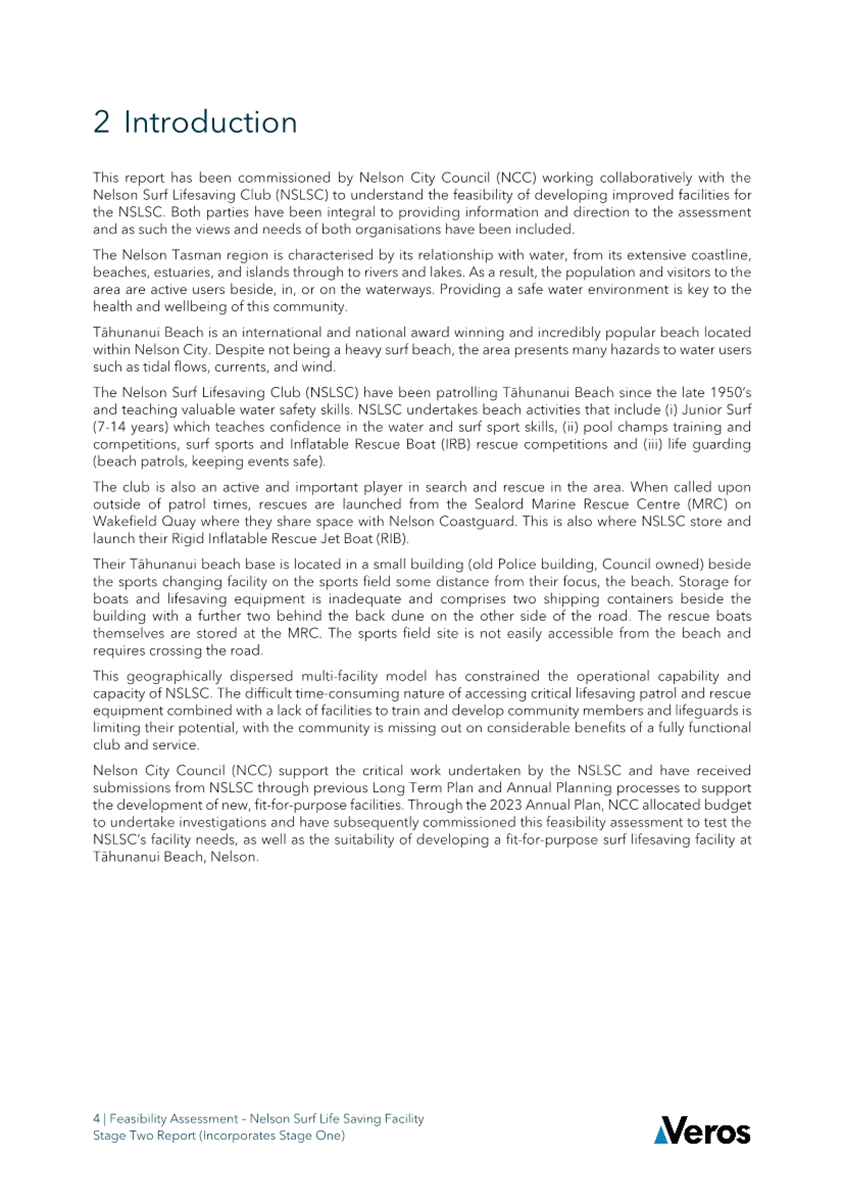








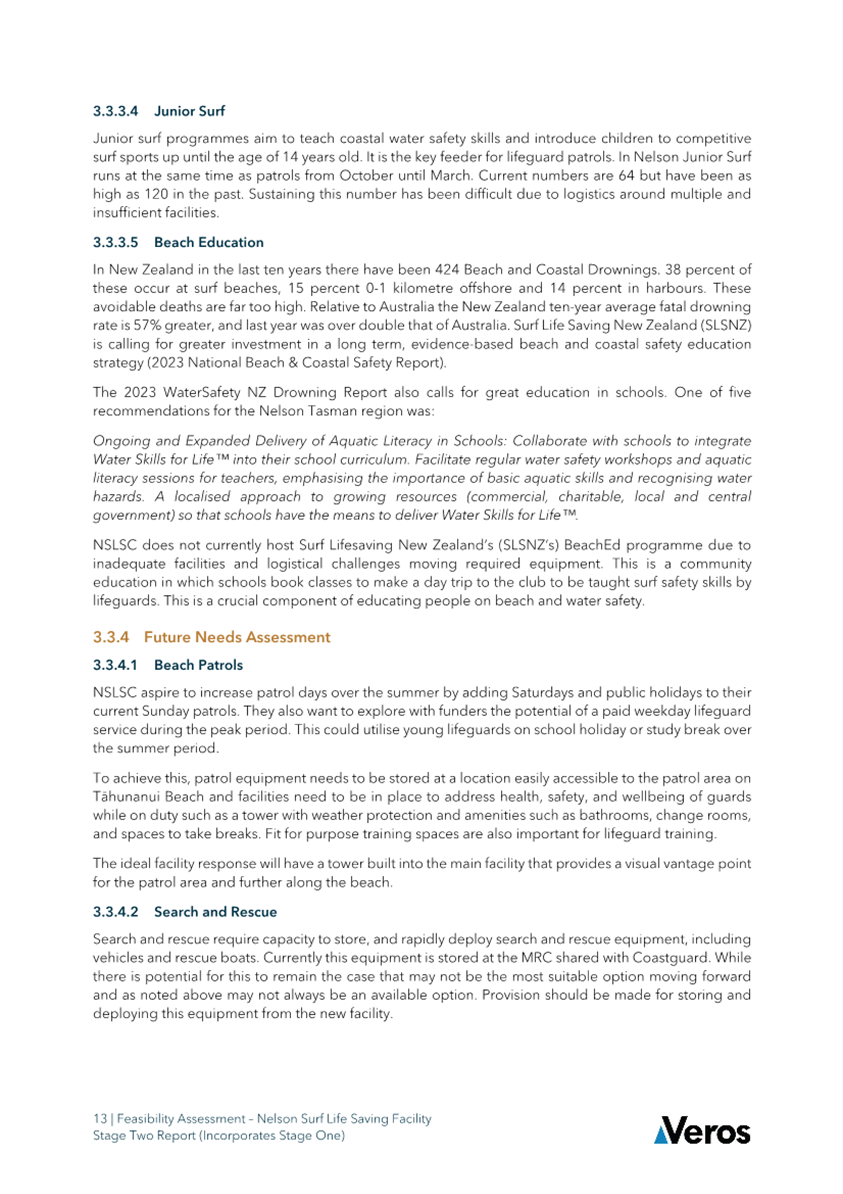












Item 11: Tāhunanui
Surf Life Saving Facility: Attachment 2

Item 12: Review of
Biosecurity Annual Report 2023/24 & Adoption of Operational Plan 2024/25
|

|
Council
7 November 2024
|
Report
Title: Review
of Biosecurity Annual Report 2023/24 & Adoption of Operational Plan 2024/25
Report
Author: Richard
Frizzell - Environmental Programmes Officer
Report
Authoriser: Mandy Bishop - Group Manager Environmental
Management
Report
Number: R28842
1. Purpose
of Report
1.1 To present a
summary of progress against the targets and objectives of the 2023-24
Operational Plan for the Tasman-Nelson Regional Pest Management Plan (TNRPMP);
and
1.2 To seek approval
of the TNRPMP Operational Plan for the 2024-25 financial year.
2. Summary
2.1 The
Tasman-Nelson Regional Pest Management Plan 2019–2029 was established
under the Biosecurity Act 1993 and provides a framework for the efficient and
effective management of specified organisms (declared ‘pests’)
across the Tasman and Nelson regions.
2.2 Nelson City
Council and Tasman District Council have operated a joint Regional Pest
Management Strategy/Plan, and have provided an Operational Plan, as required by
the Biosecurity Act since its introduction in 1993.
2.3 The Biosecurity
Act 1993 requires Council to prepare and review an Operational Plan for the
TNRPMP and report on its implementation to both Councils responsible for the
TNRPMP not later than five months after the end of the financial year, i.e.
before the end of November.
2.4 The TNRPMP
Operational Plan 2024-25 outlines the objectives and activities to be
undertaken this year in implementing the TNRPMP and needs to be approved by the
Council.
3. Recommendation
|
That the
Council
1. Receives
the report Review of Biosecurity Annual Report 2023/24 & Adoption of
Operational Plan 2024/25 (R28842) and its attachments; and
2. Approves,
subject to the approval of Tasman District Council, the Operational Plan 2024/25 for the Tasman-Nelson
Regional Pest Management Plan.
|
4. Background
4.1 Tasman District
Council is the management agency for the joint TNRPMP. Section 100B (2(a)) of
the Biosecurity Act 1993 requires the management agency to prepare an
Operational Plan for the TNRPMP and then review that Plan annually and report
on its implementation to both Councils responsible for the TNRPMP. Nelson City
Council implements the Operational Plan for the Nelson region and reports to
Tasman District Council as the management agency for the TNRPMP.
4.2 There are five
types of pest management programmes to be carried out under the TNRPMP. These
are summarised below along with a number of key projects that highlight the
range of activities covered in the programme:
4.2.1 Exclusion pest programme –
preventing 12 high threat pests from establishing in the Tasman and Nelson
regions.
4.2.2 Eradication pest programme
– eliminating 24 high threat pests from the regions (or parts of a
region).
4.2.3 Progressive containment pests
programme – containing and reducing the extent of seven pest plants
across the regions.
4.2.4 Sustained control pest programme
- ongoing control of 23 widespread pest plants and other organisms to reduce
their impacts and spread to other properties.
4.2.5 Site-led pest programmes –
control of named pests to reduce their impacts on natural biodiversity values
at specific sites. There are three key sites or places covered by the TNRPMP,
all of them are in the Tasman District Council region.
4.3 The Operational
Plans are based on the pests and programmes contained in the TNRPMP outlined
above along with the requirements of the National Policy Direction for Pest
Management 2015.
4.4 The 2023-24
TNRPMP Operational Plan was approved by Council at the 9 November 2023 meeting.
4.5 The 2024-25
Operational Plan outlines the objectives and activities to be undertaken when
implementing the TNRPMP for this financial year.
4.6 Nelson City
Council and Tasman District Council participate in the Top of the South Marine
Biosecurity Partnership (TOSMBP) along with Marlborough District Council and
the Ministry for Primary Industries (MPI). Greater Wellington Regional Council
joined this Partnership in July 2023. This continues to be an effective forum
through which to prepare for, and respond to, marine pest incursions, including
TNRPMP species.
4.7 In addition to
meeting its obligations under the TNRPMP, the Council undertakes extensive
control of plant and animal pests that are not included in the TNRPMP, but
which threaten ecological values on Council land or important areas for
biodiversity, including Significant Natural Areas.
5. Discussion
Report on TNRPMP Operational Plan 2023-24
5.1 Progress
against the targets in the Operational Plan 2023-24 are provided in Attachment
1. A summary of actions undertaken and progress relevant to Nelson is provided
below.
Exclusion pests
5.2 Biosecurity
Officers from both Nelson City Council and Tasman District Council continued
surveillance monitoring and investigation to check and prevent 12 exclusion
pests becoming established in the region: Cape tulip, Chilean needle grass,
hornwort, Indian myna, Johnson grass, Koi carp, Phragmites, rooks,
Senegal tea, velvetleaf, wallabies and water hyacinth.
5.3 Biosecurity
NZ reported an instance of Phragmites seeds present in a shipping
container of orchard equipment from Australia. The seed was discovered when the
container was opened at Solly’s Depot at Tahunanui. On discovery, the
container was moved inside the warehouse, where it was decontaminated.
Surveillance was carried out at this site, and two sites in Tasman where the
containers contents were distributed. No Phragmites were found, and
surveillance will continue each spring and summer at these sites until 2027.
5.4 A
reported sighting of a wallaby near the Rai Saddle was meticulously
investigated using trail cameras and specialised detection dogs but no evidence
was found.
Eradication
pests
5.5 Twelve
of the 24 eradication pests occur in Nelson. Apart from Gambusia, these
are generally on track to be eradicated over the duration of the TNRPMP (i.e.
by 2029). Further surveillance and monitoring of boneseed, wilding kiwifruit
and Himalayan balsam is required to determine if total eradication is on track
for these pest plants.
5.6 The
Department of Conservation (DOC) reports that the DOC-led eradication of pest
fish is making slow progress with the pests remaining largely contained within
their known areas. A feasibility study concluded that Gambusia
eradication is not technically feasible with the current techniques and focus
will now move to preventing spread. Reactive environmental DNA (eDNA) water
sampling in response to a koi carp report at Miyazu Gardens dis not detect koi
carp. Nelson appears to remain free of wild populations of Perch, Rudd, and
Tench.
5.7 The
Council continued to support the TOSMBP, with a focus on eradicating Sabella.
No new marine species to New Zealand or Sabella incursions were detected
in Nelson by dive surveys, giving confidence that the intensive management of
Sabella is leading to eradication.
5.8 Cathedral
bells are known at a number of new sites, with active sites in Dodson Valley.
However, the long-term trend indicates progress is being made.
5.9 There
are two climbing spindleberry sites in Nelson which are both under control and
eradication is on track. Analysis of drone surveillance has not revealed any
new sites.
5.10 There
are two existing sites and one new site of Himalayan Balsam in Nelson. Although
the infestations appear to be under control and moving towards eradication,
further surveying is required to determine if total eradication is on track.
5.11 One
new Madeira vine site was recorded in Nelson, but very close to existing
infestations. Active control at these sites aims to achieve zero density. Zero
density is a term used when there are no known live animals or plants remaining
of the pest species at the end of annual pest control operations in the area of
concern. It is used when there is a risk of reinfestation, e.g. from viable
dormant seed. It has a status slightly lower than eradication and recognises
potential imperfections in surveillance, monitoring, and detection.
5.12 Work
has progressed to control Taiwan cherry in the Nelson region. Management has
been directed toward a large source infestation in Atawhai. Follow up
surveillance was undertaken where trees were identified during surveys in
2021-22. Control was carried out in North Nelson working south into Dodson
Valley and Nelson Central as far south as Enner Glynn. A total of 212 mature
trees were controlled, juvenile plants were controlled on 13 properties, and
saplings on seven properties. Eradication is still considered possible if all
sites with seedlings are monitored and controlled each year.
5.13 There
is one active site of saffron thistle in the Maitai Valley, site management has
resulted in the overall increasing trend at zero levels. The long-term trend
indicates progress is being made.
5.14 There
are two new wilding kiwifruit sites and one reinfested site in Nelson. The number of new and reinfested sites outweigh the number
of sites moving to zero density, indicating a lack of progress. As there
are no commercial growers in Nelson the main risk is as an environmental weed.
Recorded sites will be followed up with action in 2024-25.
5.15 DOC
leads the Spartina surveillance. No new Spartina sites were
discovered during this period. There are currently three sites under
surveillance (active within the last three years) and 21 historic sites being
monitored in Nelson. Two of the three surveillance sites are in Tahunanui and
the other on the Nelson Boulder Bank.
5.16 Both
Nelson City and Tasman District remain free of wild populations of Indian
Ring-necked Parakeet. Nelson remains free of Bathurst Bur, Boxthorn, Egeria,
Entire Marshwort and Asiatic Knotweed.
Progressive Containment pests
5.17 In
Nelson the Progressive Containment pest programmes for Nasella tussock,
Variegated thistle and White edged nightshade have been effective, and
indications are that these pests are well on the way to being contained within
their respective containment zones.
5.18 Nelson
appears to remain free of Bomarea, Chinese Pennisetum, Purple
Loosestrife, and Reed Sweet Grass.
5.19 An
increased number of individual Nasella tussock plants were found within the
existing infestation area (outside the containment), but the level of incursion
is low. No checks have been conducted inside the containment area since the
landowner (DOC) stopped work at the site due to health and safety risks.
Roadside surveillance in the containment zone has not detected any new sites.
5.20 For
White-edged nightshade the level of new sites discovered outside containment is
balanced by the increase in the number of sites at zero density. A new site at
Best Island is a monitored location where contaminated flood debris was moved
from Nelson city. Progress was made on last year and the long-term trend
remains optimistic. Inside containment the seed bank remains very active on
disturbed sites. Post flood slips and forestry harvest are strongly associated
with White-edged nightshade occurrence.
5.21 Proactive
management of Variegated thistle is being undertaken by land occupiers and
owners. The control history shows that new incursions can be effectively
managed, and the long-term trend remains positive. The detection of new sites
indicates surveillance is effective.
Sustained Control pests
5.22 The ongoing control of 23
widespread pests to reduce their impacts and spread to other properties
continued under the Sustained Control programme, with many of the sustained
control areas located in Tasman District.
5.23 The
known number of Chocolate vine, Gunnera and Yellow-flag iris sites continues to
grow. The growth is closely balanced with the number of sites moving to zero
density. The overall trend remains positive and infers that spread is being
effectively managed.
5.24 The
high level of surveillance for Queensland poplar continues to identify new
sites. However, the movement of sites to zero density outweighs the number of
new incursions. The trend remains positive, indicating that spread is being
effectively managed.
Site-led
pests
5.25 There
are no site-led pest programmes under the TNRPMP in the Nelson region.
Pest management in addition to TNRPMP 2023-2024
5.26 In
addition to controlling pests in the TNRPMP, the Council also undertook
extensive programmes directed at organisms not listed in the TNRPMP, but which
threaten ecological values on Council land or important areas for biodiversity
or have very invasive characteristics with the potential to become widespread
(emerging pests).
5.27 Emerging
pest plants targeted included water celery, Vietnamese parsley, moth plant and
blue passionflower. During 2023-24 these were being considered for inclusion in
the TNRPMP as outlined below.
5.28 A considerable amount of
work has been undertaken by both Councils on a limited review of the TNRPMP,
which was completed recently with the amended TNRPMP being adopted by Tasman
District Council on 12 September 2024 and by Nelson City Council on 10 October
2024. There are 17 additional species included in the TNRPMP (blue
passionflower, moth plant, pampas, water celery, Vietnamese parsley, and 12
wilding conifer species), and four amendments to existing species rules
(Sabella, feral cats, boneseed, and koi carp). Biosecurity Officers have been
supporting this process, and a proposal was presented to both Councils on 14
December 2023. This was adopted by both Councils for notification and
submissions were sought from 28 February to 28 March 2024. 101 submissions were
received, and 12 submitters spoke in hearings to the Regional Pest Management
Joint Committee on 27 May 2024. Deliberations by the Joint Committee were held
on 11 July 2024.
Operational
Plan 2024-2025
5.29 The Operational Plan for 2024-25
sets the programme of work that has already been committed to via the TNRPMP
and is budgeted (Attachment 2). It has been reviewed by biosecurity staff from
Nelson City Council and Tasman District Council and outlines a programme
consistent with the previous year. Findings from the review of the 2023-24
Operational Plan have been considered and priority given to species where
progress is yet to be determined or not being made.
5.30 Delivery
of the TNRPMP focusses on the listed species in each of the programmes. In
addition to these listed pests, officers investigate and respond to new and
emerging pests and support Biosecurity NZ with known unwanted organisms not yet
established in our region.
5.31 The
total approved budget for implementing the 2024-25 Operational Plan for the
Nelson region is $312,000.
6. Options
6.1 Officers
recommend option 1 to approve the 2024-25 Operational Plan.
|
|
|
Advantages
|
· Continue work to
effectively implement the Regional Pest Management Plan
· Meets Biosecurity Act
1993 requirements
· Work is
budgeted for
|
|
Risks and Disadvantages
|
· None
|
|
|
|
Advantages
|
· Provides
for changes if deemed inconsistent with the Regional Pest Management Plan
|
|
Risks and Disadvantages
|
· Creates
delays/reprioritisation of work
· Potential
additional costs
· Potential
significant risk of not controlling pest plants and animals
· May not meet
Biosecurity Act 1993 requirements
|
7. Conclusion
7.1 This report details
the implementation of the Tasman-Nelson Regional Pest Management Plan in Nelson
and associated biosecurity matters.
7.2 The TNRPMP
Operational Plan 2024-25 provides for a consistent and efficient approach to
biosecurity management across both Nelson and Tasman. Focus this year will be
on implementing new rules resulting from the TNRPMP partial review, improving
the pest inspection database managed by Tasman District Council, identifying
priority sites for surveillance, and supporting the delivery of partner
agencies (Tasman District Council and DOC). The Operational Plan ensures the
Council meets its statutory obligations under the Biosecurity Act 1993.
Programmed work meet budget, as set out in the Council’s Long Term Plan.
8. Next Steps
8.1 The TNRPMP
Operational Plan 2024-25 and the review of the 2023-24 Operational Plan will be
reported to Tasman District Council’s Environment & Regulatory
Committee meeting on 21 November 2024 as a joint partner and the management
agency for the TNRPMP.
8.2 Both Councils
will continue to implement the TNRPMP Operational Plan 2024-25.
Attachments
Attachment 1: Review of
Tasman-Nelson Regional Pest Management Plan Operational Plan 2023-24 ⇩
Attachment 2: Tasman-Nelson
Regional Pest Management Plan Operational Plan 2024-25 ⇩
|
Important considerations for decision making
|
|
Fit with Purpose of Local Government
The report and recommendations achieve a consistent
and cost-effective approach to pest management across the Nelson-Tasman
regions by working jointly with the Tasman District Council to meet the
requirements of the Biosecurity Act 1993. It also provides a valuable service
to the Nelson community, ensuring environmental and economic risks from pests
are effectively addressed and this contributing to the environmental
wellbeing of the community.
|
|
Consistency with Community Outcomes
and Council Policy
The report and recommendations detail implementation
of the Regional Pest Management Plan and align with the strategy vision of
“Enhancing community wellbeing and quality of life” by providing
a framework for efficient and effective pest management and making the best
use of available resources. This contributes to the Council’s following
Community Outcomes in particular:
· Our unique natural environment is healthy and
protected;
· Our urban and rural environments are
people-friendly, well-planned and sustainably managed.
|
|
Risk
The Operational Plan for 2024-25 will meet the
Council’s requirements under the Tasman-Nelson Regional Pest Management
Plan. Any changes would risk delaying the ongoing implementation of the Plan.text
|
|
Financial impact
This activity is already funded within the Council’s
Long-Term Plan and no additional funding is sought.
|
|
Degree of significance and level of
engagement
This matter is of low significance and no engagement
is planned. This annual report is a statement of accountability and while the
activity affects many landowners, it is delivery of statutory requirements.
The Operational Plan identifies programmed work which falls within budget
limits. The activity is important for those landowners who are involved with
managing pests, but approving the Operational Plan is not a significant
decision.
|
|
Climate Impact
Climate change has not been
considered within this report. However, it is acknowledged that climate
change will have implications for future biosecurity risks and incursions and
response to these. Control of biosecurity threats will provide more native vegetation
growth in the future and increase carbon sequestration.
|
|
Inclusion of Māori in the
decision making process
No engagement with Māori has been
undertaken in preparing this report.
|
|
Delegations
The Council has power to make this decision under
section 100B of the Biosecurity Act 1993. The legal process that the Council
must follow to make this decision is to review the operational plan for its
Regional Pest Management Plan annually; and decide on appropriate amendments
to the operational plan.
This is a matter for Council.
|
Item 12: Review of Biosecurity Annual Report 2023/24 &
Adoption of Operational Plan 2024/25: Attachment 1




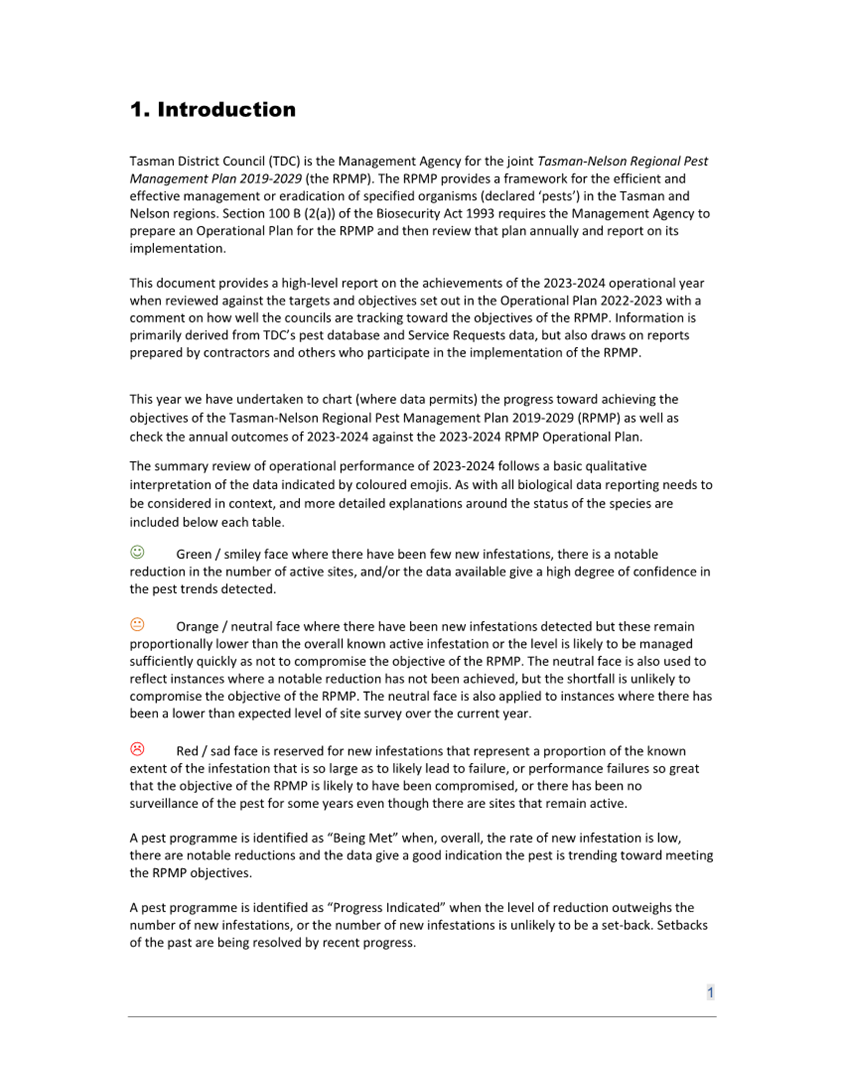




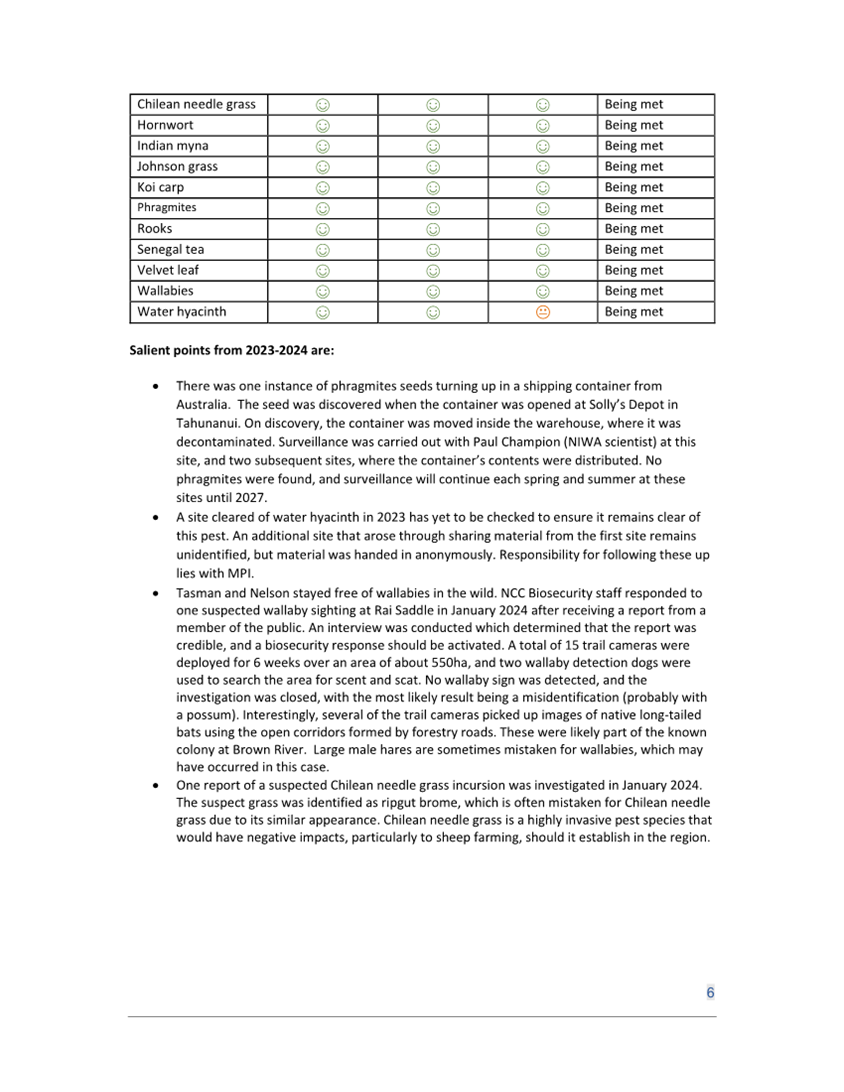






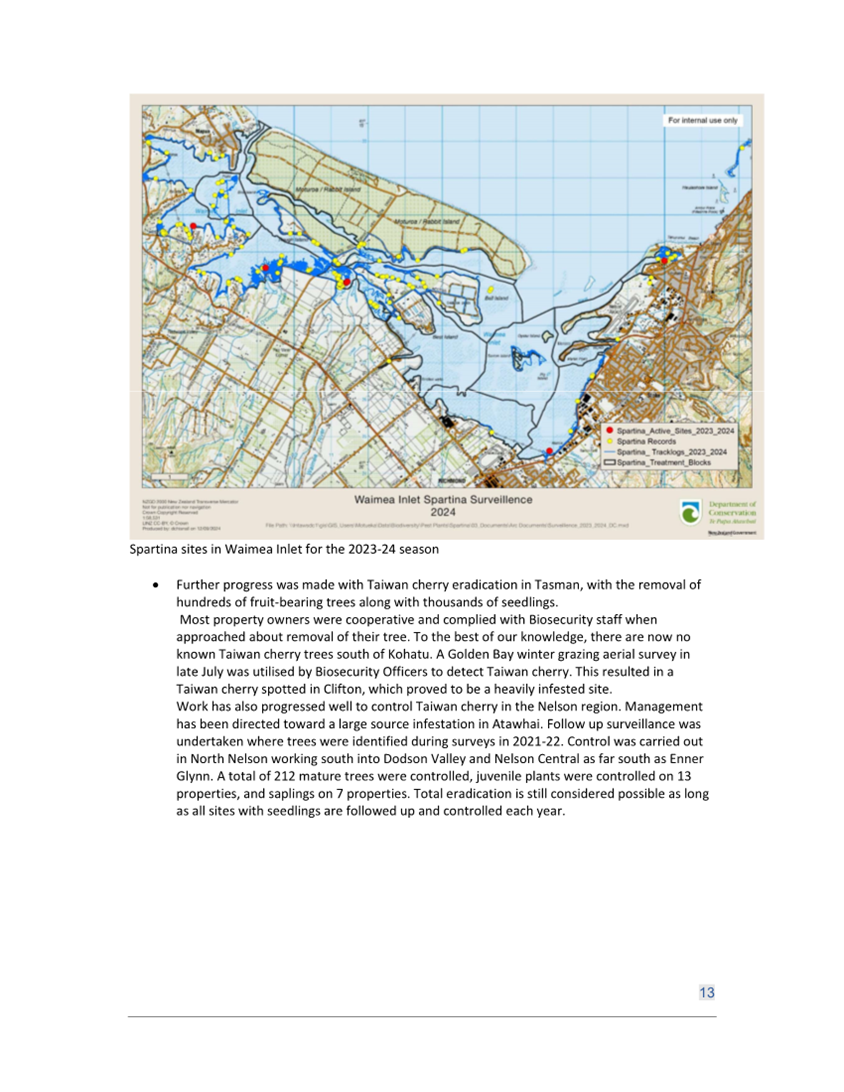





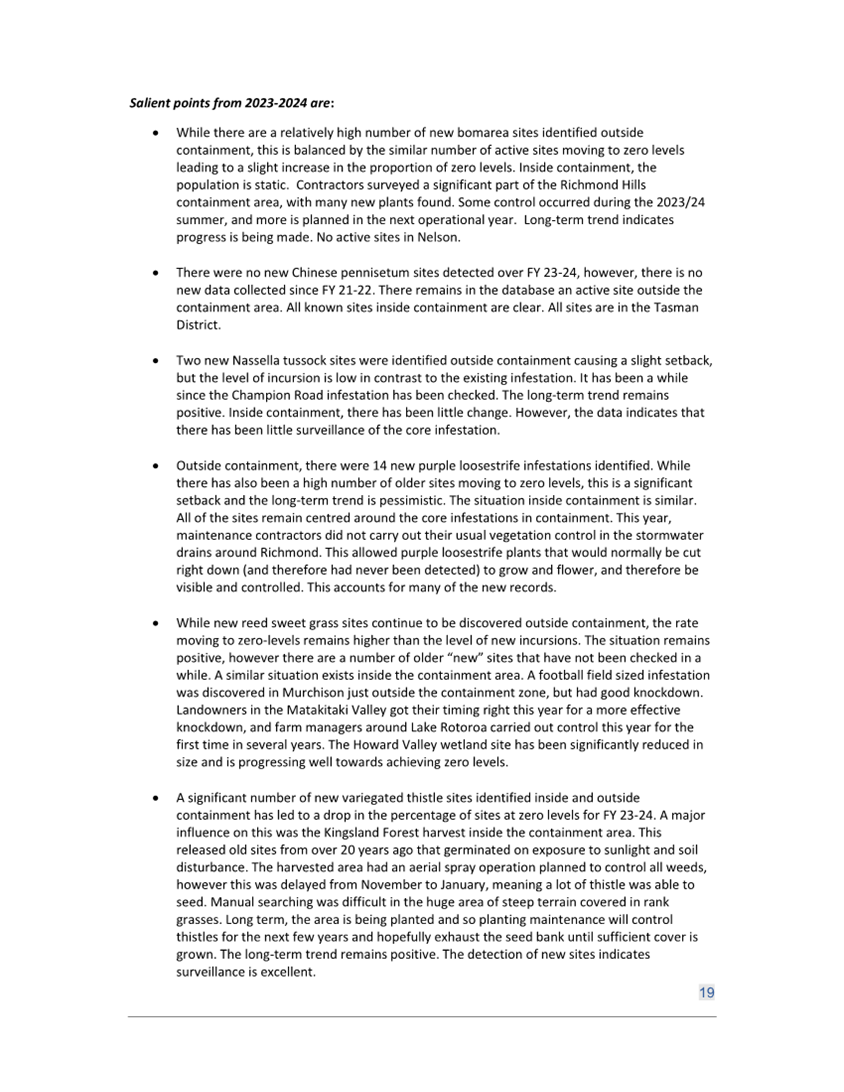
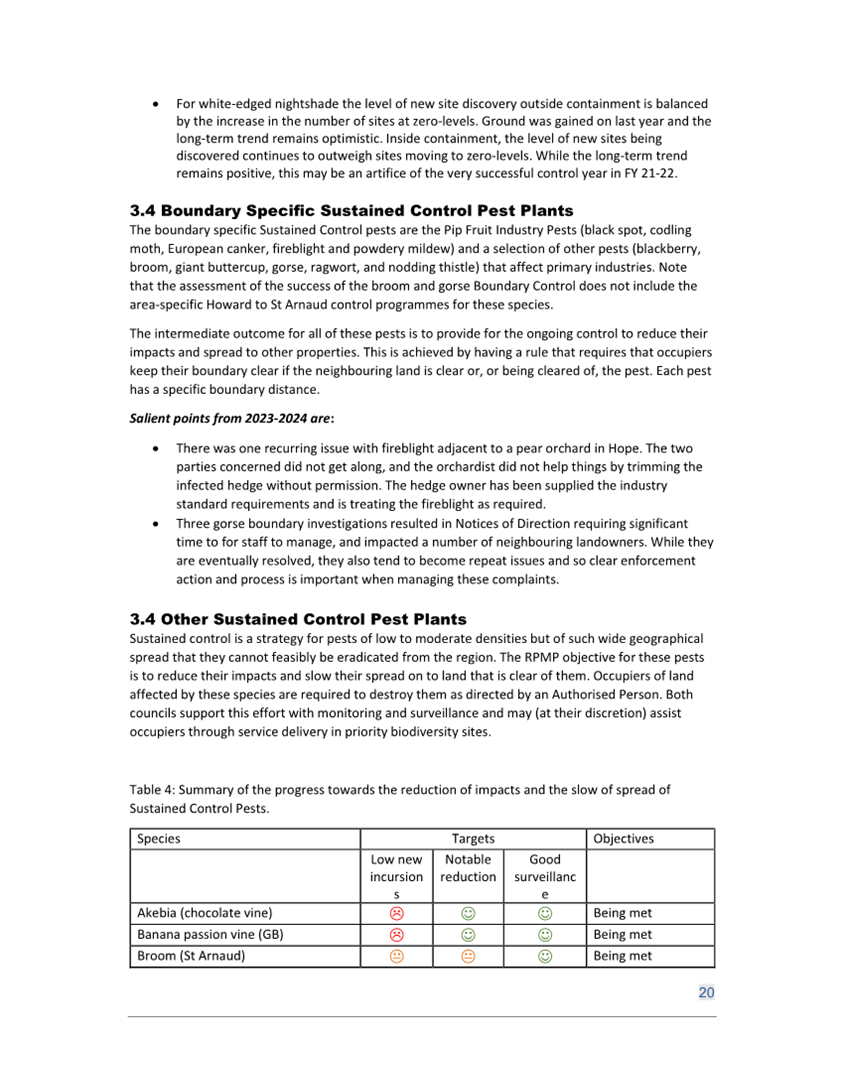



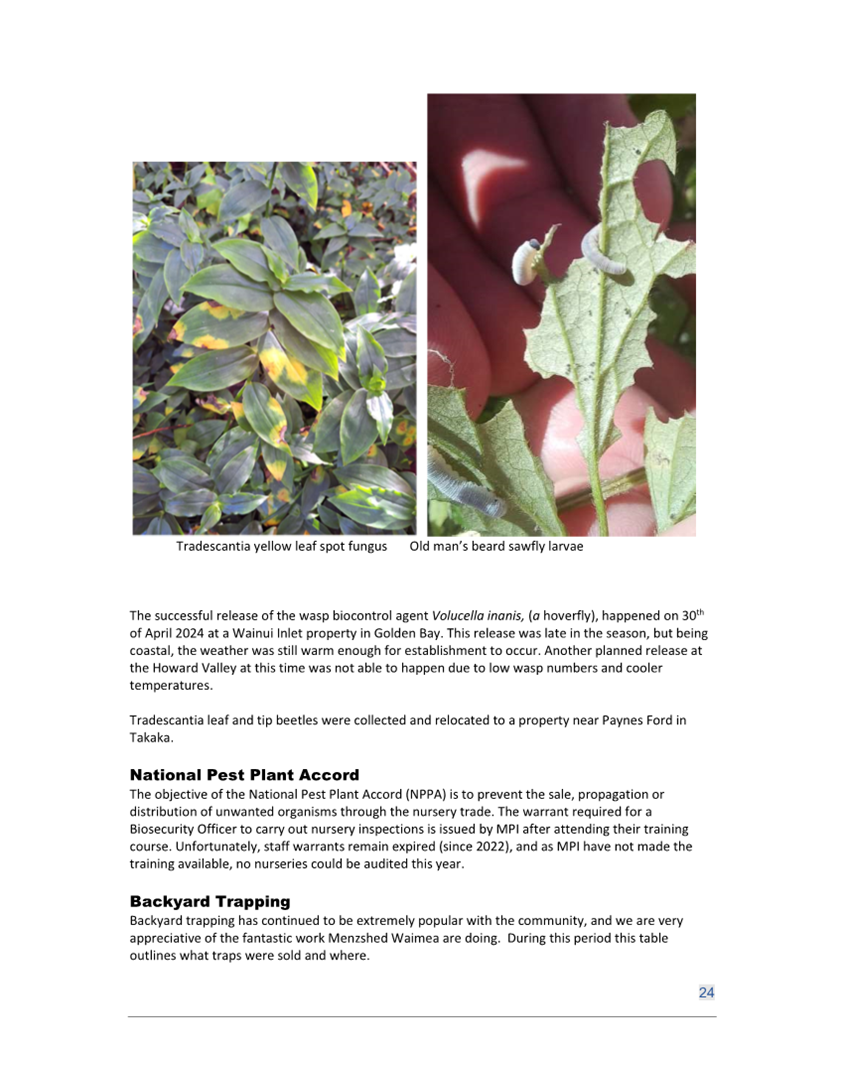





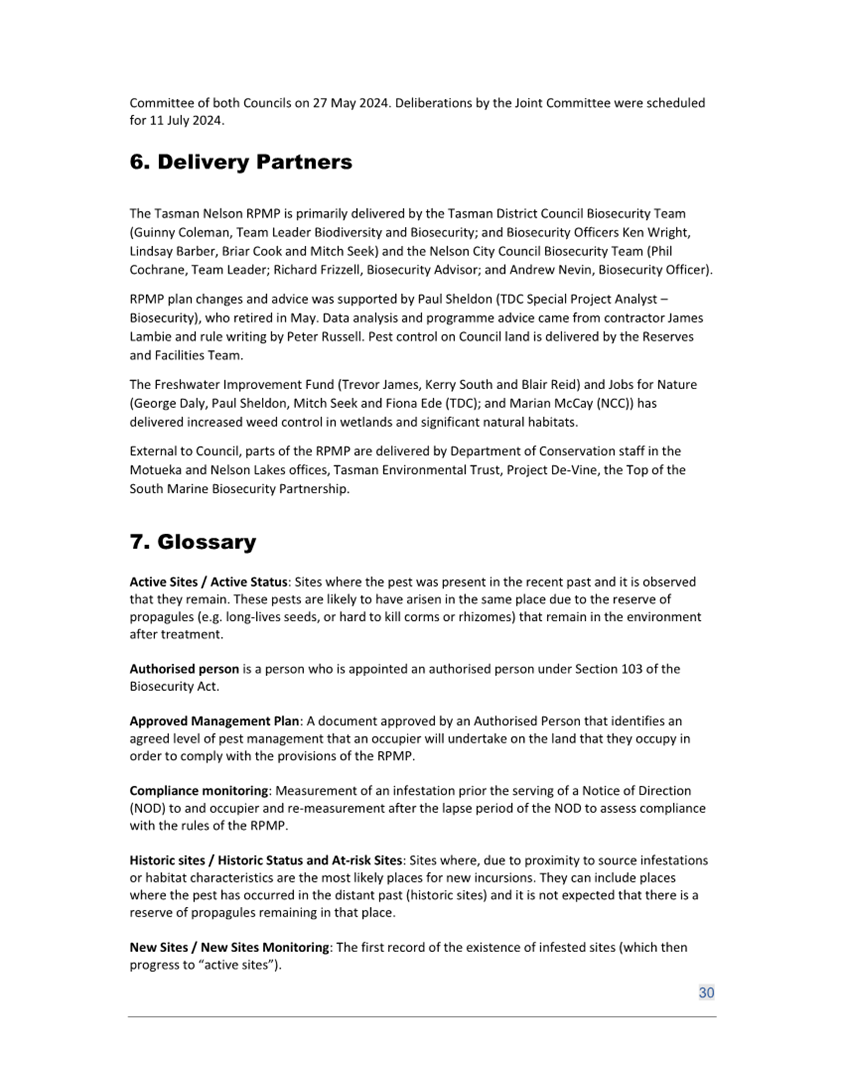





Item 12: Review of
Biosecurity Annual Report 2023/24 & Adoption of Operational Plan 2024/25:
Attachment 2



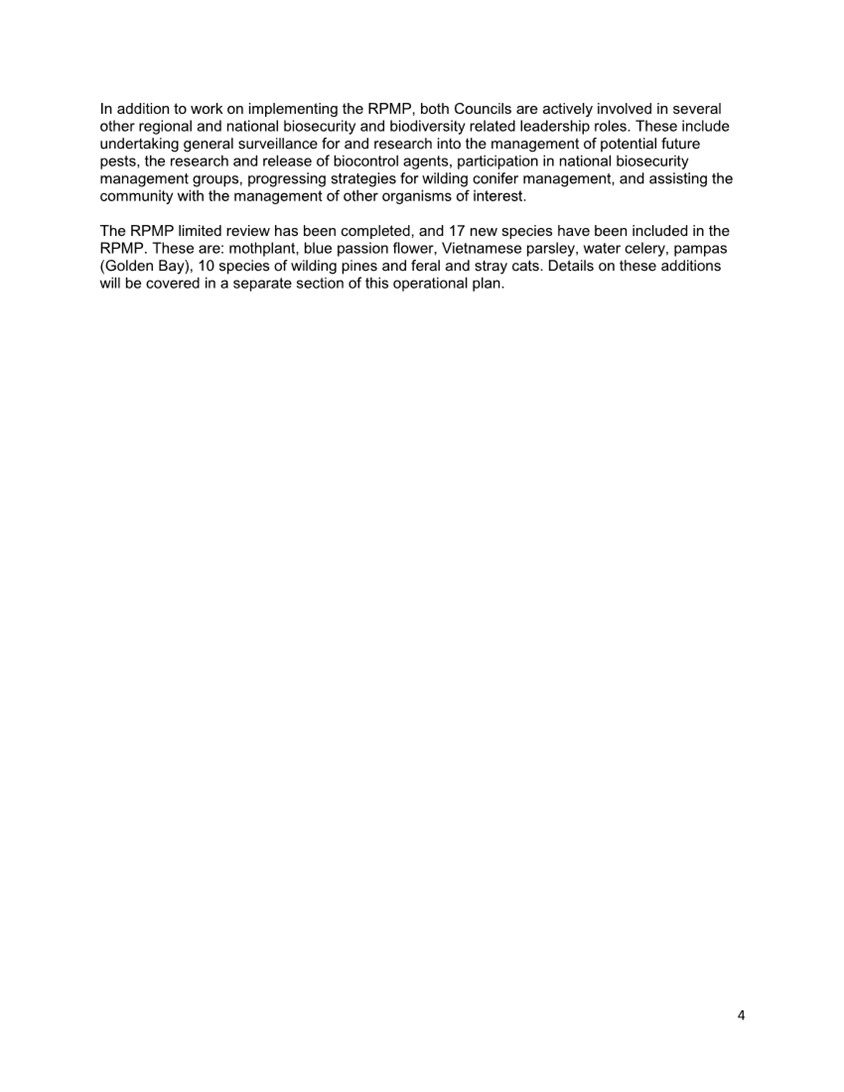



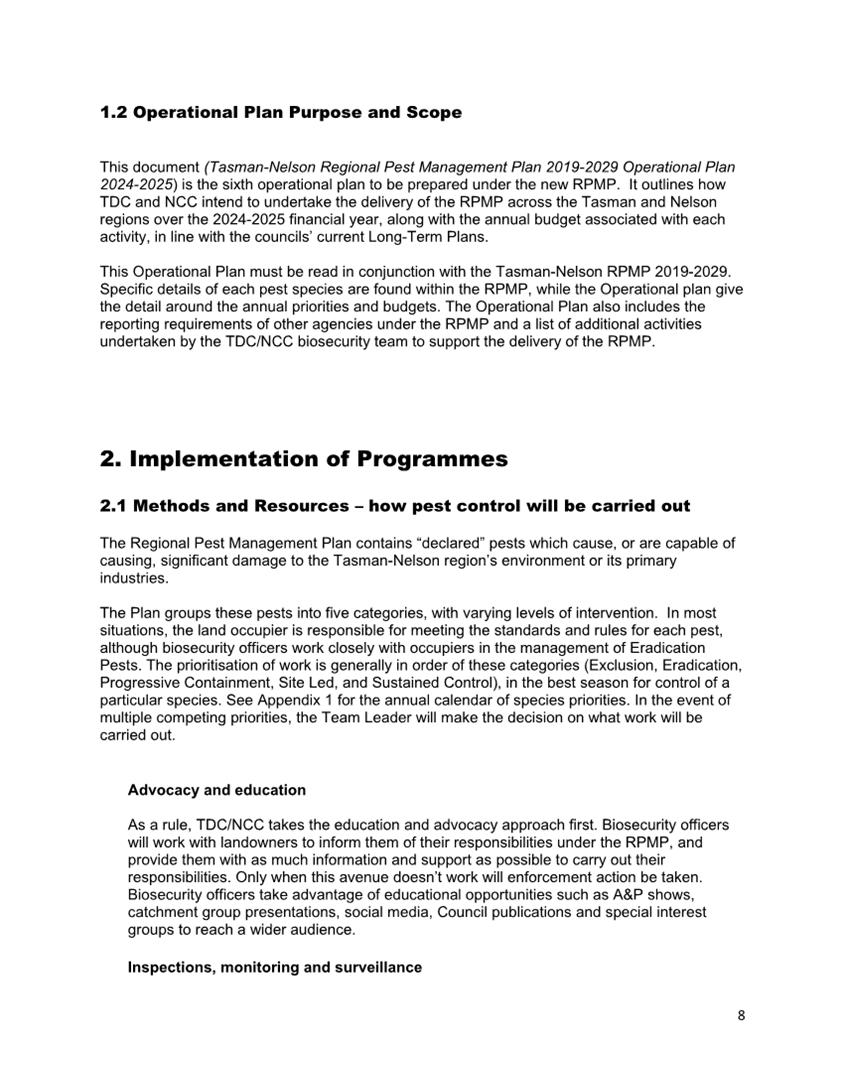


















Item 13: Adoption of
Environmental Management Activity Management Plan 2024 - 2034
|
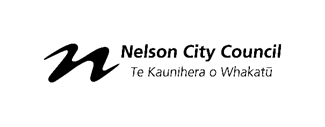
|
Council
7 November 2024
|
Report
Title: Adoption
of Environmental Management Activity Management Plan 2024 - 2034
Report
Author: Michelle
Joubert - Strategic Adviser Environmental Management
Report
Authoriser: Mandy Bishop - Group Manager Environmental
Management
Report
Number: R28851
1. Purpose
of Report
1.1 To adopt the
Environmental Management Activity Management Plan 2024 – 2034 (AMP)
following Long Term Plan 2024 – 2034 decisions.
2. Summary
2.1 Council approved
the draft AMP in October 2023 for the purposes of informing the LTP. The
LTP was adopted in June 2024 and the next step is to adopt the revised AMP.
3. Recommendation
|
That the
Council
1. Receives
the report Adoption of Environmental Management Activity Management Plan 2024
- 2034 (R28851) and its attachment; and
1. Adopts
the revised Environmental Management Activity Management Plan 2024 –
2034 (NDOCS-887727126-3304); and
2. Delegates
authority to His Worship the Mayor and Chief Executive to approve any minor
amendments required to the documents prior to the public release of the
Environmental Management Activity Management Plan.
|
4. Background
4.1 A workshop was
held with elected members to consider the draft AMP. The draft AMP
informed the development of the LTP, its consultation document and supporting
information.
4.2 Council
deliberated on the LTP submissions on 23 and 24 May 2024 and adopted the LTP on
27 June 2024. The draft AMP has been revised to reflect those decisions and is
ready for Council approval.
5. Discussion
5.1 The
Executive Summary of the revised AMP is
appended as an attachment to this report.
5.2 The
revised AMP will be published on Council’s website, 2024-34 Activity
Management Plans page https://www.nelson.govt.nz/council/plans-strategies-policies/2024-2034-activity-management-plans.
6. Key changes to
AMP
6.1 The AMP has been
updated to reflect the LTP in relation to the following:
6.1.1 Financial
Budgets.
6.1.2 Council’s
Vision, Priorities and Outcomes.
6.1.3 Levels
of Service.
6.2 Other minor
updates and edits have also been made that generally update work activities,
record minor changes to legislation, and fix typographical errors.
7. Options
7.1 Two options are
presented. Adopt the AMP, or not adopt the AMP and suggest changes. Officers
recommend option 1.
|
|
|
Advantages
|
· Implements
the decisions Council made following consultation and deliberations on the
Long Term Plan.
· Supports
delivery of recently adopted Long Term Plan.
|
|
Risks and Disadvantages
|
· Council would
not have an opportunity to make major changes to the document.
|
|
|
|
Advantages
|
· None
- this option would be appropriate if Council considered that the AMP does
not adequately reflect Council’s decisions on the Long Term Plan.
|
|
Risks and Disadvantages
|
· Further work
by staff and reconsideration of the AMPs by Council
|
8. Conclusion
8.1 The AMP has been
reviewed and revised to reflect all decisions made by Council in the LTP
2024-34 process, and now need to be adopted.
9. Next Steps
9.1 Following
adoption, the AMP will be uploaded to Council’s website, https://www.nelson.govt.nz/council/plans-strategies-policies/2024-2034-activity-management-plans.
Attachments
Attachment 1: Environmental
Management AMP - Executive Summary ⇩
|
Important considerations for decision making
|
|
Fit with Purpose of Local Government
The LTP development
and consultation process leading to the final AMP enabled Council to
democratically make decisions on behalf of the community, and to consider its
services, work programme and budgets in terms of the social, economic,
cultural and environmental wellbeing of the community.
Adopting the AMPs fits
with the purpose of local government as this/these documents set out the
services Council intends to provide, how these services will be measured, and
how each service will be funded.
|
|
Consistency with Community Outcomes
and Council Policy
Implementing the AMP enables Council to support delivery of
all Council’s Community Outcomes.
|
|
Risk
Adopting the AMP is a low risk as it
has been through a thorough development process and reflects the relevant
Long Term Plan decisions. Adopting the AMP helps Council
mitigate risks by providing a clear plan to achieve levels of service,
address relevant focus areas and sets activity budgets.
There are continued areas
of uncertainty that present risks to the 10 year work programme, such as from
legislative and regulatory change, climate change and natural disasters, and
the economic environment.
|
|
Financial impact
Council considered the financial impact of the content of
the AMP during the preparation of the Long Term Plan and during deliberations
on submissions.
|
|
Degree of significance and level of
engagement
The decision on the content of the AMP is of moderate
significance to residents and ratepayers of Nelson because of the financial
and services implications. The public consultation undertaken on the Long
Term Plan, using a special consultative procedure, ensured that Council had a
good understanding of the view of the public prior to deciding what services
and projects would be included in the final Long Term Plan and the AMP.
|
|
Climate Impact
The impact of climate change has
been considered as part of development of the AMPs. Some work
programmes in the AMPs contain expenditure to support Council to adapt to
climate impacts and reduce its emissions. The Long Term Plan consultation
process has allowed the community to provide feedback on Council’s
climate response budgets and activities.
|
|
Inclusion of Māori in the
decision making process
Engagement occurred with iwi during the draft AMP
preparation process and through an iwi summit on the Long Term Plan.
|
|
Legal context
Council’s
decision must be made in accordance with Part 6 of LGA2002.
Council
has the power to make these decisions in accordance with sections
76
of the Local Government Act 2002.
|
|
Delegations
The decisions in this
report are within Council’s area of responsibility.
|
Item 13: Adoption of Environmental Management Activity
Management Plan 2024 - 2034: Attachment 1


Item 14: Adoption of
the Property Activity Management Plan 2024-2034
|

|
Council
7 November 2024
|
Report
Title: Adoption
of the Property Activity Management Plan 2024-2034
Report
Author: Tess
Harvey - Property Asset Planner
Report
Authoriser: Nikki Harrison - Group Manager Corporate
Services
Report
Number: R28770
1. Purpose
of Report
1.1 To adopt the
Property Activity Management Plan 2024-2034 (AMP).
2. Summary
2.1 This report
seeks approval for the Property Activity Management Plan (AMP) 2024-2034.
3. Recommendation
|
That the
Council
1. Receives
the report Adoption of the Property Activity Management Plan 2024-2034 (R28770)
and its attachment; and
2. Adopts
the revised Property Activity Management Plan 2024-2034 (NDOCs
714127617-20137); and
3. Delegates
authority to His Worship the Mayor and Chief Executive to approve any minor
amendments required to the document prior to the public release of the
Property Activity Management Plan 2024-2034.
|
4. Background
4.1 A workshop was
held with elected members to consider the Draft Property Activity Management
Plan (AMP) on 2nd June 2023 to inform the development of the Long
Term Plan 2024-2034, its Consultation Document and supporting information.
4.2 Council
deliberated on the submissions on the Long Term Plan 2024-2034 on 23 and 24 May
2024 and adopted the final Plan on 27 June 2024. The Property Activity
Management Plan (AMP) has been amended to reflect those decisions and is ready
for Council approval.
5. Discussion
5.1 An executive
summary of the revised Property Activity Management Plan (AMP) is contained in
attachment 1 to this report.
5.2 The revised AMP
(NDocs 714127617-20137) will be updated on the Council website, 2024-34
Activity Management Plans page 2024-2034
Activity Management Plans - Nelson City Council
5.3 The key changes
to the Property Activity Management Plan 2024-2034 (AMP) to ensure consistency
with the final Long Term Plan 2024-2034 are summarised as follows:
a) Community
Outcomes were updated to reflect Council decisions included in the LTP.
5.4 Other minor
updates and edits have also been made to the AMP.
a) Grammatical
and proofreading changes were made.
b) All
references to pending public consultation or subsequent decisions by council
have been removed or replaced with confirmation of the decision.
c) All
changes to legislation and national standards have been updated.
6. Options
6.1 Two options are
presented. Adopt the Property Activity Management Plan 2024-2034 (AMP) or not
adopt the Property Activity Management Plan 2024-2034 (AMP). Officers recommend
Option 1.
|
|
|
Advantages
|
· Implements the
decisions Council made following consultation and deliberations on the Long
Term Plan.
· Supports delivery of
the recently adopted Long Term Plan.
|
|
Risks and Disadvantages
|
· Council would not have
an opportunity to make major changes to the document(s).
|
|
|
|
Advantages
|
· This option
would be appropriate if Council considered that the AMP does not adequately
reflect the Council’s decisions on the Long Term Plan.
|
|
Risks and Disadvantages
|
· This option
would require further work by staff and reconsideration of the AMP by
Council.
|
7. Conclusion
7.1 The Property
Activity Management Plan 2024-2034 (AMP) has been reviewed and updated
following the adoption of the Long Term Plan 2024-2034 and now needs to be
adopted.
8. Next Steps
8.1 Following
approval of the AMP, the final AMP will be uploaded to Council’s website https://www.nelson.govt.nz/council/plans-strategies-policies/2024-2034-activity-management-plans.
Attachments
Attachment 1: Property
Activity Management Plan 2024-2034 Executive Summary ⇩
|
Important considerations for decision making
|
|
Fit with Purpose of Local Government
The LTP development and consultation process leading
to this final AMP enabled Council to democratically make decisions on behalf
of its community, and to consider its services, work programme and budgets in
terms of the social, economic, cultural and environmental wellbeing of its
community.
Adopting the AMP fits with the purpose of local
government as this document sets out the services Council intends to provide,
how these services will be measured, and how each service will be funded.
|
|
Consistency with Community Outcomes
and Council Policy
Implementing the AMP is a key method used by Council
to support delivery of all Council’s community outcomes.
|
|
Risk
Adopting the AMP is a low risk as it has been
through a thorough development process and reflects the relevant Long Term
Plan decisions. Adopting the AMP helps Council mitigate risks by providing a
clear plan to achieve levels of service, address relevant focus areas and
sets activity budgets for operations, maintenance, renewals and capital
expenditure.
There are continued areas of uncertainty that
present risks to the 10-year work programme, such as from legislative and
regulatory change, climate change and natural disasters, and the economic
environment (as outlined in the assumptions contained in the AMPS).
|
|
Financial impact
The financial impacts of the content of the AMP have
been considered by Council during the preparation of the Long term Pan and
during deliberations on submissions.
|
|
Degree of significance and level of
engagement
The decisions on the content of the AMP are of
moderate significance to residents and ratepayers of Nelson because of the
financial and services implications. The public consultation undertaken on
the Long Terms Plan, using a special consultative procedure, ensured that
council had a good understanding of the view of the public prior to deciding
what services and projects would be included in the financial Long Term Plan
and the AMP.
|
|
Climate Impact
The decisions in this report
will impact on Council’s ability to proactively respond to the impacts
of climate change now or in the future. The impact of climate change has been
considered as part of the impact of the AMP. Some work programmes in the AMP
contain expenditure to support Council to adapt to climate impacts and reduce
its emissions. The Long Term Plan consultation process has allowed the
community to provide feedback on the Council’s climate change response
budgets and activities.
|
|
Inclusion of Māori in the
decision making process
Engagement has occurred with iwi during the Draft
AMP preparation process and through an iwi summit on the Long Term Plan.
|
|
Legal
context
Council’s decision must
be made in accordance with Part 6 od LGA2002.
Council has the power to make
these decisions in accordance with section 76 of the Local Government Act
2002.
|
|
Delegations
The decisions contained in this
report are within Council’s area of responsibility.
|
Item 14: Adoption of the Property Activity Management
Plan 2024-2034: Attachment 1

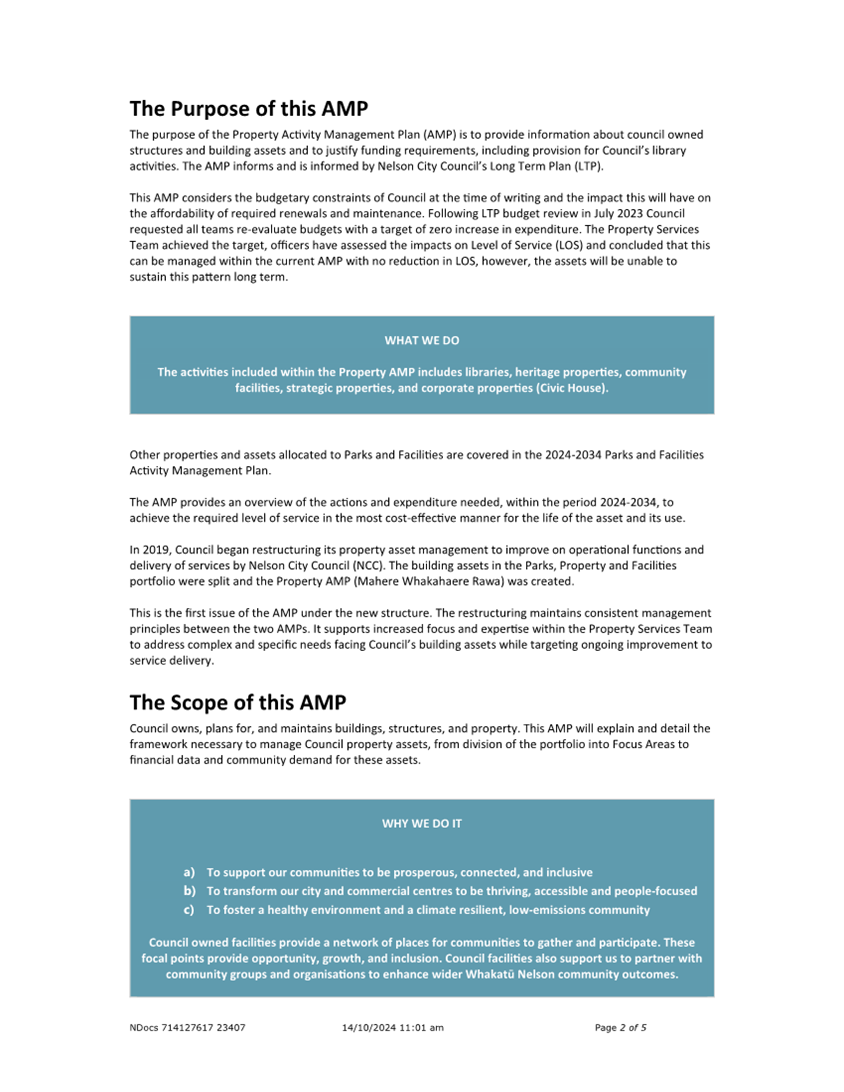



Item 15: Exclusion of the Public
Confidential Business
21. Exclusion of the Public
Recommendation
That the Council
1.
Excludes the public from the following parts of
the proceedings of this meeting.
2.
The general subject of each matter to be
considered while the public is excluded, the reason for passing this resolution
in relation to each matter and the specific grounds under section 48(1) of the
Local Government Official Information and Meetings Act 1987 for the passing of
this resolution are as follows:
|
Item
|
General subject of each matter to be
considered
|
Reason for passing this resolution in
relation to each matter
|
Particular interests protected (where
applicable)
|
|
1
|
Council
Meeting - Confidential Minutes - 10 October 2024
|
Section
48(1)(a)
The public
conduct of this matter would be likely to result in disclosure of information
for which good reason exists under section 7.
|
The withholding of the information is necessary:
· Section 7(2)(a)
To protect the privacy of
natural persons, including that of a deceased person
· Section 7(2)(i)
To enable the local
authority to carry on, without prejudice or disadvantage, negotiations
(including commercial and industrial negotiations)
· Section 7(2)(h)
To enable the local
authority to carry out, without prejudice or disadvantage, commercial
activities
|
|
2
|
Poll of
electors in 2025 - implications of non-compliance
|
Section
48(1)(a)
The public conduct of this
matter would be likely to result in disclosure of information for which good
reason exists under section 7
|
The withholding of the information is necessary:
· Section 7(2)(g)
To maintain legal
professional privilege
|
|
3
|
Nelmac
Ltd – Appointments to Board of Directors
|
Section
48(1)(a)
The
public conduct of this matter would be likely to result in disclosure of
information for which good reason exists under section 7
|
The withholding of the information is necessary:
· Section 7(2)(a)
To protect the privacy of
natural persons, including that of a deceased person
|
|
4
|
Statement
of Expectations 2025/26 - The Suter Art Gallery Te Aratoi o Whakatū
Trust
|
Section
48(1)(a)
The public conduct of this
matter would be likely to result in disclosure of information for which good
reason exists under section 7
|
The withholding of the information is necessary:
· Section 7(2)(i)
To enable the local
authority to carry on, without prejudice or disadvantage, negotiations
(including commercial and industrial negotiations)
· Section 7(2)(j)
To prevent the disclosure
or use of official information for improper gain or improper advantage
|
|
5
|
Trustee
Rotation - City of Nelson Civic Trust
|
Section
48(1)(a)
The public conduct of this
matter would be likely to result in disclosure of information for which good
reason exists under section 7
|
The withholding of the information is necessary:
· Section 7(2)(a)
To protect the privacy of
natural persons, including that of a deceased person
|
 Notice of the Ordinary meeting of
Notice of the Ordinary meeting of


















































































































































































































